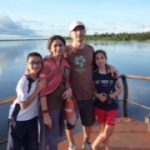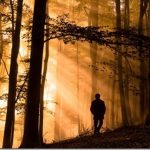Here’s space for STORIES. Story-telling: the time-honoured way to explain ones-self to the ‘other’
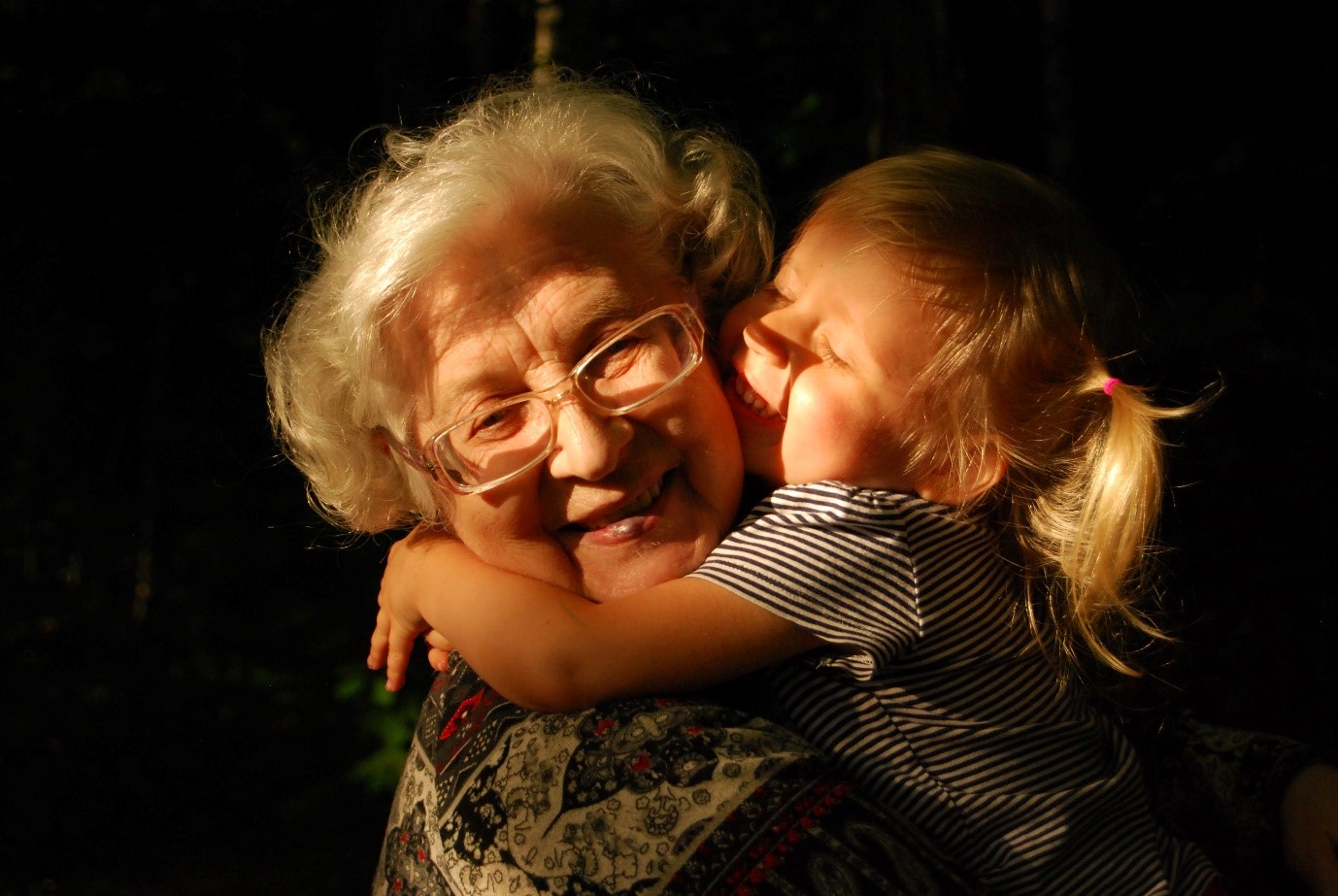
A Therapeutic Journey
Jan Trewartha
I trained nearly thirty years ago as a massage therapist. Before that I was a State Registered Nurse, who had left nursing and moved into magazine writing. I left and went travelling, only to discover my passion-to-be at a New Year’s festival under blue gum trees about 100 miles south of Sydney, Australia when I was given a life-changing massage. On returning to the UK, I trained and have been in practice ever since.
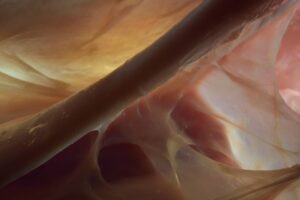
Over the years I’ve learned that the source of apparently muscular, and even nerve or circulatory problems can often be traced to the fascia, a connective tissue that sheaths every structure in the human body, macro to micro, organ to cell. It takes different forms, sometimes like a sheath over the muscle, sometimes like cobwebs; it changes form according to the function required of it.
Fascia Research Society:
Photo by Thomas Stephan
The fascia can be seen clearly on this lamb shank, the sheath of tissue covering the muscle.

Learning about the miracle that is fascia changes how therapists work, enabling us to create a more permanent effect than with massage. With the right approach, the fascia will let go of any restrictions that might have been caused by Repetitive Strain Injury, scarring, falls and other accidents, or any of a variety of injurious daily habits such as carrying a handbag on one shoulder.
Personally, I’ve become a specialist in scars and adhesions, helping with a light touch approach called Sharon Wheeler’s ScarWork, to take the tension out of scars, integrate the damaged fascia into the 3D fascial network, and consequently often relieve pain, discomfort and mobility issues.

Emergency appendectomy 7 years ago. Feels discomfort behind navel / pubis. 1 x 2 hour session with ScarWork
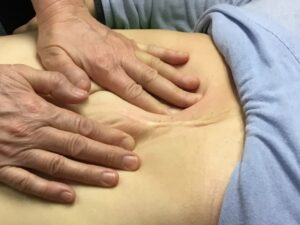
Why should light touch work so well versus the way we taught patients back when I was a nurse – ‘knuckling’ the scar tissue and breaking it down? We now know that such a brutal approach is contra-indicated – you are likely to create more scarring. Light touch, we know, works because of the fascia, which is not layered in the body but one, continuous structure. This means that when we work on the skin, the effects are transmitted into the superficial fascia under the skin, down through the fascial continuity to the deep or visceral (surrounding the organs) fascia.
A process we call Mechanotransduction translates any force (light or heavy) directly into the cell to create cellular change. Experience and research are starting to demonstrate that the lighter the touch the more powerful the result. This is the 21st century – the heavy-handed therapeutic approaches are changing to light touch in so many cases.
As an energy field therapist as well, I find that the most profound results come the lighter I work; at times I feel as though I’m working in the energy field rather than on the body. Then we are moving into fascia and how resonance works – but that’s another story !
Fascinated by fascia…
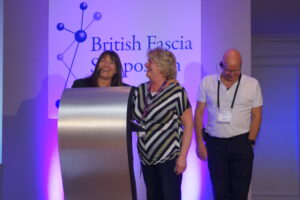
In 2014 I ran the first British Fascia Symposium, dedicated to teaching UK therapists about what we now know is the largest communicative system in the body with many more functions. The BFS ran for three years ‘live’ and then in 2020, because of the Covid19 pandemic, the live event was cancelled so I turned it into a five-day online event broadcasting from my therapy clinic room hurriedly converted into a ‘studio’.
It was such a success, and we drew people who loved working with fascia from around the world, providing a huge sense of community during a global lockdown.
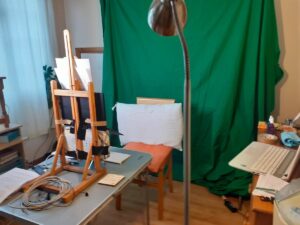
The Hub Studio in early days
On the basis of this perceived need I started The Fascia Hub, an educational community venture to provide information on fascia via online (and eventually live) events around the world. We’ve gone from a very rough ‘studio’ to the real deal to get a high quality of production.

The ‘Hub’ is all about finding the right, expert teachers to talk about an aspect of fascia; we attract an audience of not only therapists, but movement teachers, doctors, surgeons, nurses, et al. I love using all the knowledge and contacts from my BFS years to pull these events together, and hosting the event, sharing information and laughter with these talented people.

With John Sharkey, November 2020, The Fascial Pelvis one day online event.
The Fascia Hub’s next online event is WELCOME TO THE FASCIAL FOOT!
Join us on Saturday, 8th May for our next fabulous online event
Four leading speakers from the world of fascia share their latest research and insights, and provide demonstrations on this fascinating topic; spend a day with John Sharkey, Wilbour Kelsick, Elizabeth Larkam and Phillip Beach. A somatic awareness session with innovative movement teacher Rachel Tudor takes you into engagement with your own feet to lead you to a deeper awareness, informing both your practice and your self-care
To find out more or book tickets : CLICK HERE – The Fascia Hub
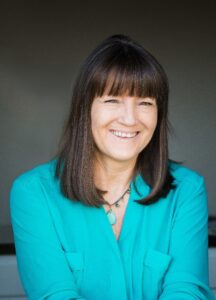
Jan Trewartha
March 2021
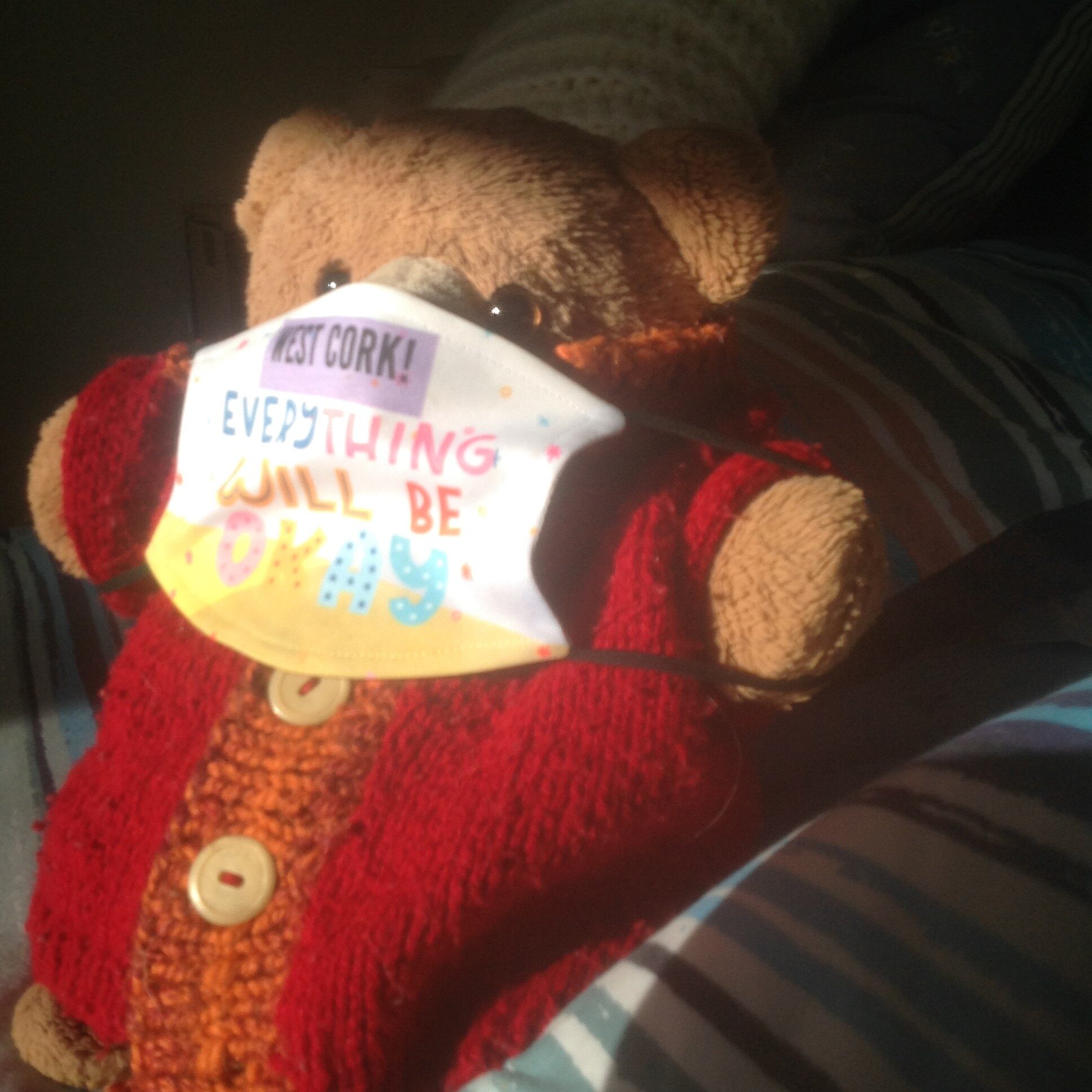
Paths We Follow
Part One – the Path Before
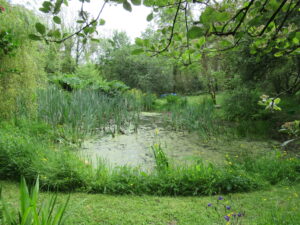
Life was good and green
In West Cork, Ireland
Where we live
Surrounded by 4 acres
Left wild and free
To share with Nature.
A busy and interesting retirement
The good life.
Visits to UK
To be with special friends.
Trips to Germany
To link with grandchildren
And their parents.
Meeting with like-minded people
Here at home.
Various groups:
Sound Medicine
Keeping Fit and Free from Falls
Singing One’s Heart Out
Women’s and Men’s Healing
Cleaning beaches
Animal rescue and welfare
Saving the Kelp in Bantry Bay
Meditation and Mindfulness
Living Well Dying Well
Lots going on…
Part Two – The Middle Path
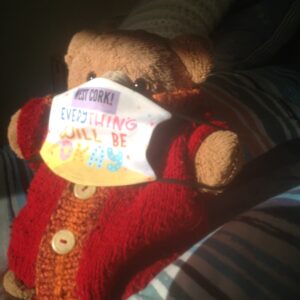 Shock, horror, shut down, lock down
Shock, horror, shut down, lock down
Covid arrived in Ireland in March
We being vulnerable
Suddenly cocooned
Not allowed out of home and garden
No visitors
A world of
Masks, PPE, restrictions…
Life all around changed.
But we the fortunate ones
With our own little house
And acres of garden
(Thinking of those in apartments
In cities and towns.
Children not able to go to school
Families in cramped accommodation
Elderly and vulnerable people suddenly very alone
People without work
Others dying
And the wonderful front liners
Working in appalling conditions
So many suffering).
So, how went it for us?
It was
Time for Imagination!
Doing things differently
No socialising, no group gatherings
Just lots of emptiness ahead
Stretching endlessly, it seemed,
As realisation and gravity struck.
Shopping once a week
Just one of us.
Time
To think
To give attention and care
To our wild life sanctuary
Plenty to clean, declutter in house.
A silence not felt before
Even though living in the quietness of rural surroundings.
Birds louder than people.
Little by little watching the world unfurl into Spring
Such beauty to be seen day by day
And no distractions
Life becoming very concentrated.
How to communicate?
FaceTime, emails, phone,
More letter writing, cards
The importance of staying connected.
Group meetings
All strangely different via
This thing called Zoom
That wasn’t part of our lives
Before.
Random acts of kindness
Became more apparent every day
Meals delivered from kind neighbours
For the Cocooners or vulnerable people
People making 100s of PPEs from recycled bedlinen
Others making masks
To send all over the world
The local library delivering 20 books
In a huge box
Via the local council’s van…
Carefully selected to suit
We 2 Seniors
And then…
Special sessions with grandchildren
Far away in Germany
Visits to and from them
Cancelled.
How to connect well over the ether
With 4 and 6 year olds?
No parents please!
Just the little ones
And Us…
Story telling,
Speaking through cuddly Bears and Mice and Monkeys.
Then the wonder of hearing
Our grandson
Having just learnt to read
And sharing that with us
Via ipads
Him reading to us a whole book
In English (his second language
Growing up as he is German speaking.)
Learning relaxation together
Being quiet and still
Or wriggling and giggling,
But trying to stay connected
Even with technical Breaking Up and Crashes.
Sometimes a session lasting
Just a few minutes
Sometimes more than half an hour
Special!
Communities reaching out to those alone
And the Lonely
Especially at Christmas Time
Local groups
Amnesty and Friends of Direct Provision
For Asylum Seekers
Putting together
A moving video of song and laughter
Adults and children
From here in Ireland
Or originating from much further afield
Joining in joyful support.
https://debarras.bandcamp.com/track/star-of-wonder-a-scattering-of-carols
Part 3 – The Path towards the End
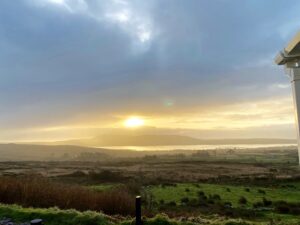
And so
The wheel turns
Another year
Into 2021
Light at the end of tunnel
We are told
Vaccines produced and
Beginning to be distributed
Covid will be conquered
And life will return to normal
Or will it? For better, for worse?
But hopefully with
More compassion
Loving kindness for ourselves
And all others
More generosity
Less need to accumulate and change things
Just for the sake of it
Because we are more aware
Of what we already have
More disposed to help those less fortunate
A sense of gratitude for having come through
Such a time
Well enough.
‘Hope is the thing with feathers
That perches in the soul
And sings the tune without words
And never stops at all’
(Emily Dickinson)
And Dawn breaks gently on Dunmanus Bay
Hope comes with yet another day
And as we face into new beginnings:
‘May the nourishment of the earth be yours,
may the clarity of light be yours,
may the fluency of the ocean be yours,
may the protection of the ancestors be yours.
And so may a slow
wind work these words
of love around you,
an invisible cloak
to mind your life.’
(John O’Donohue from Echoes of Memory)
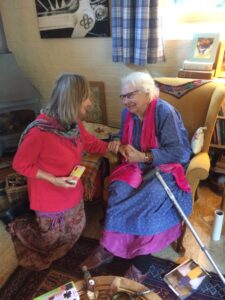
May we all be happy, well and safe in 2021
Let us all Live Well and Die Well🙏
Blessings to all you dear people…
Or Hooman Beans
As dear Anne calls us!
Louise and Anne, at Constables
LISTEN HERE – The Singing Fields by Chloe Goodchild
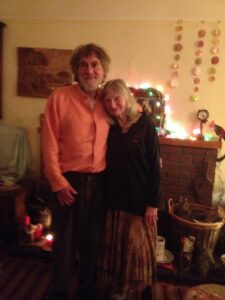
Louise and Yann Hoffman
January 2021
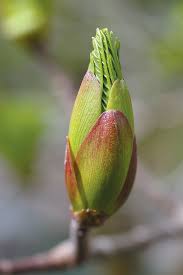
WELL … I’LL TELL YOU WHAT IT’S ABOUT
How The Imagination Acts (TIA) all came about in 2016 –
- Summer 2016 – following Anne’s painful hip replacement in early 2016 and after the ‘Take Two’ play – Anne decided to do projects closer to home.
- Sally suggested a website – this could be a forum / legacy archive for all Anne’s projects over the years – World Education Bus ( WEB), Reading International Solidarity Centre, The Lighthouse Project, Insects, Take Two play and many others.
- We contacted a local web designer ( Ben Temple, Totosites Ltd ) to set up our website.
- The website’s name ‘The Imagination Acts’ was created by Anne to show how individuals CAN effect change… can DO something about their concerns, in an imaginative way.
- We started with pages for Home, Blog, Story, Gallery, Tales, Archive, About me – which were to have different themes.
- The editorial team was Anne – editor, responsible for deciding the themes, collating and curating the content; this included collaborations with friends and colleagues. Sally – uploading content into the TIA website and liaising with Ben.
Neither of us had ever done anything directly with websites before so it was a completely new adventure for both of us !
- We found our teamwork worked well and we had a balance of skills which came together to create our editions. As time went on, we felt we were creating something special each time.
- Anne circulates our Newsletter of each edition to ‘our Readers’, her circle of family and friends. Through Google Analytics, we found other people were reading TIA as well.
- We’ve been delighted to greet our readers from the UK and all over the world including US, Croatia, France, Ireland, Italy, Russia, Sweden, Switzerland, Turkey, United Arab Emirates, China, Hong Kong, South Korea, India, Bangladesh, West Bengal, Malaysia, Singapore, Indonesia, Australia, Argentina, Brazil, Algeria, Nigeria and South Africa.
- It is always great to get feedback from our Readers – spontaneous and heartfelt; we do thank you and appreciate this.
- Ben Temple, our Web designer, provided these comments for our 4 year review: –
“Working with Anne and Sally has been great, it’s wonderful to see so many stories and pieces of artwork shared on a regular basis, the website is a treasure trove of information that you can get lost in for hours. I can hardly believe that I helped to build it over 4 years ago. It’s great to see how far it’s come since its inception in 2016. I look forward to many more posts filled with acts of imagination.” Ben Temple, founder of WordPress No Stress.
What forms the content of the TIA pages –
- Home – Introduction by Anne as to how she ‘found’ the theme and what it meant to her. Later when invited Guest Editors – Anne introduced them, explained how she knew them and why they were invited.
- Blog – a little snippet of news / poem / something inspiring / topical.
- Story – ‘Here’s space for STORIES. Story-telling: the time-honoured way to explain ones-self to the ‘other’’. Opportunity by Anne or the invited person to tell their story.
- Gallery – ‘OUR GALLERY PRESENTS INSPIRING WORDS AND IMAGES’. Usually accompanied by background text – the Gallery features photos and other pix. We provide links to current external exhibitions / events if they relate to content in the current Gallery edition.
- Tales – developed into Climate Change – this provided a longer space for people’s stories. Later Tales changed its theme to become Climate Change to recognise the current imperatives.
At this point of change, the Climate Change page introduction was changed to say –
‘‘Dear Readers,
We are changing the focus of this page from TALES to CLIMATE CHANGE. Whilst important and loved as are the longer stories in Tales, the urgent priority is getting ALL our heads around NOW ACTION. So, each month we’ll jot down examples of ‘The Imagination Acts’ belief …. that, you and me can DO something when we leap with the parachute of our IMAGINATIONS on our backs.”
The Climate Change introduction was further updated in the Winter 2020 Edition to reflect our commitment to covering Climate Change in more detail next year.
‘‘Dear Readers,
A call to every one of us, to WAKE-Up, has been The Imagination Acts’ CALL.
Our part in the global call is timely.
THE CRISIS of our time is not the Covid Virus. It is Climate Change.
And it is a stupefying phenomena that the former completely overshadows the latter…in an alarming totalitarian form of “power- over” injunctions.
Anne and Sally are having hopping up- and- down planning wails, as we commit ourselves to firming- up the website’s vision for its role in solidarity with (we trust) myriad voices challenging the Climate Change white-wash in the dominant media.’’
- Elsewhere – NEWS FROM ELSEWHERE is where Readers and Friends can add the passion of their own concerns. As more people came into contact with TIA – they sent Anne info to be included in TIA on a type of ‘notice board – so we added a new page called ‘Elsewhere’ to display this info.
- Wake Up – a later addition to our TIA pages – ‘WAKE-UP! gives snippets of information to our Readers and Friends which we hope you find interesting and maybe inspire to take Imaginative Action and chat about.
- Archive – the Archive was used to archive Tales (before it became Climate Change) and Gallery – however this stopped in early 2019 due to technical issues. We may revisit this as it was great to be able to look back on previous Galleries. Blogs and Stories archive themselves so all the previous contents are still available.
- About me – Anne’s life and key milestones.
STORIES ….. we’ve featured 58 Stories over the 4 years including :-
Law of Attraction – Sarah Cox (Sept 2020)
Coming Together – Ranjit Kaur (July 2020)
‘Boiling, Weeping, Honouring‘ – Migration – Anne Yarwood (March 2020)
Only Connect: Trees – Anne Yarwood (Jan 2020)
The Transit Lounge – Anne Yarwood (October 2019)
Several Shades of T – Andrea Wright (July 2019)
Stories from Iran and Iraq – Anne Yarwood, Bim Hikmat, Zainab Khan, Ziba Zarei (May 2019)
Call to the Wild : A Vision Quest – Kesty Jakes (March 2019)
‘Standing Up – Isra Chaker / Chat with Michel Bauwens about P2P, the Commons and the Imagination – Rob Hopkins – Robin Richardson (December 2018)
Report from Bosnia – Jan Trewartha (2019)
Dazzle – Jennifer Leach (2019)
Tom and the City Farm Duckpond – Tom Hogan ( June 2018)
Over Land and Sea, to Aber – Anne Yarwood (2018)
The Coffee Merchant’s Story – Duncan Rayner (2018)
Reincarnation: it’s nothing new – Trisha Longworth ( 2018)
Shoulder to Shoulder – Anne Yarwood (2018)
You Can Do It: Ascent Speak Truth to Power – Anne Yarwood (2018)
Wells for India: Thirty years on – Anne Yarwood (2018)
Whoever’s Killing Insects : DON’T !!! – Anne Yarwood (2018)
Artist and Soul Midwife – Antonia Rolls (2018)
The Villagers decided to build the school. It was completed in the night – provided by Mayonne Coldicott (2018)
Festival of the Dark – Jennifer Leach (2017)
Thirty Years of the Circle Works – Geoffrey Court
A Story common to campaigning groups, worldwide: How come we didn’t know ? (NHS privatisation) – Anne Yarwood and Margery Thorogood
Climate Change: Ascent’s Legacy – Anne Yarwood and Margery Thorogood
How to encourage Spirituality in schools: the Story of Values and Vision – Georgeanne Lamont
International Art Class, Malaysia – Anne Yarwood and tribute to Shirley Nisbet
The greening of a Garden (Quiet Garden) – Philip Roderick / Anne Yarwood
The ‘Just Walk’ : ‘’a big crazy stunt; crazier than the Wall’’
– Justin Butcher
A Fascinating Relationship with Pain – Andrea Beradi (May 2017)
The Natural Beekeeping Trust and The World’s Mantra – provided by Trisha Longworth
A Crone’s View of May Days – Anne Yarwood
Our Animal Friends – including from Sue Yarwood, Anne Yarwood
Take Two Play – Anne Yarwood
Festival of the Dark update – Jennifer Leach
To My Best Friend: Tina Messenger – provided by Hilary Davis
Maya Angelou – Anne Yarwood (Feb 2017)
Steve, Man of the Woods – Christina and David Searle (Feb 2017)
Reports and updates – Anne Yarwood ( Feb 2017)
‘Hard to have Hope’ – poem by Wendall Berry
Prayer for Humankind / Take Two – contribution by Kirti Dhanoa
Remember Sarajevo – Jan Trewartha
Who We Are ( Surrey Swans) – provided by Andrea Wright
The Windsor Fringe Kenneth Branagh Award for New Drama Writing – Ann Trewartha
Festival of the Dark – Jennifer Leach
The WEB Bus: book a trip to the future (World Education Berkshire) – Anne Yarwood
Cosy Fire and Armchairs; In the Magistrate’s Retiring Room – Anne Yarwood
Young Bob – provided by the Head of a Special School
Chats to Unwrap the World of GUP’s: the Boy and the Rabbit – Anne Yarwood
Hosted Spaces – Geoffrey Court, Founder Director, The Circle Works, East London
Tippling Robins and Access to Life – Anne Yarwood
Wildlife in Ascot – Anne Yarwood, Catherine Paige and Anne Ayres
Outrider Anthems: Tales from Beyond the Pale – Jennifer Leach
Parity: Story of an evolving charity – David Yarwood
Tony Douet: an Elder’s Memoire – Anne Yarwood with Tony and Sue Douet
Windsor Homeless Project – Sally Wright
Passion for Wales – Anne Yarwood
My Introduction to Sierra Leonne – Anne Yarwood (2016)
All the Stories are still available to read on the Story page – please scroll down.
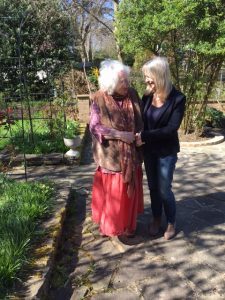
Anne Yarwood and Sally Dillon
December 2020
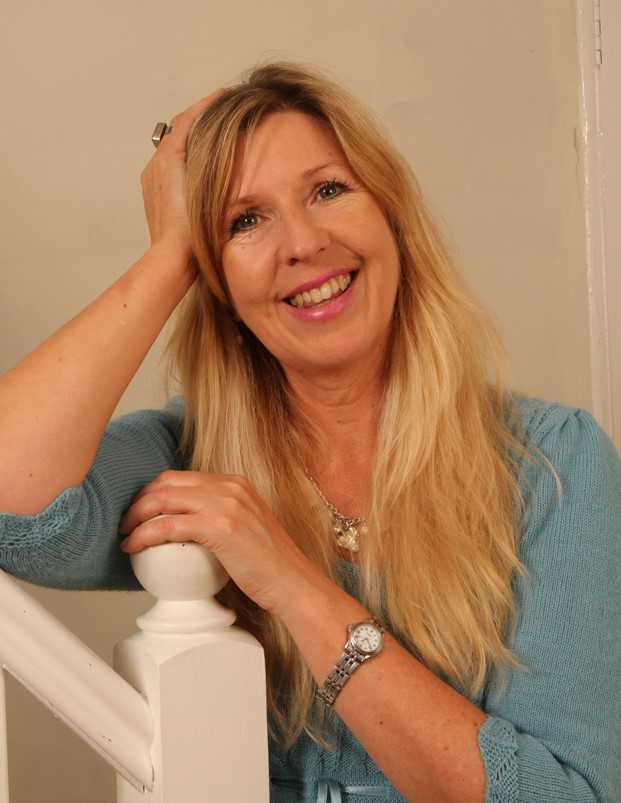
LAW OF ATTRACTION
When I was young I couldn’t understand how ‘good things’ seemed to happen to ‘bad’ people and I often saw ‘bad’ people getting ‘good’ things – it seemed to be such a random topsy turvy world, that felt out of control and chaotic with no sense of order and fairness. I bought into the theory of a random chaotic Universe built on my observations with my physical eyes.
After decades of life experience and hopefully a little more wisdom, I can ‘see’ and sense, despite what appears to be painfully unfolding in the world, something quite different.
Today I see complete order and logic, in a world that is expanding and thriving in direct relationship to the thoughts and feelings of all the citizens. “Ask and it is given” “the law of attraction” “like attracting like” are the latest phrases in the new thinking circles which includes science, epigenetics, and the growing understanding that we have the power to transform ourselves and our perception of the world with our energy. This in turn changes the physical manifest, ‘touch it’, ‘feel it’ world we see before us.
I take little notice of events unfolding around me these days, other than to see how my/our creations are unfolding. If I like what I see unfolding around me, then I keep doing what I am doing. If I don’t like what is unfolding I know I need to change my feelings about the situation. I have learnt, when I see a problem, not to focus on the problem, but use the problem as a springboard to decide how I want the outcome to appear and then focus fully on the solution and get my mind totally off the problem.
Epigenetics means “upon the gene” and is the effect of chemicals that enter the cells of our body. These chemicals can be from food or pollutants but are mostly the chemicals released in our body from our own emotions. It is actually very simple, if you feel good your cells are flooded with happy chemicals, and if you don’t feel good, your cells are flooded with damaging chemicals. Science has found that our DNA unfolds in direct response to these chemical stimulants. Our perception is only as good as our DNA allows it to be. So if your perception of the world is good, your life will be good and you are a very effective human being for bringing positive change into the world.
The whole Universe is responding to our vibrations and is an inclusive only Universe, which means that you ‘get’ what you focus on wanted or unwanted. It is impossible to focus on something you don’t like and not make it worse or bigger. I wish I had been taught that at school instead of spending so much of my life trying to solve problems by diving into them, which made them bigger and bigger. These days my focus is to be happy because without it, I am of no benefit to the world and the thriving of our species.
As our DNA becomes flooded with chemicals various strands are activated and as they ‘open’ they attract more of that same vibration to it. We can only ‘see’ the world through our perception and that perception is our DNA vision.
I thought for years if I tried to fix something that was broken in my life, or something I saw around me, then I could make things better. I had it all back to front. I tried to fix things with groups, in chat rooms and I couldn’t work out why things were not getting better. Little did I realise my attention to it was making it worse. We have had a war on terrorism, a war on drugs, a war on cancer and a war on many things we say we do not want. This simply makes them bigger and bigger and we only have to look out into the world to see that this is true.
These days I acknowledge what I don’t like from a situation or world event, decide what I do want and put my full attention on that result as I understand taking my focus off the problem means it will eventually fade away.
Feeling good really is my main priority. As a therapist I tried for years to make others feel good. Now I know I am more powerfully effective at creating 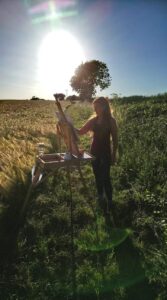 change in the world and myself by focusing on positive thoughts and feelings. Playing lip-service doesn’t work! The Universe knows exactly what you are feeling, not what you are saying!
change in the world and myself by focusing on positive thoughts and feelings. Playing lip-service doesn’t work! The Universe knows exactly what you are feeling, not what you are saying!
I realised that ‘good things’ happen to ‘bad’ people because they are selfishly focused on what they want and the Universe in its non-biased totally logical, 100% accurate way, gives each person more things to match that selfish thought. ‘Good’ people are often filled with good intentions but negative self-beliefs and self worth. Being selfish is a really, really good thing and I am doing a lot more of it to great and positive effect.
I love it when the Universe delivers to me precisely what I have asked for, it’s always a thrill to watch my creations unfold. The pleasant ones are easy to own, and with a joyful heart I say “I created that”. The tougher creations are harder to own, but I still say “ I Did that” and look at the behaviour and feelings that led up to that manifestation so I can change it in the future.
Johnny Cash and his ring of fire song is a great example. After decades of singing it, in 1965 his camper caught fire and burnt down along with 508 acres of forest fire nearly killing him in a ring of fire. Luckily the Universe does not respond instantly to our desires! There is a time span between our asking and our manifestations, thank goodness. I have read about brain specialists who go on to contract the bizarre and rare diseases they study. A huge number of diabetic nurses go on to become diabetic themselves. There are so many examples that become obvious once you realise what is going on! Although these were not instant manifestations and took years to come to fruition, they show the immense power of focus.
When focused collectively we are powerful beyond measure. Abraham Hicks teaches that “one who is connected to Source energy is worth millions who are not” which means the power is in our focus, not our doing. We can look at dictators and see how this works ! Remember the Universe is not judging just delivering.
I found lock down so interesting for many reasons but mostly because for years the collective call around the planet has been to become more green, and do our bit to tidy up our mess in the environment. We all saw the tremendous power of our world to clean up without humans around, and within 2 weeks of us all being shut indoors it was thriving in ways that we have not been seen for decades. I loved that !
In this time of transition and expansion I can feel huge positive changes coming into formation. It is only a few hundred years since we were trading with stones and pebbles, many women died in childbirth and men were butchered in war. Everything really is getting better and better and I love being a part of this new shift and expansion.
I don’t take much notice of the now and ‘what is’ i.e. the current manifestation, as this was created by the old way of thinking and we have already moved on from that. Once its manifest, it’s old history. I stay focused on the part that interests me:- the un-formed, the un-manifested and the transient new. That is where my/our power is, not with the ‘old hat’ current manifestation. I feel we are all creators creating, and we all know that feeling of desiring something that we don’t yet have, we think about it, dream about it and eventually we manifest it and there it is, those beautiful shoes, or that great job. Within a very short time we are bored and looking for something more, because the joy really is in the creating, not in the ‘touch it’, ‘feel it’, manifestation. Whatever we may think of Richard Branson, we can all acknowledge his phenomenal ability to create. He is the only man in history to have created 8 different Billion pound businesses and he seems to do this mostly by lying in his hammock and dreaming it in to fruition.
I focus on what is coming with eager anticipation as I want to be a part of the solution with upbeat life-enhancing thoughts and being a part of the new because that’s where the buzz is, the life fulfilling excitement and the exploration of our role as creators.
I love the thrill of being alive on this radically evolving planet, I think my only challenge now is, can I keep up!
Sarah Cox – Artist Gallery www.sarahcoxartist.com
Sarah Cox – Founder of Zephorium www.zephorium.com
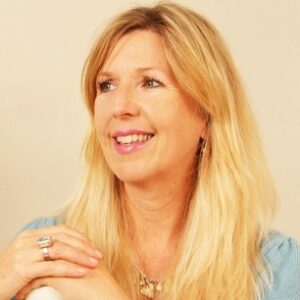


Change your thoughts…..change your life.
Sarah Cox
September 2020
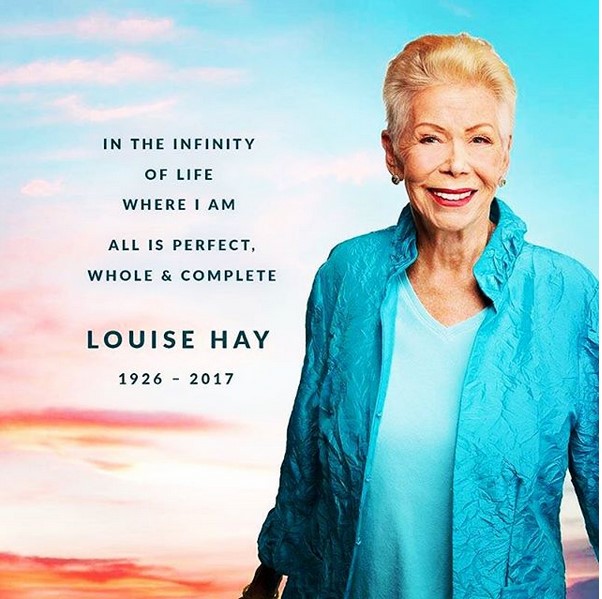
‘COMING TOGETHER’
Ranjit Kaur has given us two inspiring stories for ‘Coming Together’ –
Coming Together – our neighbours
I was touched by some local stories of how people came together to help during these difficult times due to Covid-19.
Hot meals have been delivered to elderly and vulnerable people. Neighbours are checking on each other and doing grocery shopping.
This just reminded me of my life in India, this was a normal way of life. Neighbours helped with child minding. If there was a death in the locality, all neighbours would take turns to cook meals and give company, drop children to school. There was no welfare system. Locally and seasonal grown foods were cooked. My mum and her friends would get together and share knitting patterns and recipes.
My friend Anne Yarwood shared with me her memories from years during war time, women would knit socks for the soldiers. Neighbours would keep an eye on each other and children played together. There was no NHS.
I wonder why we have to wait for wars and Covid-19 ….to get together.
Coming Together – Louise Hay
It was year 2010 Autumn – I was running a programme ‘Love yourself and Heal your life’, based on Louise Hay’s book ‘You can Heal your life’. (Louise Hay was an American author, motivational speaker and international bestseller. Her book ‘You can Heal Your Life’ has sold 60 million copies and been translated in fifteen different languages.)
Loving yourself was not only an unknown concept for all the members of the group, they lived most of their life hating themselves. Everyone had their own reasons for self-condemnation. They had been through so much pain of living with addictions, sexual abuse, life in prison, children been taken away, eviction notices due to debts.
When I tried explaining the philosophy of Louise Hay’s work, I got such a blank look and I was asked ”who is this lady ?” and ”how can they love themselves when nobody has ever showed any love to them ?”.
My immediate thought was no one is going to turn up next week and it took me so long to convince my manager to run this programme and it’s going to end before it starts. This was an American programme and my manager was not fully convinced if this would work but I was given the go ahead.
Somehow when I looked at the mood of the group. I said next week it would be a PIZZA and Video day.
I showed a video of Louise Hay telling her story of being abused as a child, teen age mum, not having any money, heart breaks and then suffering from cancer. Then by changing her thoughts and loving herself she cured herself from cancer without any medication and wrote the book ‘You can Heal Your Life’. The group immediately related to that and started enjoying the programme. When we started work on the affirmations and we all wrote our dreams on the board, I said I would like everybody to meet Louise Hay one day.
Louise Hay was nearly 85 years old and had stopped running any workshops or travelling abroad. To my surprise after two months, I received an email from the Trainer of the ‘Heal your Life’ programme from U.S.A. that Louise Hay was coming to London to do a two-day seminar on ‘You can create an exceptional Life’.
I booked myself on the programme. On the day I started at 7.00 a.m to get into central London by 9.00. Throughout the morning I kept thinking how could I bring my ladies to meet Louise Hay. During lunchtime there was a long queue for book signing and I asked the lady who was my trainer if my group members could come tomorrow and meet Louise Hay. I was told that Louise Hay gets very tired and tries to rest during lunch time and would not be able to meet the ladies. The suggestion was that I could bring a card signed by the ladies, which she would pass on to Louise Hay. I was disappointed but not did not give up the idea completely.
I bought another copy of her book and stood in the queue for an autograph. While waiting in the queue I took piece of paper and wrote a description of my group and the work we did and how much that has helped and when I got near the stage gave it to her manager.
She gave it back to me and asked me to talk to the lady standing on the bookstall. I went to the lady and again told the story of the group and if she could arrange ten minutes tomorrow during lunch time. She said she would try; I could ask the ladies to come at 12.00 midday.
I came back home at 5.30 in the evening, and started ringing the group members. I had a very dampened response – they did not have money to travel and it was very short notice except for one member who was very keen. I went to the cash point, got some money out and gave it to that member and asked her if she could organise and bring other members also.
I went to attend the workshop next day in the morning and spoke to the person in charge of the group and explained to get there on time and give me a call and I would be there. I repeated myself how important it was to get there on time as it was only a ten minutes window that we had.
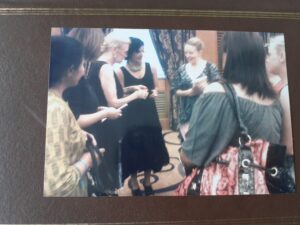 We had a break at 12.00 for lunch but I got up fifteen minutes earlier that and went out to receive the ladies. I was trying to ring them to see how far they were, and no one was picking up the phone and no sight of the ladies. I was pacing up and down. Now the time was ten past twelve and I thought – “They are not going to come and there is no chance”. I went into the foyer and my phone rang, it was a call from the group member, five of them were standing outside. When I went out I could not recognise them – all of them dressed up and excited !
We had a break at 12.00 for lunch but I got up fifteen minutes earlier that and went out to receive the ladies. I was trying to ring them to see how far they were, and no one was picking up the phone and no sight of the ladies. I was pacing up and down. Now the time was ten past twelve and I thought – “They are not going to come and there is no chance”. I went into the foyer and my phone rang, it was a call from the group member, five of them were standing outside. When I went out I could not recognise them – all of them dressed up and excited !
Now I was not sure if we would be still seen. We rushed to the room back stage and were waiting to see if we still had any chance. No one was there.
The Lady came after five minutes and said they “don’t like disturbing Louise Hay, she is taking a break.”
We waited for a few minutes – then her manager came and said “Louise is coming”.
Louise came and asked everybody their names, what they do, she gave books with her autographs and took photos – we all were ecstatic.
Still today – when I look back to the day I wrote on the board, “My dream is we will all meet Louise Hay One day”, I wonder how it all Came Together.
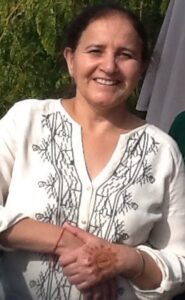
Ranjit Kaur
July 2020
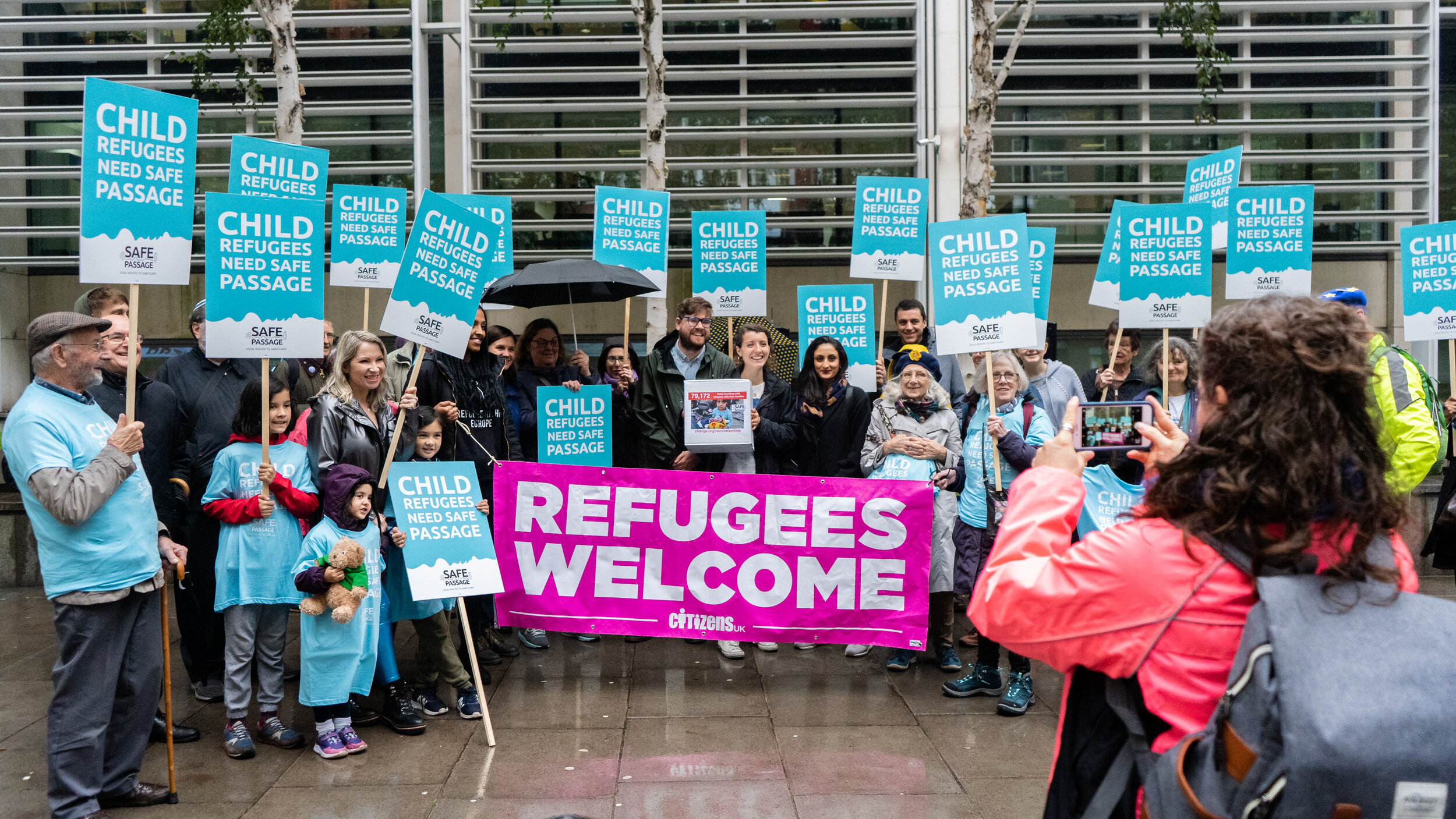
‘BOILING, WEEPING, HONOURING’
After I’d committed to research Migration as our next theme, I was dead worried. “Concerned-pretty-ignorant” me ! Got reading, started searching the Internet … then that now familiar moment in TIA creations… a surge of stirring info. and images and stories, poured in. In the early hours of this morning, I sat by my bed awaiting the next dose of Paracetamol to kick in ! I dwelt in my heart; burnished with love, for the fellow human beings who have entered my consciousness….. At what moment do you determine to traverse the 2,877 miles from Kabul to the Mediterranean coast ? The following STORIES alternate factual information, with the LIVED experience of individuals who refuse to stay in the hell- holes that appear to be their destinies.
STORY No. 1 – Migration – United Nations High Commissioner for Refugees (UNHCR) – Figures at a Glance (June 2019).
- 8 million forcibly displaced people worldwide
- 3 million internally displaced people
- 9 million refugees (20.4m under UNHCR’s mandate / 5.5 m Palestinian refugees under UNRWA’s mandate)
- 5 million Asylum seekers
- 80% of refugees live in countries neighbouring their countries of origin
- 57% of UNHCR’s refugees come from 3 countries – Syria 6.7m; Afghanistan 2.7m; South Sudan 2.3m
- Top refugee-hosting countries – Turkey 3.7m; Pakistan 1.4m; Uganda 1.2m; Sudan 1.1m; Germany 1.1m
- 341,800 new asylum seekers in 2018 – greatest number from Venezuela
- UNHCR has information on 3.9 million stateless people – thought to be millions more
- 92,400 refugees resettled
- 37,000 people a day are forced to flee their homes because of conflict and persecution
- UNHCR works in 134 countries ( May 2019)
We are now witnessing the highest levels of displacement on record.
An unprecedented 70.8 million people around the world have been forced from home. Among them are nearly 25.9 million refugees, over half of whom are under the age of 18.
There are also millions of stateless people who have been denied a nationality and access to basic rights such as education, healthcare, employment and freedom of movement.
In a world where nearly 1 person is forcibly displaced every two seconds as a result of conflict or persecution, our work at UNHCR is more important than ever before.
SEE HERE – UNHCR -Figures at a glance
**************************************************
STORY No. 2 – To Egypt for the first time
20 new Instant Network Schools will be launched this year as the programme prepares to enter Egypt for the first time.
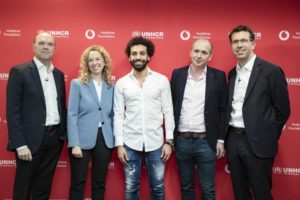 Mohamed Salah, the Liverpool footballer, has become the first Ambassador for Instant Network Schools – which connect refugee and host-country students to a quality digital education – as the programme prepares to expand into his home country of Egypt for the first time.
Mohamed Salah, the Liverpool footballer, has become the first Ambassador for Instant Network Schools – which connect refugee and host-country students to a quality digital education – as the programme prepares to expand into his home country of Egypt for the first time.
Instant Network Schools was set up in 2013 by Vodafone Foundation and UNHCR, the UN Refugee Agency, to give young refugees, host communities and their teachers access to digital learning content and the internet, improving the quality of education in some of the most marginalised communities in Africa.
To date, the programme has benefited over 86,500 students and 1,000 teachers ensuring that refugees and children from the communities that host them have access to accredited, quality, and relevant learning opportunities.
There are 36 Instant Network Schools currently operating across eight refugee camps in Kenya, Tanzania, the Democratic Republic of the Congo and South Sudan.
Vodafone Foundation and UNHCR are jointly investing €26 million to expand the programme to benefit 500,000 refugee and host community students and 10,000 teachers.
By 2025, 255 new Instant Network Schools will be opened, including 20 schools planned this year.
**************************************************
STORY No. 3 – One woman’s account of life at Yarlswood detention centre (Freedom from Torture)
One of the most feared elements of the asylum process has always been the possibility of detention, which can extend to months in what amounts to a prison…
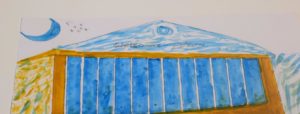 At different times different rules have applied, and in theory now victims of torture, as well as pregnant women, those suffering from mental health issues and the elderly should not be detained. In practice there is great latitude in interpretation, and many members of Write to Life have at different times experienced immigration detention.
At different times different rules have applied, and in theory now victims of torture, as well as pregnant women, those suffering from mental health issues and the elderly should not be detained. In practice there is great latitude in interpretation, and many members of Write to Life have at different times experienced immigration detention.
This is one account.
I got out of the van and went into the building. There was a long corridor, with beige walls and a shiny blue floor with a tiny dotted pattern. It all looked very clean and very solid. In the reception, some women were waiting for me. They said, ’Welcome to Yarlswood Detention Centre’ and one of them added ‘You are going to stay with us for some time.’ She asked if I wanted some sandwiches. It was nearly eight in the evening and I hadn’t eaten since I left home before lunch. But when I’m upset, I punish myself, I lose my appetite. Even if I eat it, it has no taste, no life in my mouth. So I said, ‘No’.
Then she continued, ‘Now we need to search you.’ That was the third time I’d been searched that day. Two women came and took me to a small room. They told me to take off all my clothes, and my shoes. I told them, ‘I’ve been searched only a few hours ago.’ They replied, ’Yes, we know that. This is different.’
I did what they told me to do. I took off everything except my pants. They checked every single thing. The only place they didn’t go was into my pants. After a couple of minutes a man came. He said in a very harsh voice, ‘I am going to take you to your room. Follow me!’.
We went along a very long corridor with a lot of doors. He was carrying a big bunch of keys. He didn’t say anything; the only sound was his keys in the endless doors.
We carried on down the corridor, and reached a staircase. My room was a little way up. He asked if I needed any help on the stairs. ‘You look very tired’, he said. I answered,. ‘No’. I opened the door and entered the room. It was small and square, with two beds and a toilet and shower by the door. One table, two chairs, one cupboard, white walls. Like a hospital.
I saw a girl lying down on one of the two beds. I asked her if she came from Ethiopia. She said, ‘No, I’m from Eritrea, my name is Azebe.’ We started talking. She said she’d been here in the country for five years. ‘I came when I was under age, and when I became eighteen they wanted to deport me. I’ve been taken to the airport three times, but each time I shouted and screamed when they tried to put me on the plane, so they brought me back’. Her story scared me. I felt shocked, all over again. She added, ‘Next week I have another flight. I don’t want to go back.’ I didn’t ask her why not. What she said made me think about myself.
SEE HERE – Freedom from Torture – One woman’s account of life at Yarlswood detention centre
**************************************************
STORY No. 4 – Pressure and Peril: Afghan refugees and Europe in 2017
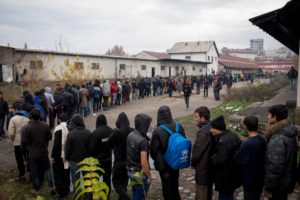 The number of Afghan refugees arriving on Europe’s shores this year was significantly lower than in 2015 and 2016, but the arrivals have not stopped. In 2017, there were still a few thousand Afghans making the hazardous trip across the Mediterranean to the continent, and tens of thousands more continued to be on the move inside Europe. AAN’s Thomas Ruttig looks at some of the trends in Afghan-European migration in 2017 and concludes that the decrease in numbers coming to Europe is mainly a result of policy changes there vis-à-vis asylum seekers, not of the war in Afghanistan or the socio-economic problems related to it subsiding.
The number of Afghan refugees arriving on Europe’s shores this year was significantly lower than in 2015 and 2016, but the arrivals have not stopped. In 2017, there were still a few thousand Afghans making the hazardous trip across the Mediterranean to the continent, and tens of thousands more continued to be on the move inside Europe. AAN’s Thomas Ruttig looks at some of the trends in Afghan-European migration in 2017 and concludes that the decrease in numbers coming to Europe is mainly a result of policy changes there vis-à-vis asylum seekers, not of the war in Afghanistan or the socio-economic problems related to it subsiding.
Three groups: the arrived, but increasingly unwelcome; the stuck; the still trying
Currently, there are three main Europe-related groups of Afghan refugees (1), each facing different problems. First, there are those who see themselves as compelled to flee an Afghan war that continues to escalate both in intensity and scope
Secondly, there are the so-called “stuck refugees,” a term that has been adopted widely in refugee studies. (3) These are several large groups of Afghans who already are in Europe but ‘came too late’ in 2015/16 to make it into the European Union countries in central and western Europe which most had been hoping to get to, such as the UK, Germany, France or Scandinavian countries. Most of these refugees are currently stuck at or between EU borders in Turkey, Greece, Italy, Serbia and Bulgaria.
Thirdly, there are those already in their destinations of choice in Europe where apparently most of them, by now, have submitted their asylum requests.
SEE HERE – Afghanistan analysts -Afghan refugees and Europe in 2017
**************************************************
STORY No. 5 ‘Bloody Foreigners – The Story Of Immigration To Britain’ by Robert Winder
Excerpt – The story of immigration has been anything but smooth or uneventful. But then it is doubtful that any nation could have assimilated the arrival of so many people from overseas without stress, and Britain is not unique in falling far short of the ideal. The overseas explorers on these shores have found the natives anything but friendly: our social history includes regular and vindictive race riots. The Huguenots, the Irish, the Jews, the Poles, the Protestant refugees from Germanic Europe and more recent immigrants from Africa, the Caribbean, India and Asia, have all in their turn, attracted sometimes furious hatred. They have had to defend themselves, sometimes with their fists (or worse). There is a shamefully long catalogue of violent reprisals against foreigners, and it is added to nearly every day. Blatant racism is deep, ugly, endemic and hard to dislodge. There have been many famous flashpoints just in recent memory. If a monument were to be erected for the victims of racial hatred, it would require space for an awful lots of names.
 Book review – Immigration is one of the most important stories of modern British life, yet it has been happening since Caesar first landed in 53 BC. Ever since the first Roman, Saxon, Jute and Dane leaped off a boat we have been a mongrel nation. Our roots are a tangled web. From Huguenot weavers fleeing French Catholic persecution in the 18th century to South African dentists to Indian shopkeepers; from Jews in York in the 12th century (who had to wear a yellow star to distinguish them and who were shamefully expelled by Edward I in 1272) to the Jamaican who came on board the Windrush in 1947. The first Indian MP was elected in 1892, Walter Tull, the first black football player played (for Spurs and Northampton) before WW1 (and died heroically fighting for the allies in the last months of the war); in 1768 there were 20,000 black people in London (out of a population of 600,000 – a similar percentage to today). The 19th century brought huge numbers of Italians, Irish, Jews (from Russia and Poland mainly), Germans and Poles. This book draws all their stories together in a compelling narrative.
Book review – Immigration is one of the most important stories of modern British life, yet it has been happening since Caesar first landed in 53 BC. Ever since the first Roman, Saxon, Jute and Dane leaped off a boat we have been a mongrel nation. Our roots are a tangled web. From Huguenot weavers fleeing French Catholic persecution in the 18th century to South African dentists to Indian shopkeepers; from Jews in York in the 12th century (who had to wear a yellow star to distinguish them and who were shamefully expelled by Edward I in 1272) to the Jamaican who came on board the Windrush in 1947. The first Indian MP was elected in 1892, Walter Tull, the first black football player played (for Spurs and Northampton) before WW1 (and died heroically fighting for the allies in the last months of the war); in 1768 there were 20,000 black people in London (out of a population of 600,000 – a similar percentage to today). The 19th century brought huge numbers of Italians, Irish, Jews (from Russia and Poland mainly), Germans and Poles. This book draws all their stories together in a compelling narrative.
SEE HERE – Migration Museum ‘ Bloody foreigners’
**************************************************
STORY No. 6 – section from Refugee Council on Seeking financial assistance – The truth about Asylum
Asylum seekers and refugees – who’s who?
· Developing countries – not the UK – look after most of the world’s refugees
· 80% of refugees live in countries neighbouring their country of origin
· 1% – The UK is home to approx. 1% of the 25.9 million refugees, forcibly displaced across the world.
· People seeking asylum are looking for a place of safety
· 50% of refugees across the world are children
- The top ten refugee producing countries in 2018 all have poor human rights records or on-going conflict. People seeking asylum are fleeing from these conflicts and abuses, looking for safety
- In 2018, more than two thirds of the refugees across the world came from just five countries: Syria (6.7 million), Afghanistan (2.7 million), South Sudan (2.3 million), Myanmar (1.1 million) and Somalia (0.9 million).
- There is no such thing as an ‘illegal’ or ‘bogus’ asylum seeker. Under international law, anyone has the right to apply for asylum in any country that has signed the 1951 Convention and to remain there until the authorities have assessed their claim
- It is recognised in the 1951 Convention that people fleeing persecution may have to use irregular means in order to escape and claim asylum in another country – there is no legal way to travel to the UK for the specific purpose of seeking asylum
- The 1951 Refugee Convention guarantees everybody the right to apply for asylum. It has saved millions of lives. No country has ever withdrawn from it
Refugees make a huge contribution to the UK
- About 1,200 medically qualified refugees are recorded on the British Medical Association’s database. It is estimated that it costs around £25,000 to support a refugee doctor to practise in the UK. Training a new doctor is estimated to cost between £200,000 and £250,000
- Children in the UK asylum system contribute very positively to schools across the country. This in turn enables more successful integration of families into local communities
Britain’s asylum system is very tough
· 48% of decisions made in the year ending September 2019 resulted in a grant of asylum or other form of protection
· The UK asylum system is strictly controlled and complex. It is very difficult for people seeking asylum to provide the evidence required to be granted protection. The decision-making process is extremely tough and many people’s claims are rejected. In the year ending Sept 2019, 48% of initial decisions resulted in a grant of asylum or other form of protection.
- Since 2005 most people recognised as refugees are only given permission to stay in the UK for five years. This makes it difficult for them to make decisions about their future, to find work and make definite plans for their life in the UK
Asylum seekers and refugees do not get large handouts from the state
- People seeking asylum are often living on Home Office support equivalent to just over £5 per day
- Asylum seekers do not come to the UK to claim benefits. Most know nothing about welfare benefits before they arrive and had no expectation that they would receive financial support
- Most asylum seekers are living in poverty and experience poor health and hunger.
- Almost all asylum seekers are not allowed to work and are forced to rely on state support – this can be as little as £5 a day to live on
- Asylum seeking women who are destitute are vulnerable to violence in the UK. More than a fifth of the women accessing our therapeutic services had experienced sexual violence in this country
SEE HERE – Refugee Council – Asylum facts: the truth about asylum/
**************************************************
STORY No. 7 – This is Our Home Now
This series of articles is about our neighbours who have moved to England as refugees or immigrants for reasons of sanctuary, persecution or economic necessity. Today it is Ellie’s story.
Ellie came from Angola and Portugal and arrived in England in 1994
I was born in Angola in a war zone. At the time I didn’t realize how fear had become normal. My parents didn’t travel during the day. My father would go out from midnight onwards and we kids travelled lying flat at the bottom of the car, as they would shoot the drivers. There were burnt out cars everywhere. If we travelled to my Catholic boarding school, all the cars would go together with a military column for protection. My father is Portuguese and owned a general store in Angola, and my mother is Angolan. I never met her. She left when I was three months old. Normally a white man with a black partner wouldn’t keep the child, and his family made things difficult for her to stay. He later married a woman from his home village, and had three sons with her.
When I was sixteen, the war situation became intolerable. In the middle of the night the family picked me up from school, 300 km from where we were living and we travelled to Luanda, the capital city. I didn’t want to go. I had hidden my passport so my dad had to get emergency papers at the airport. He was so angry! From there we flew to Portugal and went to live in my father’s village. It was like the Middle Ages. We were suddenly so poor, as we had had to leave everything behind. There was no electricity, no toilets. The people lived above and the animals lived on the ground floor. There was a hole in the upper floor where we went to the toilet and it mixed with the manure from the animals. It was weird. I continued my education and went to college, and later studied for a degree in psychology at Lisbon, but had to abandon the course when, despite working, I could no longer pay the fees. I found work in import/export as the company secretary and was doing well.
Then I met my husband. He was full of dreams of self-sufficiency and an organic farm, and we moved to the countryside and had three children. But things didn’t work out. He drank and would sometimes become violent with me and the children. One time he held a knife to my heart and said ’If you don’t go now, I don’t know what I will do.’ We separated and he found a job in London. We were left with nothing. I was working just to pay for childcare and we lived in a tent. We moved back to the family home, but I was completely isolated. I worked during school times, but in the holidays we had no income and no social security. People would give us their surplus vegetables. They were so kind.
Friends encouraged me to come to England, but I was frightened to be near my husband. Then one day, I woke up and wasn’t afraid any more. When we moved to Pimlico I spoke only basic English, and the kids, not at all. I worked shifts cleaning in B&Bs from 5am to earn money, and my ten-year-old had to care for the littler ones. We lived in a room with one double bed for the children and a single bed for me.
I was involved with a Christian spiritual movement and we would sometimes come to Ascot to attend activities. We loved all the trees and green spaces and so we moved here and the children went to local schools. I worked at the racecourse for events, and at the Berystede as a chambermaid. I was ‘let go’ from the Berystede when the heavy lifting damaged my back. I needed osteopathy treatments twice a week, which we couldn’t pay for, so the osteopath treated me for free, and I would bake cakes for her to give to her clients.
While my eldest picked up English in six months, my younger ones struggled, one of whom was dyslexic. They found it difficult at school, and were bullied. We had rotten eggs and flour thrown at our door, and once we had to call the police in. They were spat at at Victory Fields, so I couldn’t let them play there on their own. My dyslexic son had support at Holyport School, and also at a Steiner rural crafts training centre in Gloucestershire.
To learn English I would memorize whole phrases and then memorize answers, which enabled me to make myself understood. But I didn’t understand enough to follow the teachers’ comments at Parents’ Evenings and my eldest would translate, but carefully cover up how much she was struggling. Later I studied EFL at Bracknell and Wokingham College, and began teaching Portuguese privately in a big company which later offered me a permanent job in their European Centre where I still work. I also assist with Landmark Education in the courses they offer, and regularly organize events to raise money for local charities. I was a volunteer aid worker for the refugee camp at Calais.
I have always had the belief that God will take care of us, and guide my path, as long as I put my trust in him, and also do my part. Matt 21:22 says ’Whatever you ask in prayer, you will receive, if you have faith’. I have always felt blessed by the divine.
I didn’t go back to Portugal for ten years, but now we can afford to go every year to see my family. I have never been back to Angola, and I don’t know if I want to. I hadn’t realized the extent of my fear.
What I most value here are the opportunities. If you want to work and grow, here there are opportunities to do that. I miss the weather and the food in Portugal and the slow pace of life; the sense of family and community. In Angola, I was more the child. I miss the happy time before my dad remarried-the smell of the first rains-we’d get completely DRENCHED! I miss the vibrancy of the colours, of life, of the fruits and flowers- the termite mounds! I feel I belong to all these countries, but I am English. I love English humour and I dream in English! I feel cosy and safe inside. I feel sorrow has been my doorway to an open heart. I feel so blessed.
May all beings be safe and happy and free.
Ellie was in conversation with Trisha Longworth. If you have a story to tell, please contact her trisha.longwrth@gmail.com
**************************************************
STORY No. 8 – Migration Watch UK – The History of Immigration to the UK
 Introduction –
Introduction –
- Until the Second World War episodes of immigration were small and demographically insignificant. Britain is not “a nation of immigrants” like the United States or Australia as some claim. Large-scale immigration is an entirely new phenomenon.
- We can measure historic immigration by looking at Census records. The Census first began to record people’s country of birth in 1851. Estimating the size of the foreign born population before that is much more difficult but historical records do give us some idea as to the scale of immigration.
- In 1964 the International Passenger Survey was established and, in 1991, a more sophisticated measurement of immigration called the Long Term International Passenger Migration estimate was put in place. These allowed migration to and from the UK to be monitored on an annual basis.
The History of Migrants to the UK includes the Romans, Germanic, Anglo-Saxons, Vikings, Normans, Jews, Flemings, Huguenots, Tsarist Russia, Nazi Germany, post WW2 – Poles and Commonwealth and the European Union.
SEE HERE – Migration Watch UK: History of immigration
**************************************************
STORY No. 9 – Britain’s new immigration rules: Priti Patel unveils ‘significant’ tight restrictions
TOUGH new border controls to end the UK’s open door to unskilled EU migrants were unveiled by the Home Secretary. Priti Patel announced that foreign nationals will need a job offer from an approved employer, appropriate skills for the post and be able to speak English to be allowed to come to the UK to work from next year.
A policy document published by the Home Office set out details of the new points-based immigration system due to come into force from January 1 when the UK’s transition out of EU rules and regulations ends.
“We will reduce overall levels of migration,” the document pledged.
Under the new system, foreign nationals applying to come to the UK for work purposes will have to meet a strict set of criteria.
The system will assign points for specific skills, qualifications, salaries or professions and visas will only be awarded to those who gain enough points.
Minimum requirements will include having a job offer from an approved sponsor that suits their skill level and being able to speak English.
Applicants meeting those criteria will be awarded 50 of the 70 points needed to successfully apply for an online “e-visa” to come to the UK under the new system.
But to get over the minimum points threshold they will have to meet other criteria based on salary, seeking to work in a sector with a recognised labour shortage or a having a PhD.
A minimum general salary threshold of £25,600 will set, although different levels could be set in some specific sectors of the economy.
The proposals, to be put to Parliament in a new Immigration Bill later this year, are designed to close the general route into the country for unskilled or temporary workers.
A scheme for allowing unskilled seasonal workers from abroad to work in agriculture will be expanded to around 10,000 places a year under the move.
SEE HERE – New immigration rules : EU migration Priti Patel
**************************************************
STORY No. 10 – Ceasefire in Idlib (Syria) but thousands still in need (UNHCR, The UN Refugee Agency)
 As we prepare to mark nine years since the start of conflict in Syria later this week, I wanted to update you on recent developments within the region.
As we prepare to mark nine years since the start of conflict in Syria later this week, I wanted to update you on recent developments within the region.
A ceasefire has now come into effect in north-west Syria, pausing months of intense fighting which has driven nearly one million people from their homes since December. The situation on the ground is tense and families are desperate. Hundreds of thousands of displaced people continue to suffer, remaining cut off from adequate humanitarian relief and medical aid.
Hospitals, schools and camps where displaced families are sheltering have not escaped the violent bombings. In the past month, we’ve heard reports of young children dying from exposure as over 400,000 displaced families brave freezing conditions in makeshift shelters or out in the open.
Syria remains the world’s largest displacement crisis. Since 2011, more than 11 million people, over 50% of the country’s population, have been forced to flee leaving everything behind them – their homes, their family, their jobs. To me, this seems unimaginable.
**************************************************
STORY No. 11 – How Bidibidi, a refugee camp in Uganda, is becoming a city
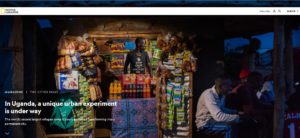
Standing in a sliver of shade cast by a solar streetlamp, David Kwaje plugs statistics into his smartphone.
Hidden from the harsh midday sun, he can see downhill to a row of white warehouses where residents collect food rations and beyond to two large tanks that supply water to roadside taps, yellow jerry cans radiating in all directions.
All week Kwaje has been walking along dirt roads, plotting every business, church, school, clinic, water tap, and light source on a digital map. At each stop he marks the location and asks detailed questions: Does your school have running water? What hours is this store open? How many doctors does the clinic have? By the time he and a half dozen other mappers finish, they’ll have created an open-source guide to an area that’s more than twice the size of Paris.
This is Bidibidi. With a quarter million people living in its many villages in northern Uganda, it’s the second largest refugee settlement in the world, after the Rohingya camp in Bangladesh.
Kwaje, who is 26, arrived two years ago. Around him a forest was razed and 250 miles of roads were carved through head-high grass and over streams to make room for a flood of South Sudanese fleeing war just a few hours north. He and his family built a cluster of mud-brick homes on a plot of land. He got married and had a son. Now, for the nonprofit Humanitarian OpenStreetMap Team, he’s documenting Bidibidi’s transformation from temporary camp to permanent city.
SEE HERE – National Geographic : how Bibibidi Uganda refugee camp became a city
**************************************************
STORY No. 12 – Ugandan Asians fleeing Idi Amin’s hostility
Following the expulsion by Idi Amin of Uganda’s Asian population in the summer of 1972, some 28,000 people arrived in Britain in a matter of weeks – to a mixed reception from their new neighbours.
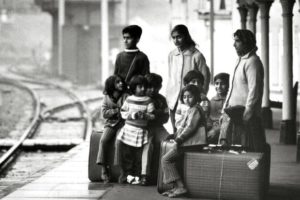 When, in the summer of 1973, the Muhammed family stepped off the train at Wick, 20 miles south of John o’Groats, they did not know it, but they had the distinction of being the northernmost Ugandan Asian family in Britain. At five o’clock in the evening, the Muhammeds – mother, father, and five children aged from five to 14 – had set off from Hemswell, an ex-RAF base in North Lincolnshire that had been serving as a resettlement camp. Arriving by train in Wick 16 hours later, disorientated and with only a limited grasp of British geography, the first question they asked on arrival was: “Are we far from London?”
When, in the summer of 1973, the Muhammed family stepped off the train at Wick, 20 miles south of John o’Groats, they did not know it, but they had the distinction of being the northernmost Ugandan Asian family in Britain. At five o’clock in the evening, the Muhammeds – mother, father, and five children aged from five to 14 – had set off from Hemswell, an ex-RAF base in North Lincolnshire that had been serving as a resettlement camp. Arriving by train in Wick 16 hours later, disorientated and with only a limited grasp of British geography, the first question they asked on arrival was: “Are we far from London?”
What were the steps that had taken the Muhammeds, who only months before had been living in Uganda, to the far reaches of north-east Scotland ?
SEE HERE – History extra : Fleeing Idi Amin- after Uganda Asian expulsion and arrival in Britain
**************************************************
STORY No.13 – The Heartbreaking WWII Rescue That Saved 10,000 Jewish Children From the Nazis
 Parents gave their children advice and checked them over one last time. Then, came the goodbyes—sincere, but not too sad. “There was laughter and crying and one last hug,” recalled social worker Norbert Wollheim. The Jewish children, clutching their possessions, then walked toward the train to become child refugees in England. Their parents stayed behind.
Parents gave their children advice and checked them over one last time. Then, came the goodbyes—sincere, but not too sad. “There was laughter and crying and one last hug,” recalled social worker Norbert Wollheim. The Jewish children, clutching their possessions, then walked toward the train to become child refugees in England. Their parents stayed behind.
The parting may have been understated, but its consequences were not.
For most of the children who left Germany in scenes similar to the one Wollheim recalled, it was the last time they ever saw their parents. They were part of the Kindertransport, or children’s transport, a rescue effort that brought Jewish children to England in the lead-up to the Holocaust.
Between 1938 and 1940, about 10,000 Jewish children made their way to Great Britain on the Kindertransport. But though the rescue is widely seen as one of the only successful attempts to save European Jews from the Holocaust, the reality was much more complicated.
Today, the Kindertransport looms large in Britain’s memories of World War II. But historian Caroline Sharples warns that it can be used as a way to glorify a country’s generous action without acknowledging the nuances of the actual situation—the adults who were turned away to die in the Holocaust, the traumatic experiences of children whose time in Britain was characterized by abuse and antisemitism, the mistreatment of so-called “enemy aliens.”
“For all of the popular fascination with the Kindertransport,” Sharples writes, “there remain a number of issues that need to be addressed more fully….the history of this scheme needs to be placed much more firmly within the broader, long-term context of British immigration policy.”
SEE HERE – Holocaust – Child refugees : Kindertransport to Britain
**************************************************
STORY No. 14 – Inspiration from a workshop created by Georgeanne Lamont – Onjali Q. Raúf
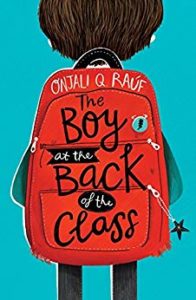 Onjali arrived at the retreat Autumn 2017, sceptical and weary, close to exhaustion. As she drove into Charney Retreat Centre, nestled in the Oxfordshire countryside, she eyed the sheep in the field and idyllic setting with mild suspicion. Was this for her? She’d come from the rough, tough refugee camps and was unconvinced that a pastoral weekend would in any way stave off the burnout that was threatening. A couple of weeks later she reported on BBC radio how she had gone away from the retreat refreshed and with renewed energy – ready for new refugee work. Shortly after that weekend, Onjali began to write The Boy at the Back of the Classroom, a book that has taken the classrooms of the UK by storm. Children cannot put it down, teachers weep and laugh along with their pupils, children finish the book changed, determined to do what they can to raise awareness of the issue of refugees, to raise funding for the camps, to enrol others. The book is like a dynamo, inspiring direct action in British schools. What had Onjali learnt in that retreat? We had taught the spiritual tools of stillness, listening, celebration, grieving, visioning and journaling. Without an inner spiritual reservoir it is simply too difficult to go through the tidal waves of suffering we are facing. Onjali, today is an established author, campaigner, very active refugee volunteer amongst other things and every day is changing thousands of lives.
Onjali arrived at the retreat Autumn 2017, sceptical and weary, close to exhaustion. As she drove into Charney Retreat Centre, nestled in the Oxfordshire countryside, she eyed the sheep in the field and idyllic setting with mild suspicion. Was this for her? She’d come from the rough, tough refugee camps and was unconvinced that a pastoral weekend would in any way stave off the burnout that was threatening. A couple of weeks later she reported on BBC radio how she had gone away from the retreat refreshed and with renewed energy – ready for new refugee work. Shortly after that weekend, Onjali began to write The Boy at the Back of the Classroom, a book that has taken the classrooms of the UK by storm. Children cannot put it down, teachers weep and laugh along with their pupils, children finish the book changed, determined to do what they can to raise awareness of the issue of refugees, to raise funding for the camps, to enrol others. The book is like a dynamo, inspiring direct action in British schools. What had Onjali learnt in that retreat? We had taught the spiritual tools of stillness, listening, celebration, grieving, visioning and journaling. Without an inner spiritual reservoir it is simply too difficult to go through the tidal waves of suffering we are facing. Onjali, today is an established author, campaigner, very active refugee volunteer amongst other things and every day is changing thousands of lives.
Never underestimate the power of spirituality to transform ourselves, our world. Never underestimate someone like Onjali who is full of unswerving love, courage to confront and bursting with fun.
SEE HERE – The Boy at the Back of the Class
**************************************************
STORY No. 15 – Urgently resettle child refugees from Greek islands – Safe Passage

The situation for child refugees on the Greek islands is desperate. The Greek Government has written to all European countries asking for help, but as far as we know the UK has not responded. In this emergency, the UK could easily do its bit and provide a new life for a modest proportion of the child refugees suffering. We did it before during the clearance of the Calais “Jungle” in 2016. We can show leadership to the world, and prompt other countries to follow our lead.
Over the last three years, enormous pressure has been brought to bear on the already strained asylum and reception system, as the closure of the Western Balkan route and the adoption of the EU-Turkey Statement in 2016 left around 58, 000 irregular migrants and asylum-seekers stranded in Greece. The Greek authorities have had to shift their approach, from providing short-term humanitarian assistance to ensuring long-term protection and care for the increased number of asylum applicants and refugees on the territory.
There are an estimated 3,700 unaccompanied asylum-seeking minors in Greece. This figure we suspect is actually higher as many of the children we speak with fear the authority and remain under the radar.
SAFE PASSAGE – CAMPAIGNING FOR & HELPING CHILD REFUGEES TO ACCESS LEGAL ROUTES TO SAFETY
Every year thousands of child refugees arrive in Europe, almost half of them are unaccompanied and as a result are at risk of being abused and trafficked. Yet many of these children have a legal right to travel safely to a place of sanctuary. With our support they can access their rights.
SEE HERE – Safe Passage : our story
**************************************************
Reference books:- public libraries U.K.
Bloody Foreigners: the story of immigration to Britain – Robert Winder (Little Brown)
Spring – Ali Spring (Hampshire Hamilton)
The Ungrateful Refugee – Dina Nayeri (Canon Gate)
The Good Immigrant USA – Edited Shukla & Suleyman (Dialogue Books)
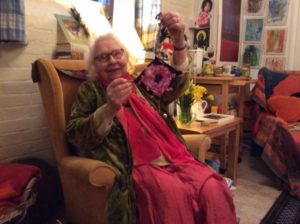
Anne Yarwood
March 2020
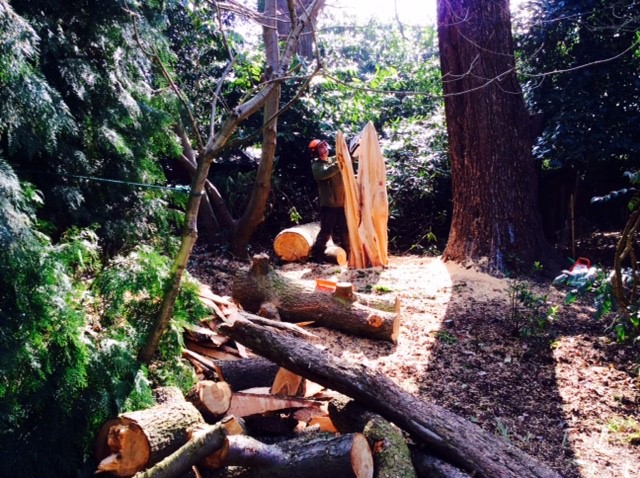
ONLY CONNECT !
“ We are One”
So Science teaches and the Wisdom tradition has always taught.
The ZEIGEIST of today brings TREES into our awareness. (Zeitgeist .. the defining spirit or word of a particular period of history as shown by the ideas and beliefs of the time). Thinking for weeks about TREES, experiencing Trees, mooching around sources …to my excitement I found European poets, photographers, exhibition curators who are using trees as their primary image. This is new in its proliferation. TREES are leading, feeding ideas. Are they today’s reincarnation hope ?
Shining this Story into the plethora of references, I offer the following:-
Awe & Wonder at Trees’ skills
Reflections on the spiritual space created by Trees
Advice on action
My own meetings with Trees
and a few of TREES’ human champions’ tales
RANDOM FACTS ABOUT TREES : Awe and Wonder stuff !
Trees take energy from the Sun and carbon dioxide (CO2) from the air to make their food. Both leaves and needles absorb CO2 ; the raw material making Chlorophyll to feed plant cells.
The Stomata holes in tree leaves allow in the Carbon Dioxide.
The Amazon Rainforest produces half of the world’s oxygen supply.
Dendrochronology is the study of tree rings, telling the tree’s age.
Evaporation from large oak and beech trees within 24 hours is between 10- 25 gallons.
Large Oaks transpire 40,000 gallons of water per year, bringing it up from their roots.
Bamboo grows 35 inches per day
Ginkgo Bilbo’s is one of oldest species at 250 million years.
The Baobab can store 1,000 to 120,000 litres of water in its swollen trunk.
Californian Redwoods are the largest organisms in the world at 379 feet; length of a football pitch.
Ancient trees cut down grew even taller.
REFLECTIONS ON THE SPIRITUAL SPACE CREATED BY TREES
These WONDEROUS, self regulating systems have lived-out their lives through aeons of time.
“ Trees are of course at the heart of things. How could it be otherwise? The human lineage began in trees. We have left our first ancestors far behind but we are creatures of the forest still” – Colin Tudge, ‘The Secret Life of Trees…How They Live and Why They Matter’. ( HIVE BOOKS – HERE)
I’ve learnt from this Wonderous book, alongside Glennie Kindred’s latest book ‘Walking with Trees’.
She writes, “ Trees create an interface, and can be experienced through all our senses. They help us to expand into parts of our selves that lie at the edge”. (Glennie Kindred – HERE)
ADVICE ON ACTION
First, take in facts about tree systems, then work out what humans can do for sustainability, world wide. Colin Tudge encourages optimism through policies for sound husbandry of trees, legislated via the choices of knowledgeable, democratically elected leaders. Long-term national plans to include:- first, listen to the experience of people currently & culturally working with trees. Evolve an agrarian economy, rooted in biological reality where a true concern for human wellbeing is put into practice, advises Tudge.
As we learn more about scientific facts of trees’ inter-connectivity, so we can open to the nature of trees . Glennie Kindred says..”As we celebrate, grow, plant and interact with the trees, we re-find our sense of unity with all of the life on Earth”
MY OWN MEETING WITH TREES
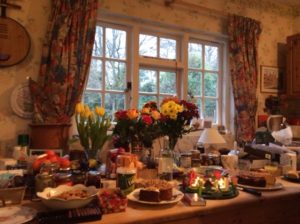 Today, I’m sitting at our kitchen table to write about MY OWN MEETING WITH TREES. Sitting at the 7×4 ft. plank, on a Polish pine armchair……here David and I sit daily, munching food, taking heart tablets! Here Sally and I checked out this edition of TIA last week. Here we write the Christmas cards, celebrate birthdays and have had friends at play, making clay altars, papier-mâché bowls, painting glass bottles…
Today, I’m sitting at our kitchen table to write about MY OWN MEETING WITH TREES. Sitting at the 7×4 ft. plank, on a Polish pine armchair……here David and I sit daily, munching food, taking heart tablets! Here Sally and I checked out this edition of TIA last week. Here we write the Christmas cards, celebrate birthdays and have had friends at play, making clay altars, papier-mâché bowls, painting glass bottles…
So, here’s my story of meetings with Trees. And with the champions of trees.. Trees’ companions; their Neighbours in this existence.
Sixty years living alongside our Oak. Forty or so years meeting men and women committed to Trees. And remembering the starting point in my solitary childhood wandering in Worcestershire fields, picking kingcups in the boggy stream, running fast to escape advancing cows …phew…snuggling safely inside a hollow Oak. Or crouching in the arching space of an Elm hedge…munching radish sandwiches and puzzling, puzzling HOW to climb the massive, straight-up-to-the-sky trunk! Always thought it would be possible…
Twenty years later we owned a 2/3 acre garden, home for hundred year Lawsonian Pine, Holly, Cedar, Sweet Chestnut, ancient pear and apple trees; one lying at 60 degrees; the retreat for hurtling up, very angry beloved tabby cat, Snudgie.
Between raising our three children and much gardening, I was out and about doing Community Organising and community education. In that world of social and political activism, I met tree-people. For example, early decisions to act locally by Anne, Catherine, Steve; imaginers of ‘WILDLIFE IN ASCOT’. Remember Anne’s fury at the threats to the ancient badger habitats by Developers; impossibility of getting a response to objections.
In my sixties I used to run ( always with friends) a variety of small groups in the converted coach house part of the stables. One such blissful weekend was spent with GLENNIE KINDRED. Felt so honoured that she came to inspire us with her passionate knowledge of trees. Plodding around the garden, we gathered twigs to bundle around tiny honouring scrolls of commitment to the trees we’d explored. Next day, more seriously soaked plodding around near-by Great Park, led by (the late) STEVE SEARLE, Forest Manager; again, honoured that this man- of – the -woods, should in his laid-back way, welcome us relative amateurs to his domain.
Now we’re up to the early 2000’s …urgency to waken the local community to facts about Climate Change. Eight or so friends founded ASCENT: Ascot & the Sunnings Community Environment Network. A key member was ANDREA BERARDI; Open University lecturer who together with colleagues including his wife JAY MISTY ( now Professor Geography, Royal Holloway) developed the COBRA PROJECT in the Guyana Shield, South America This EU funded project advocates the position that indigenous communities have the capacity to identify and share their own environmental best practice of land management. iPads were given to record traditional knowledge. Experience of IT was tried out on/ by the ASCENT group; great fun learning to use iPads for the first time….
By this time environmental NETWORKING was global. I heard about KINARI WEBB through a World Studies colleague of many years; his close relative lived in Jakarta. Co-editor of this website Sally and my interest in the SE Asian environment remains strong since living in Malaysia for five years. Then one day we watched Kinari’s inspirational video and adored her….her and this practical idea to protect the trees. Lateral thinking zooms through seemingly intractable resistance to solutions.
Finding out about the next Neighbour-of-trees, in this Story’s terminology WANGARI MATTHAI happened indirectly from African women I met at the Africa Centre and at European Commission meetings. There these powerful women told me of their heroes, including Wangeri. I loved these big women. Straight talking. Bearing their suffering with a defiance that I recognised from childhood, In myself.
VANDANA SHIVA is the last hero to introduce to you. Again I found out about her work through environmental networking. Heard she was speaking in London…after her talk a few women met with her. I recall a huddle, squashed in a small basement room…and there was this utterly open-hearted woman, chatting away, like a sister to us “strangers”. I always hold the sense of Vandana’s warmth, in my heart.
I have only today discovered the final “ Tree Neighbour” to honour : SUZANNE SIMARD Professor of Tree Ecology, British Colombia University. Magically, synchronistically… in the latest BRAIN PICKINGS from MARIA POPOVA lies knowledge, new to me, about the underworld of FUNGI. I’ve been searching around, finding out about fungi MYCELIUM – the connecting underground thread network and lo! Here’s exactly what is needed to complete this pin- hole into peep- show Story of Trees. We RECOMMEND Suzanne ‘s TED TALK plus the animated film made by one of her students.
SOME TALES OF TREES’ CHAMPIONS
This section lauds what individuals can do through their IMAGINATIVE ACTION, their BRAVERY : this is our website’s vision. THE IMAGINATION, ACTS.
– LOCAL PROJECT – WILDLIFE in ASCOT
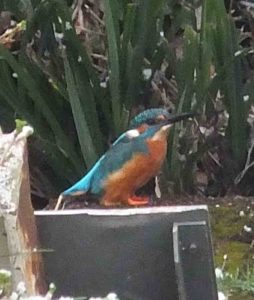 Based in Berkshire, typically, a community group’s tale. Here’s 3 people making a START. It all began with that powerful motivator ANGER…objections to destruction by Developers of Badger habitats. The three met. Straightway agreed to set up a voluntary group. EARLY DAYS “held”by computer competence and dedication. Activities ATTRACTED others through informative talks, sociable activities.Expanded by BOLD Lottery funded project; a stream set amidst local private housing estate.
Based in Berkshire, typically, a community group’s tale. Here’s 3 people making a START. It all began with that powerful motivator ANGER…objections to destruction by Developers of Badger habitats. The three met. Straightway agreed to set up a voluntary group. EARLY DAYS “held”by computer competence and dedication. Activities ATTRACTED others through informative talks, sociable activities.Expanded by BOLD Lottery funded project; a stream set amidst local private housing estate.
SEE HERE – About Wildlife In Ascot
Popular subject – Kingfishers SEE HERE
– GLENNIE KINDRED
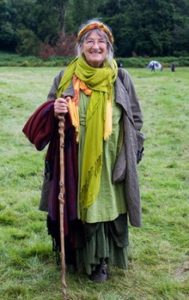
Glennie Kindred
I am an artist and a writer, and it is my good fortune to have twelve books currently published, all of which include my artwork. My books are practical and inspire the reader to self-empowerment. They explore the wild edges of our relationship with the Earth through our native plants and trees, tree lore, herbalism, Earth wisdom, alchemy, celebrating the Earth’s cycles and creating heartfelt ceremony. I am also the editor and co-creator of the yearly publication, the Earth Pathways diary.
– COBRA PROJECT

Prof. Jay Mistry
In 2011, a partnership between Indigenous associations, academic institutions and civil society organisations
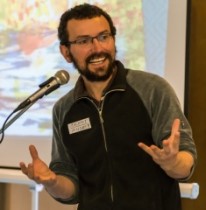
Dr Andrea Berardi
launched Project COBRA. Its mission was to support Indigenous communities in the Guiana Shield of South America to identify, record and share their own solutions, and showcase these to the rest of the world. SEE HERE – ABOUT PROJECT COBRA
In December 2016, Project COBRA’s researchers launched the Cobra Collective (www.cobracollective.org), a social enterprise for advancing the project’s achievements.
Two years after the end of Project COBRA, The Open University funded a team from the Cobra Collective to interview key individuals that participated in, and/or benefited from, its legacy
SEE HERE – PROJECT COBRA IMPACT
– KINARI WEBB
Kinari developed the vision for Health In Harmony on an undergraduate trip, studying orangutans at Gunung Palung National Park in Indonesian Borneo in 1993. Dr. Webb graduated from Yale University School of Medicine with honors and then founded Health In Harmony in 2005 to support the combined human and environmental work that she envisioned. Kinari also co-founded Alam Sehat Lestari (ASRI) with Hotlin Ompusunggu and Antonia Gorog. Kinari currently splits her time between Indonesia, international site assessments, and the San Francisco Bay Area. SEE HERE – Health in Harmony
Her favourite HIH story is: A village’s first female chief ended illegal logging with spies and checkpoints
SEE HERE – Non profit charity provides Health Care
– WANGARI MAATHI

Wangari Maathai
Born near a holy fig tree in the central highlands of Kenya twenty years after the country became a British colony, Wangari Maathai (April 1, 1940–September 25, 2011) went on to become the first African woman to win the Nobel Peace Prize, awarded for her triumph of promoting “ecologically viable social, economic and cultural development” by founding the Green Belt Movement responsible for planting 30 million trees and empowering women to partake in social change — an act of courage and resistance for which she was beaten and imprisoned multiple times, but which ultimately helped defeat Kenya’s corrupt, authoritarian president and blazed a new path to ecological resilience.
– VANDANA SHIVA
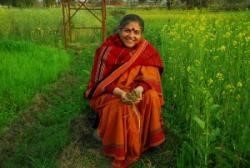 Gaia met Vandana Shiva in the mid eighties when she was fiercely defending indigenous seed varieties and farmers against the Green Revolution’s commercial seed and chemical fertilizers, which had firmly gripped Asia. Gaia worked with Vandana to bring this message to Africa, warning about the Indian experience of the destructive impact of genetically modified crops and chemical inputs. Monsanto, the largest and most aggressive private seed and agro-chemical company in the world, was at this time using South Africa as its entry point to the continent.
Gaia met Vandana Shiva in the mid eighties when she was fiercely defending indigenous seed varieties and farmers against the Green Revolution’s commercial seed and chemical fertilizers, which had firmly gripped Asia. Gaia worked with Vandana to bring this message to Africa, warning about the Indian experience of the destructive impact of genetically modified crops and chemical inputs. Monsanto, the largest and most aggressive private seed and agro-chemical company in the world, was at this time using South Africa as its entry point to the continent.
Vandana’s organisation Navdanya is one of the most influential non-governmental organizations in India, supporting farmers across the country to grow indigenous seed varieties and stand up against corporate pressure. SEE HERE – MOVIE
– SUZANNE SIMARD
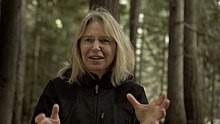 Suzanne is a professor of forest ecology and teaches at the University of British Columbia. She is a biologist and has tested theories about how trees communicate with other trees. She used radioactive carbon to measure the flow and sharing of carbon between individual trees and species, and discovered that birch and Douglas fir share carbon. Birch trees receive extra carbon from Douglas firs when the birch trees lose their leaves, and birch trees supply carbon to Douglas fir trees that are in the shade. Simard helped identify something called a hub tree, or “mother tree”. Mother trees are the largest trees in forests that act as central hubs for vast below-ground mycorrhizal networks. A mother tree supports seedlings by infecting them with fungi and supplying them the nutrients they need to grow.[1]
Suzanne is a professor of forest ecology and teaches at the University of British Columbia. She is a biologist and has tested theories about how trees communicate with other trees. She used radioactive carbon to measure the flow and sharing of carbon between individual trees and species, and discovered that birch and Douglas fir share carbon. Birch trees receive extra carbon from Douglas firs when the birch trees lose their leaves, and birch trees supply carbon to Douglas fir trees that are in the shade. Simard helped identify something called a hub tree, or “mother tree”. Mother trees are the largest trees in forests that act as central hubs for vast below-ground mycorrhizal networks. A mother tree supports seedlings by infecting them with fungi and supplying them the nutrients they need to grow.[1]
She discovered that Douglas Firs provide carbon to baby firs. She found that there was more carbon sent to baby firs that came from that specific mother tree, than random baby firs not related to that specific fir tree. It was also found the mother trees change their root structure to make room for baby trees.
– MARIA POPOVA – ‘Brain Pickings’.

We RECOMMEND these weekly Newsletters , compiled as a gift to readers worldwide.
Maria says ”I am a reader and writer, and I write about what I read here on Brain Pickings — my one-woman labor of love. It is an inquiry into what it means to live a decent, substantive, rewarding life, and a record of my own becoming as a person — intellectually, creatively, spiritually — drawn from my extended marginalia on the search for meaning across literature, science, art, philosophy, and the various other tentacles of human thought and feeling”.
”It has been curious to observe, in this most difficult year of my life, the patterns that emerge — strong women’s voices, the healing power of nature, of poetry, and of kindness; the necessity of unselfish love, of friendship, and of solitude; and lots and lots and lots of tress — and how they illuminate the things that help me, and perhaps you, survive. Thrive, even.
Enjoy, and may we face the coming year with the steady serenity of a tree — that supreme lover of light, always reaching both higher and deeper, rooted in a network of kinship and ringed by a more patient view of time”.
SEE LINK BELOW – Fascinating Science of how Trees communicate
– MARY OLIVER
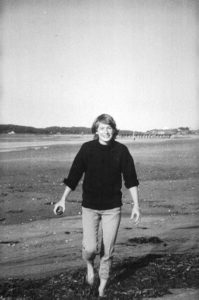
Mary Oliver (1935 – 2019), was perhaps the most popular American poet of the past few decades. The winner of a Pulitzer prize in 1984, she was loved for good reasons. Her poems are simple and straightforward, crystalline, reflecting a deep love of nature, and connecting the spirit world with the physical world in subtle ways. She wrote with a natural, even naive, enthusiasm for life itself, as in her majestic When Death Comes (1991), in which she cries:
When it’s over, I want to say: all my life
I was a bride married to amazement.
I was the bridegroom, taking the world into my arms.
MYCORRHIZAL NETWORKS
Mycorrhizal networks (also known as common mycorrhizal networks or CMN) are underground hyphal networks created by mycorrhizal fungi that connect individual plants together and transfer water, carbon, nitrogen, and other nutrients and minerals. The formation of these networks is context dependent, and can be influenced by factors such as soil fertility, resource availability, host or myco-symbiont genotype, disturbance and seasonal variation (due to enrichment of nitrogen in soil affect michozial communities or effect of human activities of human affecting nitrogen cycle). By analogy to the many roles intermediated by the World Wide Web in human communities, the many roles that mycorrhizal networks appear to play in woodland have earned them a colloquial nickname: the Wood Wide Web..
Substances transferred
Several studies have demonstrated that mycorrhizal networks can transport carbon, phosphorus, nitrogen, water, defense compounds, and allelochemicals from plant to plant. The flux of nutrients and water through hyphal networks has been proposed to be driven by a source–sink model, where plants growing under conditions of relatively high resource availability (e.g., high-light or high-nitrogen environments) transfer carbon or nutrients to plants located in less favourable conditions. A common example is the transfer of carbon from plants with leaves located in high-light conditions in the forest canopy, to plants located in the shaded understory where light availability limits photosynthesis.
MYCELIUM
The mycelium is the part of a fungus that is usually underground (or inside some another substance). It is composed of hyphae, which look like threads, or rootlets. The mat of hyphae may be very thickly woven. The fungus uses it to extract nutritients. The hyphae are usually syncytic, that is, they do not have complete cell walls. Fungal colonies composed of mycelium are found in and on soil and many other natural materials.
A mycelium may be tiny, forming a colony that is too small to see, or it may be extremely large and cover the floors of a large forest.
The part of the fungus which is most visible is the reproductive body. This is often, but not always, the stem and hat of the mushroom.
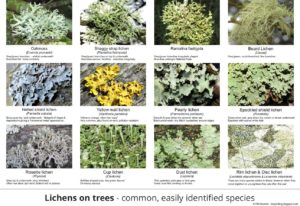
SEE HERE – LICHENS ON TREES INFO
SEE HERE – FUNGI IDENTIFICATION
And finally, dear Readers, let’s seal this awakening to Trees with poets’ words :-
From Maria Popova – Brain Pickings
William Blake wrote- “ The tree which moves some to tears of joy, in the eyes of others is a green thing which stands in their way”.
Maria writes: ”But trees are much more than what they are to us, or in relation to us. They are relational miracles of their own entangled complex webs of inter-being, constantly communicating with each other through chemical signals dispatched along the fungal network that lie in their roots- an invisible, astonishing world only recently discovered thanks to Canadian forest ecologist Suzanne Simard”.
From the late Mary Oliver –
WHEN I AM AMONG THE TREES
by Mary OliverWhen I am among the trees,
especially the willows and the honey locust,
equally the beech, the oaks and the pines,
they give off such hints of gladness.
I would almost say that they save me, and daily.
I am so distant from the hope of myself,
in which I have goodness, and discernment,
and never hurry through the world
but walk slowly, and bow often.
Around me the trees stir in their leaves
and call out, “Stay awhile.”
The light flows from their branches.
And they call again, “It’s simple,” they say,
“and you too have come
into the world to do this, to go easy, to be filled
with light, and to shine.”

Anne Yarwood
January 2020
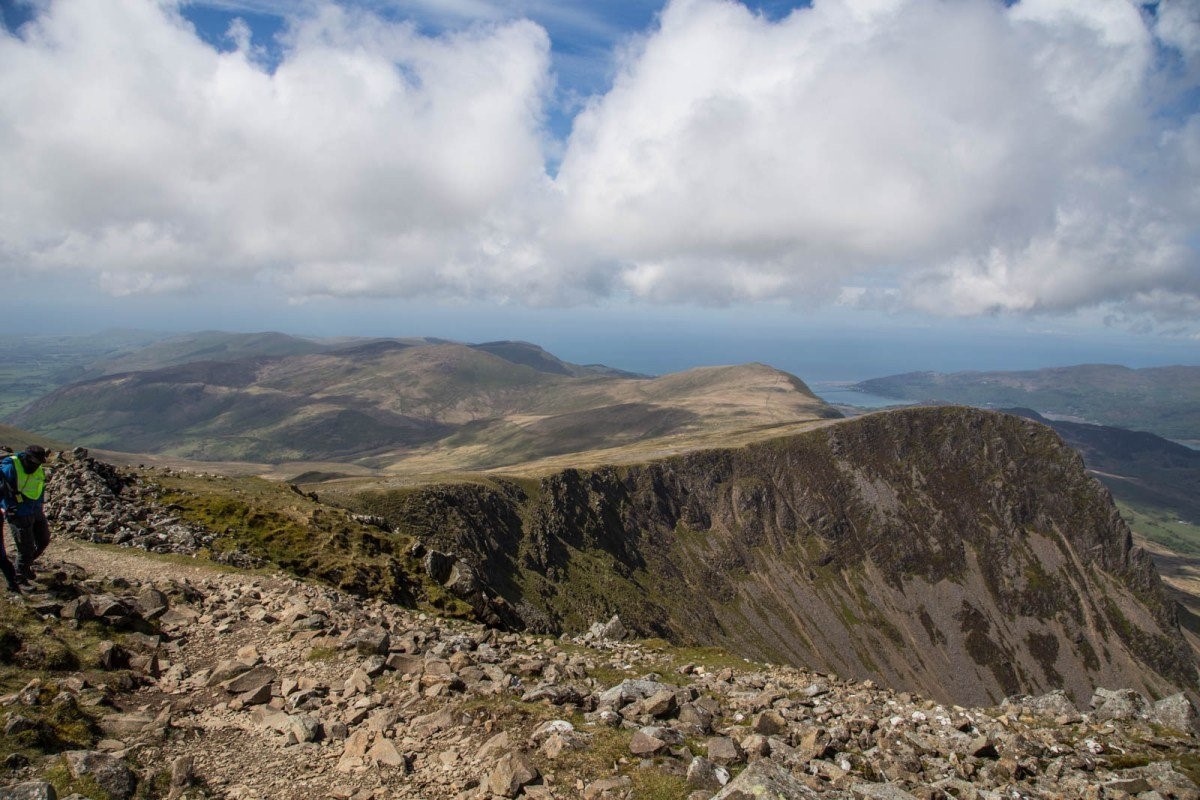
The Transit Lounge
A while back, Mary, I and other church women met weekly for an hour for a Healing Prayer Group: twenty years with our beloved Rev Dr Gill Wiggins. Mary – a Lancashire lass, often spoke of sitting in the Transit Lounge. I didn’t understand the accuracy of the location, being much younger than my fellow Lancastrian.
But here I am at 85, physically frail, less alert mentally; as for all elderly, hours easily spent on technicolored recollections of life lived; in other hours, facing fear, mixed with sensible planning for forthcoming further weakening and the hugely feared death of one of us, leaving the other….alone.
The Story that follows gives pinhole peeps into the nature of my early life through tales about my parents. Their experience, values and attitudes shaped my formative years.
Born WEST DERBY LIVERPOOL 1934. Exemplar Council Housing Estate. Liverpool in 1930’s providing well built housing for rent, in a designed setting.
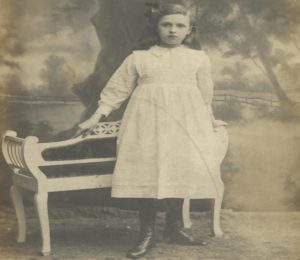
Lilian as young girl
Lilian Brookfield and Arthur Stanley Davies ( “Artur Tanny Dadis” said my Daddy, as a little chap) felt they could only afford and raise, one child …so I was precious. Greatly cherished, upheld, held close…enfolded in their hopes. Recall sitting on Daddy’s boney knees, held close by his large hands. Or cuddled up on my Mummy’s knees, cosying my head onto her ample bosom.
Lil lived her childhood in one of the poorest parts of Liverpool. Mother widowed, 6 children, no income. Young Lil went out every morning at 4 o’clock with Annie, to clean offices. From this pittance, Annie saved to buy the Vicar a copper Carriage Lamp every Christmas: proud in the giving. Lil told me of sitting on the stairs playing with her toys: a tin box of buttons and wooden clothes pegs.
Arthur’s childhood was likewise tough. Father a fishmonger in Wallasey and also a fortune – seeker in Australia …mysterious legends, including Arthur’s mother falling into the Mersey between landing- stage and dock. Prem. birth. Baby born with Rickets. Mis-operated on, aged 3…permanently lame.
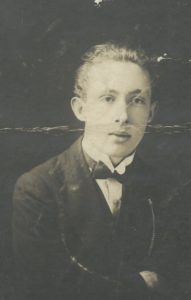
Arthur as young man
Arthur was always involved in Community concerns. Worked in the Liverpool Settlement, with Larkshill Tenants’s Association and was the first Organising Secretary, Birmingham Council Community Associations. Together with leading Quakers, they founded the National Council of Community Workers and the National Federation of Community Associations.
These meetings got Arthur to London. London, called “Foyles Bookshop”!
This stumbling-along man, little cash, literally crept into the bookshop to scour shelves of SETS of classics. SETS, that was the thing!
Back home, more bit rickety- rockety shelves went up around all free walls downstairs. “Oh! Arthur not MORE BOOKS!” When he died, early 60s, I drove the little green Anglia to and fro to a Southampton book seller. Mummy was glad …grieved… to be free of them…I ,heartbroken to see my Daddy’s life-lines …dumped. For after a shattering car accident in Arthur’s and Lilian’s 50s, READING had kept Daddy alive….“Just finished Balzac (some 30 volumes). On to De Quincy!”
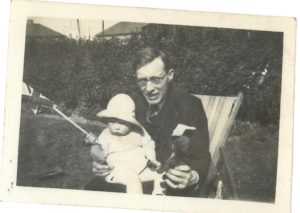
Me on Daddy’s knees, Liverpool
Moving up, socially was always in Lilian’s mind. Not pushy…not at all, rather a steady intention for her little family to be upright and progressing.Very darling of her. With so little to ‘spoil’ her, she felt acknowledged to have a small box of groceries DELIVERED WEEKLY TO THE HOUSE…she being served. And doing the Footie pools every Saturday. Daddy and me silenced, in dread of her missing a result. And her Co-Op divvie: twice yearly dividend, set aside winter and spring for a new hat. …expedition of us three to Lewis’s Brum, for serious hat trying-on. AND, let’s not forget the SPIRELLA LADY (the Corsetiere). Bi-annual visit to the house. Closed door in the sitting- room…a high-altar sort of happening…
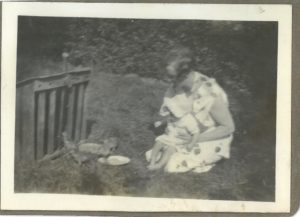
My Mummy and me, Hoylake
Outside home my Mummy went to an Anglican Church. She encouraged me always to say prayers at night and Grace before meals. She always sang in a local choir. In fact she sang or whistled all the time…often with her Woodie ( Woodbine) between her lips…my mind is full of songs…music hall, operetta..which now, David and I sing ( on cheerier nights) when he’s doing the washing-up… ”Let’s all go darn the Strand…”
Next comes THE WAR : WW2. Unlike David ( 4 years older than me) I knew little about the fighting; the anguish of our country’s danger. Images pop up …Mummy’s lip- chewing as she turned the heel knitting the Airmens’ thick sox, gathering rose hips in the hedgerows for Vitamin C, plucking lambs’s wool off the fields’ barbed wire fences, the Anderson air raid shelter that my father dug. Bunk bed for little treasure. M& D on orange boxes all raid-long. Me loving the siren, the huge searching lights, both signals to pop into my dark red, fluffy Siren Suit. My Mummy’s home- made protection of me. Zipped and hooded …like Prime Minister, Winnie’s..
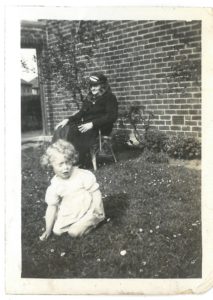
Anne, 2 years and Nana, Broad Lane
Evacuation : Operation Pied Piper 1939 moved 3.5 million people (mostly children) from city areas. Bomb threats led my father to send Mummy and me to Barmouth, North Wales…leaving him on his own for a year; no car, black out, gammy leg ( as Arthur always called it)…but he absent from home when an incendiary bomb came through the roof.
WALES. ah! My heartland…precious land. Myself in the outer world .The air…amidst mountains, the sea. I found… ”Vast. Eternal. Unchanging. Uninhabited.”
Lilian and me had rooms in a row of granite houses, up high above the sea & the Prom. Two stone lions at the entrance…two feet long… HUGE. Sat on one or the other many and many an hour, viewing the world. Or often scurrying up the Panorama (short ‘a’) Walk…over the huddle of granite cottages nearing the harbour. And over the Mawddach Estuary across the rail bridge. Long walk, little legs but crossing to another world. Me drawn into bog land, mud flats, rock strewn knolls . Ah! the lived memory of rushing down through groves of sparse Welsh oak trees…leaping across boulders. Sensing mystery and danger as we crossed by Arthog to ascend the ground rising steeper, rougher up to Cader Idris.
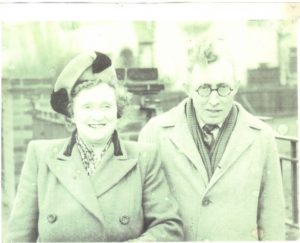
One of Lilian’s hat
(Intriguingly, I read a while back of John Ruskin buying a dozen cottages and over 4 acres of land up the mountain side near Barmouth harbour. Part of a social project for his Guild of St. George…part of the writer’s attack on Victorian capitalism). Years later in my teens, we three went to Llanaber, at the far end of Barmouth Promenade. Every Spring there we were, to open-up a holiday bungalow and every Glorious Autumn, to close it down; a far- sighted project of Arthur’s to offer low cost holidays for Council tenants in Birmingham.
A magic place, that spartan wooden bungalow. …quick dash down the narrow lane, by the stream, honeysuckle, blackberries…over the railway line, over the sand dunes to the freezing sea.
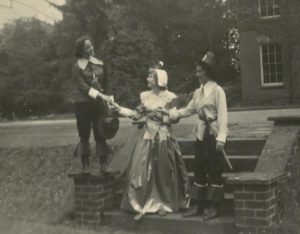
Anne as the Lady in ‘Comus’, plastic dress by Lilian (school)
Next seminal influence …school…aged 7 to 19. Kidderminster High School for Girls enveloped all our lives. No life beyond its walls. So here’s “safe” again. And achieving. Small scale. Us girls,the focus of total attention by “Polly Oldfield” our Headmistress & once a week Magistrate (we’d watch her leaving down the front steps…awesome). The all female, white staff were scholars. Mostly solitary since their men had been killed in wars. They cherished us…we unconsciously knew this. Whole school Prayers every morning. Polly in her black university gown. Me, hymn monitor selecting the hymns and putting the numbers up in the frame by the side of the stage…holding the music if Miss Wood needed help, at the piano. Miss Wood in red spotted dress and shaved legs. Much music, piano lessons, tiny Miss Fitzgerald & the school orchestra. School choirs… St. Patrick’s Breast Plate. No running in the corridors. Golden Book and Black Book entries read out in Assembly. I couldn’t do Arithmetic. Missed one term after op. to remove Ovarian Cyst, aged 10. Shone at art, literature, history, religious studies. One of few names on honours board in the hall of girls going to University.
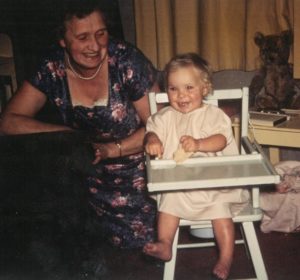
Nana and Sally, Londonderry, NI 1959

My Mummy made my wedding dress 1957, later worn by Sally
Like to tell you more, dear Reader, about how I slowly, so very slowly released myself from “a dolly day-dream” distancing from the world. Fumbling and failures…Whither? My father’s shattering car accident. Marriage, Motherhood, our small house in Derry, Northern Island.
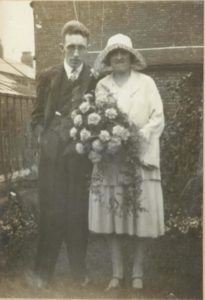
Lilian and Arthur wedding, Liverpool 1931
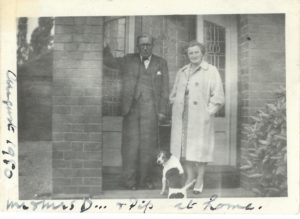
Arthur and Lilian, Kidderminster, before accident
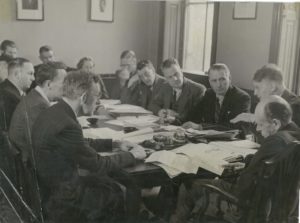
Arthur at London meeting ( front LHS)
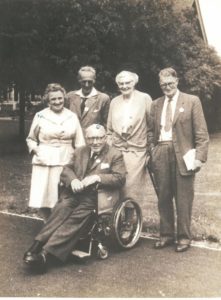
Lilian wheeling Arthur to meeting with colleagues
In their 50s, the car accident called forth Lilian and Arthur’s deepest store of courage.
Driven into a stone wall by a collecting-child mother dashing across a junction, my Daddy’s rickety knees and hips crumbled. Heart- breaking visit to Birmingham Accident Hospital. Arthur’s handsome face bruised, arms & legs in plaster, legs on hoists. Lost his job: charity couldn’t afford to keep him on the payroll…no income nor savings. This independent pair depended on National Assistance…. assessed every six weeks after full strip examination. Arthur shamed in embarrassment. Demeaned. Lilian cared for Arthur who didn’t walk for several years (and then as a daily struggle). She discharged Daddy …chronic bed- sores. I came home weekly from Uni, lying beside him motionless on his bed …my task to breath hope into him. Enduring three years of intense anxiety for their future, finally, they won a court financial settlement for loss of livelihood and pain & suffering. They bought their first small home…Bought a baby- grand piano …Arthur staggered to sit there, bashing out musical comedy melodies ”A Nightingale sang in Berkeley Square”. My Daddy very slowly learnt to drive hand- controlled car (after Mummy pleaded with the Driving Tester following the third failure!). Their lives continued for another 10 or so years.
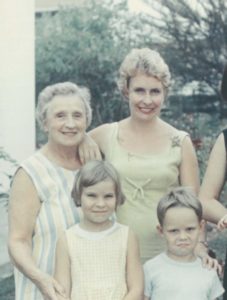
Lilian in Malaysia
Continuing my tale –
Nearly five years in Malaysia. Whilst so far away…no farewell… both parents died. Returned. Bought Constables with my parent’s legacy and our modest savings. Two further degrees in Social Policy then Sociology, Community Worker Social Services, Marriage Guidance Counselling training, NADEC ( Nat.Assoc Development Education) & at the European Commission, development education. Aged 60, with friends (honouring my parents by the hosting), we ran a twenty year series of mutual sharing and learning groups, at Constables. Set up NGO projects, RISC (Reading International Solidarity Centre) peace and environment education groups.
Then “Take Two” a play honouring the Palestinian conflict.
This was the TURNING. Brilliant creation by our small group. Author Jennifer Leech, Director Justin Butcher….me, exhausted. Slid into my present habitat…Transit land.
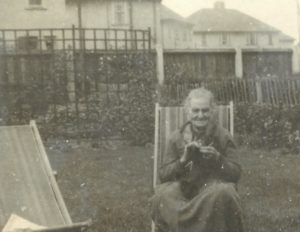
Nana Brookfield, Lilian’s mother, Broad Lane 1934
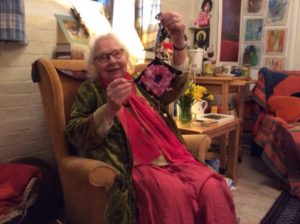
Anne Yarwood
October 2019
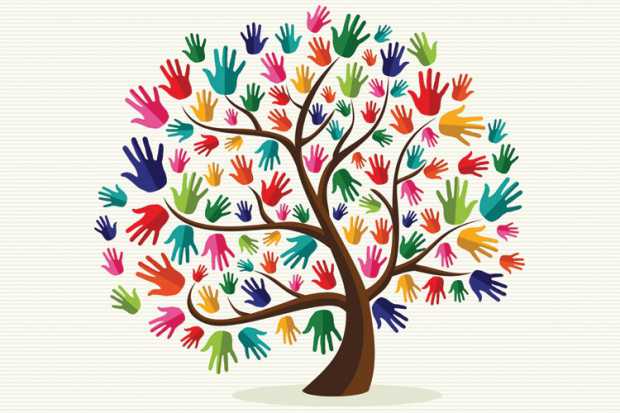
Several Shades of T
The storyline that I’m thinking of opened with L and G.
After a while they were joined by B.
And then T.
LGBT.
More recently a large selection of the rest of the alphabet has joined in. Some of them more than once.
LGBTQQIAAPOG …
Lesbian. Gay. Bisexual. Trans. Queer. Questioning. Intersex. Asexual. Ally. Pansexual. Other. Genderfluid. …
Sometimes the newcomers all get represented by just a +.
LGBT+.
But the story isn’t about the alphabet.
It’s about people.
It began long before the alphabet got involved.
And like all stories about people, whilst there are still people the story will continue.
Some people are intimately involved in the story. Others are more on the periphery. We can all be involved. In some ways, we all are involved.
There is a truth in that different people read the same story in different ways.
Some see a collection of different letters of the alphabet. They don’t identify with any of the letters. The story is a threat. An anathema. An abomination. They want to put an end to it. But the story is about people and not the alphabet. Ending it involves blood. And even then, whilst there are people the story will continue.
Some claim a letter as their own. They hold it close. They know it and understand it. Looking at the other letters they aren’t so sure. Not all letters are equal. Some of them are frauds. Dangerous. Threatening. They need to be restricted. Controlled.
Some don’t consciously read the story at all. But by words, silences, actions and inactions they take part.
Over the years I’ve come across people that read the story in these ways. And of people that read it in many, many other ways.
My own take on it has changed. Is still changing.
I’ve discovered that I have letters in this story.
I know other people that have the same letters.
But sharing the same letters in a story doesn’t make us the same people. We have our own thoughts, feelings, preferences. And we can even read the same story in different ways.
I know other people with other letters.
But I know no one for whom a letter, or even an entire alphabet, provides an adequate definition of who they are.
In all of this I identify as T and G – that is a Trans person that is Genderfluid.
So, what does that mean? And does it matter.
The term trans is often defined as something like this: an umbrella term for all people who cross traditional gender boundaries – whether that is permanently or periodically (https://www.nhs.uk/livewell/transhealth/documents/livingmylife.pdf).
And then there’s the term genderfluid. You could say that genderfluid individuals have different gender identities at different times. A genderfluid individual’s gender identity could be multiple genders at once and then switch to none at all, or move between single gender identities, or some other combination therein. For some genderfluid people, these changes happen as often as several times a day and for others, monthly, or less often. Some genderfluid people regularly move between only a few specific genders, perhaps as few as two (which could also fit under the label bigender), whereas other genderfluid people never know what they’ll feel like next (See HERE – wiki/Genderfluid).
However, the definitions certainly have their limitations.
I’ve come across some trans people who don’t like to stand under the same umbrella as other trans people. Which might add another letter to the story to accommodate them.
Some people don’t believe that T has the right to be included along with LG or B.
Sometimes, people begin to talk trans and then focus more upon pronouns, lavatories, changing rooms and restrooms than they do on people.
Sometimes people say and do things that are much worse.
Trans people face many challenges. All people face many challenges.
What special rights should trans people have?
Perhaps nothing more special than things that I believe should be given to all people. Things like kindness, compassion, respect and understanding.
Ultimately, what every trans person that I know wishes for, is to simply be themselves. It’s not about special treatment or privileges.
Of course, that’s the beginning of a story more than it is the end of one. Pronouns, restrooms, changing rooms and safe spaces matter.
Safety matters.
People are capable of pretending to be someone that they are not.
There are challenges.
But in working out solutions to these challenges let’s remember that behind every acronym and label there are real people. That even when people share the same label, they are different from each other. That there is no single voice that fully represents any label. That it is possible to disagree with someone else and yet to do that with respect and kindness. That there are times when the ability to reach a compromise is a strength. That it is better to listen to and talk with each other than it is to write about each other. That whispers sometimes speak more loudly than yells.
The acronyms are complicated. People are complex. But there is something special when people that pick up different labels are able to move beyond the things that make them different. To see diversity as a thing that can enrich and strengthen rather than something that weakens and destroys.
And of course, just like you, I have lots of other letters of the alphabet in lots of other stories. And we’re all involved in each of these stories in one way or another. Some stories touch us closely. Others seem to be more distant. But we are involved. What we say and do has an effect. Our inactions and silences also have an effect. And all the separate stories are, in reality, parts of a single bigger story.
Martin Niemöller (first-they-came-for-the-socialists) is remembered for saying:
First they came for the socialists, and I did not speak out – because I was not a socialist.
Then they came for the trade unionists, and I did not speak out – because I was not a trade unionist.
Then they came for the Jews, and I did not speak out – because I was not a Jew.
Then they came for me – and there was no one left to speak for me.
And so, even though I am not L or G or B, I still speak out. We are all neighbours (www.biblegateway.com/passage).
Last year I discovered the music of Emily Maguire (https://emilymaguire.com/ ) and was especially touched when listening to a song of hers called The Borderline which speaks to me of the way it can be so easy to concentrate on things that divide us rather than the things that hold us together. You can listen to it HERE and HERE.
The words are:
The Borderline
[E.Maguire]
Where is the borderline
The boundary between your tribe and mine
Are we the rain, the river, the cloud and the sea
If we are like water then which drop is me
And what is time – the fast blink of an eye
A circle so vast that we think it’s a line
And what is space – the air, the silence we breathe
A place of our own and the ghosts we don’t see Is it the boundary, the borderline
Between you and I, your mind and mine
Is fire the spark, the fuel, the air or the heat
The smoke in your eyes or the ash at your feet
Are trees the root, the branch, the wood or the leaves
The forest we burn or the broom that we keep
Beneath the stairs, the stars, the space in a jar. The air outside is that where you are
Is that the borderline, the boundary
Between you and I, between your tribe and mine
But isn’t fear the dark shadow of hope
The things that we want and the things that we don’t
And so we cling and close the eyes that look in,
The soul we don’t see under the skin
Cos that’s a boundary, the borderline
Between you and I, between your tribe and mine
But we both were born and both will die
And in between will doubt and dream
Of a better life than life before
A meaning or a reason for
This feeling of being different, defined
When we are only dreaming of boundaries and borderlines
I hope we wake up
Cos what is love – a word, the feeling of you
Something we dream or the things that we do
And who am I – these thoughts, this feeling, my views
A fragile form or a dreamer like you
Are we so different, defined
Where is the borderline?
When we are like water, like trees
We have a name, an illusion of identity
Of boundaries, of borderlines
But my dreams are yours and your fears are mine
I hope we wake up from this dream of being different, defined
When we are only space and time
And yes, I too hope that we wake up.
Andrea Wright
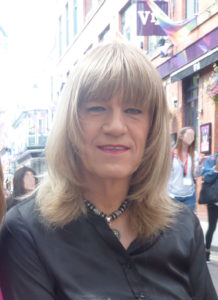 I was born male but struggled with my gender-identity for many years. On learning to accept myself as who I am, I initially accepted the label “transvestite”. As the years have passed, I’ve realised that it’s not a thing that’s simply about the clothes that I wear. So the label that I prefer these days is genderfluid (See HERE). It’s not a perfect label, but nor is any other.
I was born male but struggled with my gender-identity for many years. On learning to accept myself as who I am, I initially accepted the label “transvestite”. As the years have passed, I’ve realised that it’s not a thing that’s simply about the clothes that I wear. So the label that I prefer these days is genderfluid (See HERE). It’s not a perfect label, but nor is any other.
I’m fortunate in that my family and friends have accepted me warmly. I know many other people who experience stress in their relationships because of their gender identity.
I try to be of help to other people that are coming to terms with their own gender identity. In just simple ways like spending time with people, listening to them and sharing my own experiences. I also organise Surrey Swans (http://surreyswans.blogspot.com/p/introducing-surrey-swans.html) which provides a place where trans people and their partners can meet socially, and occasionally write a blog http://andrea-wright.blogspot.com .
July 2019
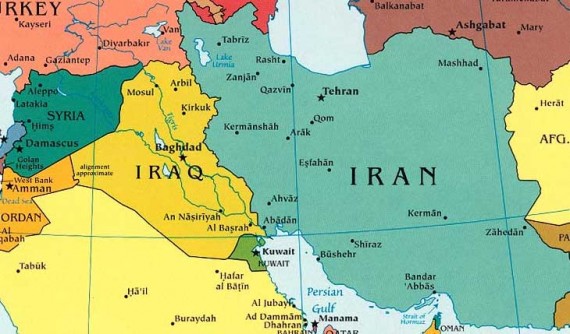
Stories from Iraq and Iran
Photos and illustrations from these Stories are in the GALLERY
Three friends have contributed glimpses of these vibrant , ancient lands, Iraq and Iran.
Reflections
“Khaloola (Auntie), the flower is right in front of me on the door at my grandmother’s house”, said my niece when we spoke during her recent visit to Baghdad. She went to visit Baghdad having left it when she was two years old. On her way she stopped to see us for 2 days in Surrey, UK. At that time the British Museum was having the Ashurbanipal BP exhibition, so my husband and I took her there. We felt this will be a good introduction to her Baghdad visit and to the history of Iraq.
Later we were reflecting on this exhibition and I was struck by how many things that are so familiar to us today and we took for granted came from these ancient times of Iraq’s history. Here are a few :-
1: The flower that decorates many things from people’s doors, gates, public spaces all around Iraq.
2: Colours and styles chosen to decorate the interior of ordinary people’s houses, especially in Mosul.
3: The decoration of furniture with metal pieces, I saw a chair or table with lions claws decorating it’s legs, I have similar decorations on the legs of my current dining table.
4: Lush and bountiful orchards and the way the produce was carried away on large trays usually carried above the head. I saw the same way of carrying produce and bountiful orchards during my childhood in Iraq.
5: My heart melted when I saw the beautiful panoramic view of the land around the Tigris River near Nineveh. The thought that I have been there with my parents visiting relatives kept coming to my mind.
6: I felt proud that people from the land where I was born contributed to humanity’s history and civilization.
7: With all the achievements that the Assyrians and other ancient populations of Iraq attained, I could not help but wonder how comfortable and happy ordinary citizens of Ashurbanipal’s empire were, just as I wonder how ordinary citizens of Iraq are today.
For further interest – ‘Ancient Iraq’ ( Georges Roux, 3rd Edition, Penguin, Paperback) is a book which, in my opinion, is so informative and an enjoyable read.
Ban Hikmat
Retired Community Dentist
At the Existentialist Café
This is the title of a book by wonderful Sarah Bakewell. Much as I admire her and her thorough research on any subject she touches, this time it wasn’t her name on the cover which made me purchase the book, but the title itself. You see, we had a café in Shiraz, Iran, which we called our Existentialist Café fifteen years ago while I was still living there.
Every evening we used to get together in that café with the exquisite décor, order non-alcoholic hot drinks in winter, and cold in summer, and discuss anything from Simone de Beauvoir’s view on women, Milan Kundera’s Immortality, and Jose Saramago’s Blindness. Yes, we did smoke as well, and discussed sex, compared boyfriends, gave each other relationship advice and whatever would go on at a casual meeting in any café in Europe.
We weren’t a bunch of snubs, elites, separated from the society, but simply some ordinary girls and boys who had never left the country and knew the rest of the world only through films and books. It didn’t feel like living on another planet though, the way people in the West feel about Iran, and we certainly did not feel miserable and poorly treated waiting to be rescued by the west. we were proud of our Rumi, Ave Sina, and Ghazali, and so many other philosophers, reciting their poems and words almost everyday in our day to day conversations. Life was… different.
In my last trip to Iran, last year, I popped into our Existentialist Café and I was filled with the same melancholy we feel whenever we try to trace back sweet memories. The décor had changed, new paintings on the walls, and the people, the young boys and girls seemed a lot more intellectual, more open, and definitely more colourful as the dress code is so different now. The society is a lot more tolerant to the way women dress these days. I sat there for a cup of hot chocolate while listening to them. Their giggling, comparing nail vanishes, wondering whether or not to have a cheekbone surgery. There was no major changes, really. In my days a nose job was the biggest beauty surgery they did, half my friends had done it. Iran is and has been one of – if not the – biggest markets in the world for beauty products. Nowhere in the world you find people more obsessed with cosmetic surgeries than the cities in Iran.
But I was waiting for some intelligent conversation, some hint of how much they care about the politics, the horrific shadow of war looming over the country, the sanctions, the cost of life which has tripled in just one year,… I waited and waited, …, hardly anything. When they did brush over the subjects it was a mixture of jokes and shrugging shoulders dismissively. Trump, is a joke, flood, is a joke, inflation which is breaking people’s back, hungry people selling kidneys, unemployment, … They had jokes about everything. Funny jokes, even I, sitting on my own, couldn’t help but smiling at some of them while wondering how could they?! How could they be so ignorant ? Or was it bravery ?
Later on in a short conversation with an old friend I got my answer:
‘Oh, please, Ziba, don’t go there. Let’s just have a good time together. Life has always been s*** , there is always something, we know, we are living it… what seems like a deep subject for you to discuss is the reality for us to live through. We have been doing it for four decades now… It’s just life.’
And like that, all the existential talks I had prepared seemed meaningless… Jean-Paul Sartre would have been so disappointed. But then, four decades of struggling to reinvent a nation against all the odds, against the rest of the world suppressing you, would well exhaust any philosopher, I think. Unless you resort to Epicureanism and start laughing at any misery life throws at you… Wise ? Not sure… Sensible? Maybe !?
Watch “INSIDE IRAN – American in Iran 🇮🇷(anti-American?) Episode 3” on YouTube –
Ziba Zarei
Post Mistress, local community shop
What does it mean to be Iraqi?
Is it the spiritual connection to the land, to the two ancient rivers, to the smell of orange blossoms, to the singing of the bulbul or sipping sweet tea from tiny hourglass-shaped cup? It’s all of these things and more. Regardless of religion, sect, ethnicity, and politics one will find all Iraqis identify with the above.
Knowledge seeking and the love of poetry, nature and food are some average traits of Iraqis. This can be illustrated by the existence of specialised markets such as Al Mutannabe Street book market in Baghdad.
This street is filled with bookstores and outdoor book stalls. It was named after the 10th-century classical Iraqi poet Al-Mutanabbi. Often been referred to as the heart and soul of the Baghdad literacy and intellectual community.
There is a special market for copper handcrafts called Souk al-Safafeer, Baghdad’s ancient coppersmith’s market, has been in existence since the Abbasid period. Sixteen years ago, marketplace was bustling with vendors selling handmade copperwork off their shelves,
The few coppersmiths who remain today complain of financial strains and a lack of demand. Tourism came to a near halt after the 2003 US-led invasion of Iraq and a weakened economy left locals unable to afford these products.
Other markets exists that specialise in pets, textiles, spices and food.
Poetry
Poetry is an ancient art form in Iraq and is still part of life of modern day Iraq in all its forms folk, classic and modern.
Abu at-Tayyib al-Mutanabbi (915 – 965) was an Iraqi poet. He is considered as one of the greatest poets in the Arabic language.
In a famous poem he speaks to the power of identity and the freedom that comes with knowing oneself.
| و أسمعت كلماتي من به صمم | أنا الذي نظر الأعمى إلى أدبي | |
| والسيف والرمح والقرطاس والقلم | الخيل والليل والبيداء تعرفني |
| I am the one whose literature can be seen (even) by the blind | And whose words are heard (even) by the deaf. | |
| The steed, the night and the desert all know me | As do the sword, the spear, the paper and the pen. |
Nazik al-Malaika (1923 – 2007) was an Iraqi female poet and is considered by many to be one of the most influential contemporary Iraqi female poets. Al-Malaika is widely regarded as a pioneer of modernist Arabic poetry.
Love Song for the words
Why do we fear words
when they have been rose-palmed hands,
fragrant, passing gently over our cheeks,
and glasses of heartening wine
sipped, one summer, by thirsty lips?
Dunya Mikhail (born 1965 in Baghdad, Iraq) is an Iraqi-American poet based in the United States. In 2001, she was awarded the United Nations Human Rights Award for Freedom of Writing. [SEE HERE)
The Iraqi Nights (2014)
In Iraq,
after a thousand and one nights,
someone will talk to someone else.
Markets will open
for regular customers.
Small feet will tickle
the giant feet of the Tigris.
Gulls will spread their wings
and no one will fire at them.
Women will walk the streets
without looking back in fear.
Men will give their real names
without putting their lives at risk.
Children will go to school
and come home again.
Chickens in the villages
won’t peck at human flesh
on the grass.
Disputes will take place
without any explosives.
A cloud will pass over cars
heading to work as usual.
A hand will wave
to someone leaving
or returning.
The sunrise will be the same
for those who wake
and those who never will.
And every moment
something ordinary
will happen
under the sun.
Preserving Iraq’s cultural heritage
Since the 2003 illegal invasion of Iraq, many cultural heritage sites have been destroyed and looted including the National Archive Library. Many of the stolen antiquities found their way to European and American markets. There have been many initiatives by Europeans and Iraqis living in the diaspora to expose these crimes. The very oil companies that benefited from the invasion of Iraq are now sponsoring exhibitions of ancient Iraqi heritage. BP sponsorship of an Assyrian exhibition this year is one example.
More than 300 people took over the British Museum to create a giant 200-metre “living artwork” that circled the entire Great Court, in protest at BP sponsorship (February 2019). The action took place to challenge the oil giant’s sponsorship of an Assyrian exhibition that includes objects from what is now Iraq.
BP’s role in the Iraq war, its contribution to climate change and the oil industry’s negative impacts in Iraq are of particular concern to campaigners, who held the protest to mark the sixteen-year anniversary of the record-breaking demonstrations against the invasion of Iraq.
For more information visit www.bp-or-not-bp.org
Zainab Khan
Events Coordinator, RISC Development Education Centre, Reading – HERE
May 2019
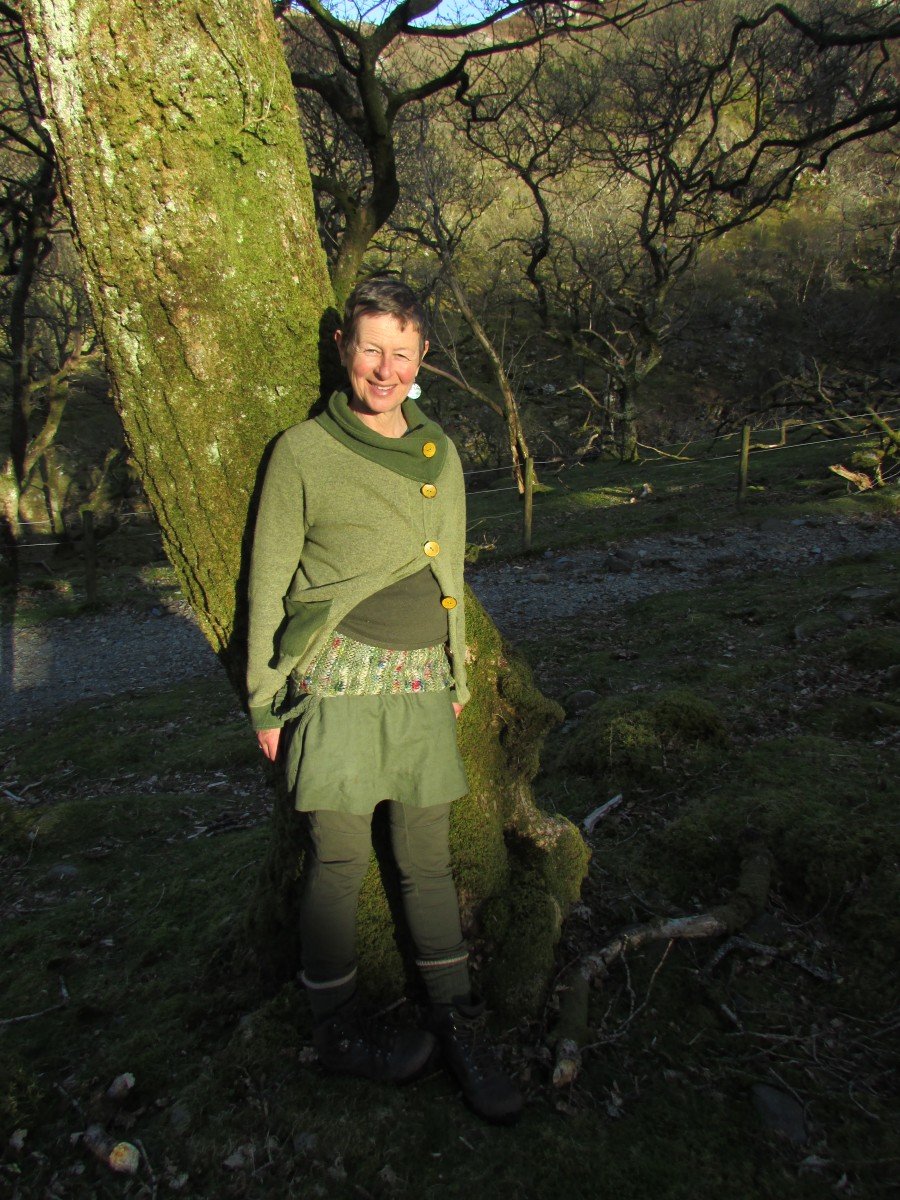
Call to the Wild: a Vision Quest
Last summer my husband said he would like to visit our daughter in Australia who is there on a working visa. He plans to visit his brother too, with our son in April. I love my family deeply. I am not called to return to that continent. I wished to honour my truth in some way and remain here in my homeland.
Then I saw this………..
“Deep in your heart you know whether or not you want to experience a Wilderness Quest. Already you feel the ancient stirrings in you. The time has come………..
(The Wilderness Quest by Steven Foster and Meredith Little)
“The Vision Quest is an ancient ceremony to mark and move on from one life transition to another. The ancients knew that by crossing these thresholds in wild places, we face our fears, see our life pass through and gather our medicine, in order to move into the next phase of life.”
Pippa Bondy Ancient Healing Ways
It was July 2018 and I was spending time in the woods in a little cabin. I was loving the clear space, returning to simplicity. My journal, songbook and a book on story telling were the only items I took up there from the house. Waking to the sounds of the birds and doing my Taijiwuxigong practice felt heavenly. I felt a freedom to allow myself time. There was no rush to go to the house, my children were gone. They were not there to make the most of, or have a fleeting brush with, or have a conversation with. My two external hearts were many miles away.
It was from this place I choose not to travel to Australia to visit my beloved daughter with my husband and son. I choose to do a Vision Quest instead.
After reading the Wilderness Quest I received on booking a place, with Pippa Bondy and Ancient Healing Ways, I took a walk through our woods. Here where I am at home. I am blessed to walk out the door and be in the forest. There is an extra beat in my heart of anticipation as I step through the dripping green, receiving the rain for the first time in two months this summer. Already I am aware of anxiety too and making lists in my mind of what to pack and imagining returning to the safety and warmth of my home after the challenge I set myself! A buzzard flies out the top of a tree as I step into the meadow clearing. Ah yes I will be as you, looking down on my life from another perspective on the mountain.
As I began to prepare, I was appreciating returning to my beloved family, home, Sladebank Woods and Slad Valley -‘O the wild trees of my home‘, those words of Laurie Lee rang in my ears. On the Dawn to Dusk preparation walk I walked some of Laurie Lees’s Wildlife Way and came across his poem ‘The Wild Trees’ on a signpost.
The Vision Quest Ceremony took place in September in Snowdonia. It was 10 days in all with practical preparation and Way of Council. Pippa showed great care in encouraging and supporting me to prepare practically to minimise a potential back problem. The night before our small group of six left for our *Threshold time, of four days and four nights without food on the mountain, we were asked to speak about our individual intentions. Pippa helped me with mine. Our intent is a confirmation of who we are at this time. I wished to mark a new phase in my life.
This was my Intent – I am a woman who loves deeply. I am a woman celebrating and honouring my 20 year marriage to Martin, and the mothering of our children Yemaya and Tirian. I am a woman embracing change and young elderhood. I am deepening my call to wild nature. I offer my gifts of love and vision to serve my family and community.
On the mountain there were many magical moments to recall: Two ravens hovered and swooped as guardians above me throughout the Threshold time, the first night when I sang to the stars and my ancestors. The sighting of a beautiful fox disappearing into the mist. There were painful moments when I stumbled into a gorse bush and when my back was hurting. There were bored moments and peaceful times. I cried and I sang to the wind and the rain. The wind was almost constant despite the ancient stone walls that I had chosen to camp within. The wind battered my tent on the long last night. Lying there on the earth I remembered I had endured a far greater and perilous long night bobbing around on the ocean during a storm with 40 foot waves in my late twenties. Surely I can get through this night!
What touched me the most was the return to a windy base camp at dawn on the fourth day. As I approached in the mist I saw the two figures of Pip, and her assistant Mark. During the time out on the mountain I had felt immense gratitude for them and their holding during the Nature Fast as it is also known. But who was the first to greet me? The 4 legged as Pip put it, her collie Rupa. Tears burst from my eyes and I wept with so much joy and love in my heart as I was blessed back with smudge and prayers. What a homecoming and I wasn’t even home!
I was so happy to return home safe and be out of the wind! And I felt so flat for days after. The time on the mountain hadn’t felt such a challenge for me after all. I had prepared so well emotionally, mentally and practically that I kept well within my comfort zone. I felt frustrated with myself for not taking part fully in the final night challenge. Battered by the wind and a painful back I sheltered in the tent and did not stay up until dawn which was the invitation. ‘I did not face the wind’. Even though I could hear Pip’s reassuring voice on our return, saying “No question, you have all completed the Vision Quest,” I felt I had cheated.
Reading the Wilderness Quest book and the Trail Ahead section I read “Those who have returned from the sacred mountain of the quest must expect a resultant and necessary depression…………Wisdom literature tells us that humans experience life in rhythms of high and low, that the ascent of the mountain is followed by a descent. We are reminded that ups and downs are interdependent and necessary for growth of the self.” Steven Foster & Meredith Little
Three days after I got home we sang this song at the local community choir, and it helped to strengthen me, for I had faced the wind for sure, and I was still doing so!
Face the wind, biting cold, face the wind, fierce and bold
Blow through my heart wild and free, bend and bow like a tree
For I’m strong and will face the wind
Song arranged in 4 parts by Dee Jarlett (first verse)
I had seen aspects of myself that challenged me. I judged myself harshly. I compared myself to the others and their experience. I felt I had cocooned myself and been over protective. Yet I had done the Vision Quest in my own unique way with the blessings of Pippa. And in her words I bring back a story which is an acceptance of myself opening up the next phase of my life.
It is 5 months since I returned from the Vision Quest and in another month my family will be in Australia and I remain here. The decision not to join them is far harder than I imagined now that the time is fast approaching.
There are three stages to the Vision Quest Ceremony and I am still in the third stage of reincorporation and revisiting all the stages. Here I very briefly summarise my personal journey to help me make sense of my experience so far.
Severance – Separation and letting go. What has gone, what needs to die? So I can step into the next phase of my life ?
The impetus to join the Quest was to not join my family in Australia. By choosing the Vision Quest instead I separated from my family and it felt easy, stepping out on an adventure of my own, as I had done as a young person. Now I imagine our family reuniting in Australia without me and my choice is causing me pain, because I love them all so dearly. Now if I really wanted to go and join them, I could find a way, however I am trusting the unfolding of this decision. This land is calling me to the wild, I wish to drop deeper here in this beloved woodland and valley.
*Threshold – Transition and change. It is the return to the womb of the true mother as Pip puts it, time alone on the sacred mountain.
I have 5 weeks ahead of me to spend in nature and in solitude without the distractions of family whilst they are in Australia. Within this time I hope to mark out some ‘Threshold’ and ceremonial time to revisit and reflect on the Quest.
Reincorporation – Return and new beginnings. How do I put my piece into the whole ? Within a year of our return, there is an invitation to go back to our place of power on the mountain. This is the last formal step of reincorporation and the Quest ceremony ends. This is undertaken by our own initiative and not a group activity.
I am still very much making sense of the choices I have made as part of stepping into the next phase of my life and of my time in Snowdonia. In October I took in a rescue dog and that has been quite a little journey in itself! It is early days and there are so many layers to this Rite of Passage which are still unfolding in me. I intend to return to the same spot in September for a whole night and sit up all night and reflect on the year!
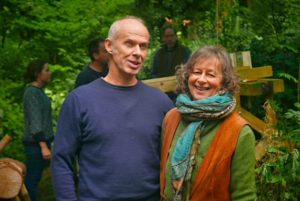
Kesty and Martin Jakes
at one of our Woodland open days
Kesty Jakes
March 2019

STANDING UP
by Isra Chaker
This is a shortened version of an article on the Teen Vogue website in the United States, 16 November 2018. The author is Refugee Campaign Lead with Oxfam America in Washington, D.C. She describes here her journey from being bullied by other students when was at school to her present work challenging the discriminatory policies of the Trump Administration.
TO READ ISRA'S STORY ..... PLEASE CLICK HERE +
The punch of hatred
It came out of nowhere and cracked against my head just as I was leaving school. And then, the slimy yolk slid down my hijab. Then, another hit me. And another. And another. Three other eggs hit me with full force, each one more powerful than the one before. I felt the punch of hatred, ignorance and bigotry as the yolks began to seep into my clothing. I will never forget that day, because it was the day I stopped eating eggs.
I ran to the bathroom to try to wash away the remnants of the bullying of my classmates as if water could wash away my heartbreak. I felt ashamed, embarrassed and helpless. Worse yet, this was a typical day at high school for me.
At 14 years old, my school days were filled with students calling me “terrorist”, classmates trying to rip off my hijab or poking me in the head with a stick. To them, I was an outsider even though I spoke the same language as they did. I wore the same clothes. I was born and raised in Boulder, Colorado, just like they were. My family and I enjoyed grilling and watching fireworks for the Fourth of July, and coming together to express our gratitude for our blessings on Thanksgiving. But none of this mattered, since I was visibly Muslim.
The day of the egg incident I found myself at a crossroads: I had to decide how much power I was going to let my bullies have over me. And that day, I decided I would give them none.
To create positive change in the world
My personal experiences with bullying, discrimination and harassment ever since I put on the hijab have now turned into my source of motivation to be an unapologetic Syrian-American Muslim woman and lead with my voice to create positive change in the world.
In the decade since I was egged at my high school, the bullying hasn’t stopped, and the bullies are no longer ignorant kids, but rather elected officials, including the President of the United States. From the first days of his presidency, President Donald Trump has implemented new vetting procedures, endless bureaucratic red tape, and a ban against immigrants from majority-Muslim countries that is undermining the ability of refugees to reach safety in the U.S. In mid September, his administration dramatically reduced the number of refugees the U.S. will take to a historic low. Worse yet, this past June the Supreme Court upheld President Trump’s discriminatory ban, making it legal to discriminate against certain refugees and immigrants.
Bullies may win a fight, but the rest of us will one day prevail. As refugee campaign lead at Oxfam America, I devote each and every day to finding new and creative ways to counter this administration’s xenophobic policies and practices, especially their attacks on refugees, asylum-seekers and other vulnerable families, with all my might. I am convinced we can make a difference. Just like in the first days of the Muslim ban, when so many Americans of all ages and all walks of life showed up at airports across the country to take a stand, we will organise, and we will use our voice.
Yes, I get tired. We are tired. Too many of us know what it feels like to wake up every morning since President Trump took office and be forced to prove that we belong and fight for our rights. To have to brace yourself for blatant hateful attacks on all your identities. But we must never lose hope. As I learned from meeting with Syrian refugees on a recent visit to Jordan’s Zaatari refugee camp, even people who have suffered so much are still able to bring light into seemingly hopeless situations.
My family and I do not have to prove our humanity, and neither do you. We are all America, and America is all of us.

Isra Chaker
Isra Chaker’s full article is HERE . It contains links to explanations of some of the references, and links to articles on the same general theme.
.
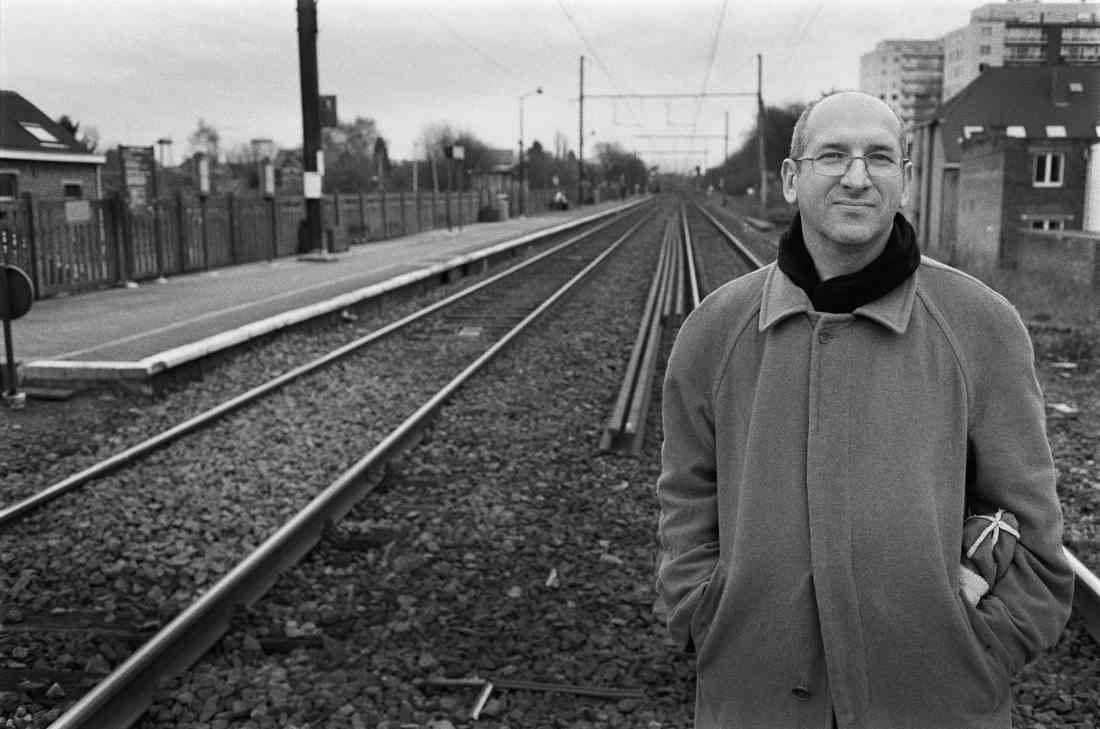
A CHAT WITH MICHEL BAUWENS ABOUT P2P, THE COMMONS AND THE IMAGINATION – ROB HOPKINS
Last week, close to my home, was the Transition Design Symposium. It brought together people from around the world interested in what design can bring to the need for an urgent societal Transition, and for 2 days its attendees basked in glorious sunshine and fascinating interactions. I managed to catch up with Michel Bauwens who was attending and speaking at the conference, and we took some time for a short chat sitting under a tree in sunshine.
Michel spends half his time in Belgium and half in Thailand, and is the founder of the P2P Foundation, a global organisation of researchers working in collaboration to explore peer production, governance and property. He is a writer, researcher and speaker on the subjects of technology, culture and business innovation. “It’s about Open Source communities”, he told me. “A lot of it is like what you are doing with Transition, perhaps a bit of a difference would be that I try to look more at the trans-local, trans-national levels, and how we can build counter-power to trans-national capital”. I started by asking him when he uses those terms, ‘trans-local’ and ‘trans-national’, what does he mean?
TO READ ABOUT MICHEL AND ROB'S CHAT ..... - PLEASE CLICK HERE +
“You’re probably familiar with Ezio Manzini? He talks about “small, local, open and connected”. For example, permaculture, in one way it’s very local. You’re thinking, “I’m doing something here, right now”. At the same time, the learning of permaculture is really global. People are connecting globally around permaculture.
One permaculture may not be significant, but 5,000 in the world, you’re actually doing something about the global structure. But a difference I think is you can use the global to support the local and I see the global as its own arena. We need something like the guilds in the Middle Ages. We need leagues of cities. We need leagues of co-ops. In Fukushima you can’t just say, “I’m going to have a fishing co-op in my village”. Sometimes you need scale to answer certain issues that can’t be solved at any local level.
In terms of the imagination, how do you see the work that you do impacting imagination and the invitation to imagination, and what’s your sense of the state of health of the imagination in the world that you’re trying to bring these ideas to? What are the challenges that you see around that?
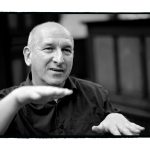 One of the things where we’re stuck in our imagination is that we see the private and public as a dichotomy, and we see civil society as some kind of left-over, you know, when you come home tired. Once you bring in the commons, you go already from two to three. Any problem becomes solvable with civil society, with autonomous creativity, with local imagination. Then you can still think about how market and state solutions and forms come into play, but you’ve already broadened it.
One of the things where we’re stuck in our imagination is that we see the private and public as a dichotomy, and we see civil society as some kind of left-over, you know, when you come home tired. Once you bring in the commons, you go already from two to three. Any problem becomes solvable with civil society, with autonomous creativity, with local imagination. Then you can still think about how market and state solutions and forms come into play, but you’ve already broadened it.
The second shift that is very important is where do we think value comes from? As long as you think value comes from the market, you’re very limited in what you can do. Because you can only imagine what’s existing and live on the crumbs. Once you start saying, “No, value is what we value”, you claim value sovereignty. Then you can say, “Well these people are creating value, and these people are creating value.” The realm of possibilities opens up.
That hopefully stimulates the imagination. The biggest challenge now is the reactivity that is induced by social media. I have it in my own life. I really have to be careful because you can spend so much time reacting to input. How do you make the space where you can just think? I see that as a big challenge for our society.
Huge. And can you tell a little bit about the work you’re doing in Ghent?
I was asked by the city itself, by the Mayor and the Director of Strategy of the city, first of all to map urban commons. These are commons-orientated civic initiatives. In order to be in my map, if you like, you would have to have a commons, a shared resource, and we noticed that it went from 50 to 500 in ten years.
Then we worked on, “What do they want?” What do the commoners want so that the city can react and support these initiatives? Then we looked at institutional design. How can public commons co-operation occur? We came up with a few things, like commons accords, which is inspired by the Italian experience where they have this regulation in Bologna.
It allows recognition of the commons, which is very important, because otherwise they can just send the police. The second thing is the notion of contributory democracy, which requires some explanation. It’s basically about you have a democratic mandate, as a city. You’re elected and you say, “We want an ecological transition”. Then you want to be participatory so you create full transition council. But you have to invite in the big players, which actually maybe don’t want a transition. So you get what is called ‘predatory delay’.
The third step is that there are actually citizens carrying out a mandate. They are doing what we say we want. Therefore they have legitimacy and have a voice because they’re showing us the way. This is for me then a way to integrate the commoners and the pioneering initiatives. The ones that are really bringing down thermodynamic costs: lowering the footprint; producing good food with a lot less waste and energy. But also social outcomes.
The people actually doing it in the context of market and state failure get their place in the institution. Then their example can become inspiration for a generalisation of these solutions.
And you’ve seen the process since you started it as something that unlocks imagination, or invites imagination?
Most of these people think that they’re just doing marginal things against the stream. That way it also limits their imagination. They think, “Oh, we’re just doing it for ourselves”. Once you see you’re part of a broader movement, and you’re recognised by society, it gives you a lot more moral strength to continue and to increase your level of ambition. We’re doing this for the world. We’re doing this to change our city. It’s not just one little thing…
There’s a bigger narrative…
Yeah, yeah.
One of the questions I’ve asked everybody that I’ve interviewed for this book is that if you had been elected as the Prime Minister of Belgium, and you had ran on a platform of ‘Make Belgium Imaginative Again’, and you felt that actually you needed the imagination to be back… Rather than having a National Innovation Strategy, we need a National Imagination Strategy in terms of education, and policy making, and so on and so on, what might you do in your first few weeks in office?
One of the things I really like, and something today, is the Maker movement, because one of the problems in the West has been this split between thinking and doing, Descartes and everything. The fact that we now have people who
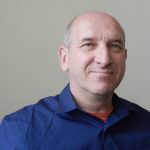
Michel Bauwens
are thinking about what they want to do, and how to do it, and are then doing it and reflecting on their action –it’s an anthropological revolution. I would make this a new model. Just open up universities to making maker spaces.
And I know this is not a direct answer but I want to make sure you have this. It’s the notion of circular finance. If you can prove to me that your activity lowers the human footprint, lowers thermodynamic and social costs, then I’m going to share the benefits with you and finance your transition.
So if you have a Community Land Trust like in France which demonstrably diminishes the pollution costs and health costs in the Department, then that money that is saved in negative externalities can be used to finance positive transition. Just look at it systematically, for mobility, housing.
The next thing I would do is job creation. We have the Brahminic left, educated people with cultural capital but not necessarily money, then we have the Merchant right, but there are people without both. They are the ones suffering, and they are the ones voting for parties that are destroying our democracy. I know people don’t like the word ‘jobs’. I don’t want a job myself, personally, but I think a lot of people do.
It’s a good word, I think.
So create jobs to regenerate the planet… If you want 100% organic food in a city like Ghent for 5 million meals a year, you can hire 15 farmers. You can have a zero carbon transport system, and you can have cooks. Just to have 100% organic food we need 12% of people in the countryside. Six times more people. This is the kind of thing we need to be doing, you know.
So given the world that we have in front of us at the moment, and what the world could be, there’s a lot of imagination –
Yes, I think I have too much imagination! That’s what my wife says…
Where do you think that has come from? Do you think you had an imaginative education? How have you cultivated that?
I was a very lonely child. I was an only child. My biggest enemy was boredom. If you’re bored, you have time to imagine. That emptiness paradoxically became the richness.
I was going to say it was your greatest enemy, but it sounds like it was also your greatest friend in some ways as well?
Yeah. It’s the oyster thing, right? So you have the grain of sand in the oyster which creates the pearl.
Yeah, yeah.
It’s how you transform your suffering into some positive that makes your life successful I think. So the other thing was I was very weak physically as a child. So my intellectuality became the only thing I could do to actually have a sense of self-worth. So that’s, I guess, the two together.
ACKNOWLEDGEMENT – Interview between Rob Hopkins and Michel Bauwens – 25 June 2018
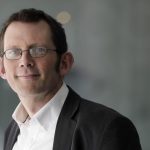
Rob Hopkins Transition Movement
.
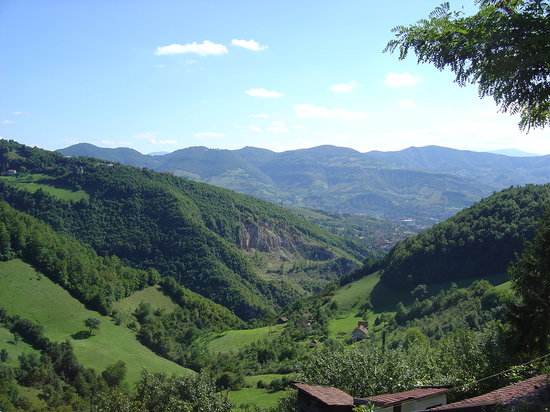
REPORT FROM BOSNIA
15 – 23 October, 2016
Having met the Healing Hands Network at a conference one weekend, I asked if many of their clients had scars. “Nearly all of them” came the reply. So, I offered to get a team of ScarWork therapists together to go to Sarajevo and help; my colleagues were Kat Chu, Emma Holly and Megan Bennett. We raised the money through online donation, and took a week out of our clinics. Filmmaker Georgie Scurfield accompanied us. This is my diary, written while we were there. I sent an abbreviated version to our generous supporters so that they could share our experience.
TO READ JAN'S DIARY IN SARAJEVO ..... - PLEASE CLICK HERE +
Saturday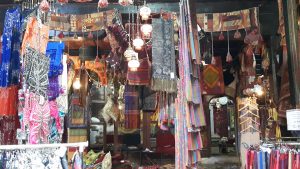
2pm. Well, here we are, Kat and I, in Sarajevo! We start work on Monday so some time to rest and explore. Megan and Emma arrive late this evening to complete our little team of ScarWork therapists. We are so grateful to all our generous donors who made this possible; our clients, friends and family. What they contributed paid for our flights and supports the Healing Hands Network infrastructure; the premises for the clinic, insurance, accommodation for therapists with some money to cover the basic outgoings, interpreters, taxis to and from the airport and the outreach clinics, etc. We have covered the rest ourselves – getting to and from the UK airport, our lunches and evening meals out, etc. Plus, we’ve all taken a week out of our busy clinics for what is going to be an amazing experience.
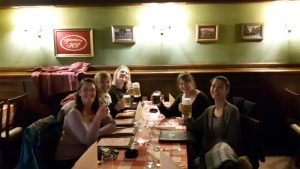 Sunday
Sunday
8am. We’re all four of us here now – up till 1am, chatting excitedly! I was woken by the loudspeaker from the nearby minaret. Couldn’t get back to sleep so drowned it out with radio 4 – thank goodness for iPlayer. The Shipping Forecast with its predictable, rhythmic chant, backed by the fervent call to prayers, created an interesting interplay which succeeded in lulling me back to sleep. Woken by early morning traffic, bright and ready for a day of exploring Sarajevo.
First today, our lesson on how the clinic and outreach are organised, our work timetables, etc. Then time to ourselves and we wander down the hill to Sarajevo’s centre, soaking up the atmosphere of somewhere so different from home. Such variety in this city; from the bazaar where we could be in an Arab souk, to the Brewery bar and restaurant with jazz and great beer. Not much sign of the predominant religion here; a few women in headscarves only……and the minaret calls, of course. Everyone seems very friendly – the young speak a bit of English and sometimes they are very fluent. The older people rarely speak English but are patient with us as we mime to get what we need in the shops and restaurants.
Monday
10pm. What a first day! Megan and I were on ‘outreach’ which means we went to a Sarajevo suburb and set up our couches in a community hall. Today I worked on people with a variety of scars including a 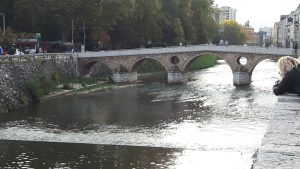 sniper bullet wound where a ‘dumdum’ bullet had hit the shoulder. These are expanding bullets, which create deep internal damage. An odd sensation, the feeling of fragmented soft tissue. I’ve never felt anything like it before. A similarly odd and very satisfying feeling as the tissue reintegrated and became more solid, more compact, more normal under my hands as I worked on it. Even more so when the client demonstrated an increased range of movement in the arm.
sniper bullet wound where a ‘dumdum’ bullet had hit the shoulder. These are expanding bullets, which create deep internal damage. An odd sensation, the feeling of fragmented soft tissue. I’ve never felt anything like it before. A similarly odd and very satisfying feeling as the tissue reintegrated and became more solid, more compact, more normal under my hands as I worked on it. Even more so when the client demonstrated an increased range of movement in the arm.
I also worked, today, on people with:
A fractured nose, using BoneWork[i]
Back pain stemming from abdominal trauma, primarily emotional in origin
Back pain stemming from an old abdominal surgery, nothing to do with the war
Scars from a hip dysplasia repair in childhood.
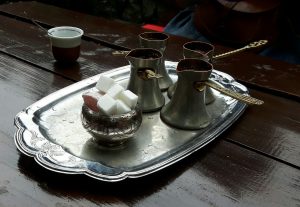 We came to work primarily on scars; some of these are what we would see in the UK, but the majority are from the war. Most people back home have scars; here the frequency will be higher, naturally, and often from a violent source.
We came to work primarily on scars; some of these are what we would see in the UK, but the majority are from the war. Most people back home have scars; here the frequency will be higher, naturally, and often from a violent source.
The clients are directed to Healing Hands Network (HHN) mainly through the different associations in Sarajevo: Women Victims of War; Concentration Camp Union; Civil War Victims, and Mothers of Srebrenica. The people we met have a feeling of real stoicism about them. They’ve been through so much. It truly puts our own problems into perspective.
Wednesday
The last three days have whizzed by! This is seriously hard work. Although the giving of our time and skills is often a joyful experience, I still feel like a tired workhorse tonight!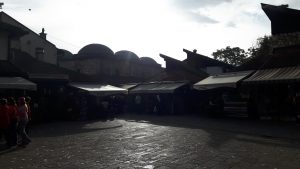
When I came out to Bosnia I was prepared to be overwhelmed by the pain and anguish the people would be holding in their bodies. What I wasn’t prepared for was being overwhelmed by their gratitude. I’ve been hugged, kissed, thanked, had my hands kissed, had my hand laid against someone’s heart to show how the energy from the treatment was flooding through them…..it’s often had me on the verge of tears. Healing Hands Network provided a booklet before we came here and there is a lot of information on self-care and how to deal with the difficulty of working with people in such pain; it is really important to read this in advance.
The damage we see in some of our clients is terrible – their bodies have been deformed by bullets, shrapnel, grenades…..but their hearts are open and their gratitude to us so humbling. They need help with the structural deformation and it is good to see that more ScarWork and BoneWork therapists have been going out over the last couple of years, since our initial week there.
 Friday
Friday
When you are meeting people every day whose bodies and faces are scarred and deformed. Who have lost loved ones, families, old friends. Who are still shaking or who have other symptoms of PTSD (Post Traumatic Stress Disorder). Who can hardly believe that you are happy to touch their scars, their bodies, despite their injuries. Who weep with gratitude when you help them move limbs again, when you ease some of their pain. When you laugh with them. When you cry with them… because our eyes filled a lot. When you meet this daily you cannot remain unmoved, untouched. The hardest thing, as therapists, has been making sure we don’t take on the ‘stuff’ our clients carry. The years of locked-in trauma, fear, anger, betrayal, loss……this is easy to take on board if you’re not careful and could affect our own health if we didn’t take good care of ourselves. The stories we hear; stories of rape, brutalisation, torture and starvation, would break your heart. When we work on the scars the emotional trauma often surfaces, hence the tears. We hope that for our clients the pain and the grief may lessen somewhat.
What is really marked in the clients we work with is their strong desire – compulsion – not to pass the trauma onto the children. “They are the next generation”, the interpreter explains, “The people who went through the war try to protect the young people, not to contaminate them”. And so, when we ask what happened to the clients, the reply is often “Oh, it was in the war” – and that’s all we are told. Sometimes there is a whisper in the interpreter’s ear and we are given an abbreviated version of events – just as much as we need to know to be able to help them. But occasionally the whole story will emerge.
Georgie is with us making a film about HHN, and for this reason the whole stories are sometimes told, for the sake of telling the world that people are still suffering, still reliving the pain. These stories can be unbearable, but they must be related. And the years of starvation have also left their mark; almost every woman who went through the three-year siege of Sarajevo has osteoporosis – it’s just a fact of life for them. Just because the war is over doesn’t mean that it is not still there, in the people’s lives, bodies, minds; most will carry it to their graves.
We lead very privileged lives in our own country. We’ve had our wars, our losses, our griefs, and we remember them every year when the symbolic poppies flood our lives. Working here has made me think about how the generations before us, in the UK, dealt with two wars and how those wars have affected our own society over the decades. In Sarajevo the raw loss is too recent; just over 20 years is insufficient to have cleansed the nightmares.
It’s been a very good week – a few tears, a lot of different experiences, and it’s been great to be part of the team with Megan Bennett, Emma Holly and Kat Chu Kat.
Tomorrow we have a day off – much deserved and welcomed – and we’ll be visiting the Bosnian ‘pyramids’. This promises to be an interesting day and I’ll report back!
Monday
Great to be home again.
We were able to help a lot of people last week – between the four of us we treated 100 people over the 5 days. I have very happy thoughts and memories of this experience as well as a relief that the intensity of it all is over! I’m still processing everything that happened and I feel that the experience has changed me in a subtle way. When I was working on someone’s scar the other day, in my clinic, she said that I had changed how I was working. I think this is because I had no time to waste in Bosnia; I had 1¼ hours to work with each person and then I wouldn’t normally see them again; not enough time to deal with some of those wounds. I just worked as fast and efficiently as I could. I like to think I’m an efficient worker anyway, but I think that the time element, combined with the numbers of clients all with major trauma of some sort or another, and the need to think quickly and ‘out of the box’, upped my work level and ability. The experience of piecing together feet, shoulders etc. that had been smashed to smithereens was invaluable, and the reward of seeing the results and the clients’ increased mobility and decreased pain was profound. I learned so much and am grateful to these people who entrusted themselves to me – to all of us – with such open hearts.
With thanks to Healing Hands Network www.healinghandsnetwork.org.uk for organising our trip and enabling us in this work.
ScarWork is the original creation of Sharon Wheeler, to whom I am extremely grateful: http://www.wheelerfascialwork.com/. I met Sharon four years ago and am now an accredited ScarWork tutor. Sharon’s ScarWork and BoneWork have changed how I see the body and have been invaluable in developing my clinical practice.
Jan Trewartha has been in healthcare since 1979. A former State Registered Nurse trained by the Queen Alexandra Royal Army Nursing Corps (QARANC), she has worked in complementary therapy since 1992, developing her present work specializing in physical and emotional trauma release. This is the culmination of many years of training and experience in different disciplines. She has had the privilege of working at grass roots level with medical patients on the wards and in the operating theatre. This is what has directly influenced her choice of specialisation; trauma and scarring.
Jan has run her own practice since 1992 and been teaching since 1993. She also lectures on her specialist subject, scars and adhesions. Her background includes: Therapeutic Massage, Aromatherapy, Biomobility, Energy Field Therapy, ScarWork, BoneWork, Structural Integration for the Cranium and TMJ therapy. She also runs Body in Harmony Training, providing the 4-day course in Fascial Unwinding & Energy Awareness, the Diploma in Body Realignment and training in Sharon Wheeler’s ScarWork. Jan is the Fascia & Energy Representative for the APNT (Association of Physical and Natural Therapists) and a member of the Biotensegrity Interest Group (BIG).
In 2014 Jan founded and directed the first British Fascia Symposium – a practice-led event designed to raise awareness of the importance, amongst therapists in the UK, of understanding and working with the fascia. Therapists from around the world fly in to attend this event which is now well-established and runs every two years.
When you’re meeting people every day who are scarred, bodies deformed, sometimes faces deformed. Who have lost loved ones, whole families and old friends. Who are still shaking or demonstrating other symptoms of PTSD (Post traumatic stress disorder). Who can hardly believe that you are happy to touch their scars, their bodies, despite their injuries. Who weep with gratitude when you help them move again, when you ease some of their pain, when you laugh with them….cry with them. Because our eyes filled a lot…… When you meet this daily, you cannot remain unmoved. You can’t let it get to you, as a therapist, or it would get you down, but you wouldn’t be human to remain untouched by it all.
The stories we heard from these people who were starved in the siege (almost all the women have osteoporosis as a result), who were in the concentration camps, who were raped, who were tortured and brutalised, who lost everything……
We lead very privileged lives in this country. We have more than enough to eat, roofs over our head, and our friends and families. I have returned even more grateful for my wonderful life in this lovely country.
www.bodyinharmony.org.uk
jan@bodyinharmony.org.uk
tel: 01753 867877 : 07724 027 748
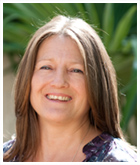
Jan Trewartha
This article was published by Massage World magazine in May 2018 and is reproduced with their kind permission. https://www.massageworld.co.uk.
[i] Sharon Wheeler’s BoneWork is aimed to help with badly healed fractures, displaced bones, etc.
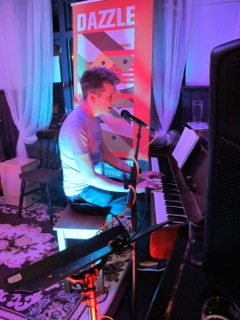
DAZZLE !
Here was hot-blooded action!
Whilst Reading churches almost unanimously shied away from dialogue involving ‘the Dark’, Fathers Vincent and Gary of St John and St Stephen’s were keen to enter the conversation.
Within two months we had Dazzle – a 10 day mini-festival …
TO READ ABOUT THE DAZZLE FESTIVAL ..... - PLEASE CLICK HERE +
Within two months we had Dazzle,
a 10-day mini-festival, organised, advertised and peopled.
A joyous selection of music, theatre, pub singalongs, school gardening project, and a challenging series of talks on seriously dark issues: climate responsibility, Doughnut Economics (Kate Raworth’s radical and equitable economic system), Sexuality, Piracy, Education, the Absence-Presence of Spirit, and how cleaning up dog shit can begin a positive cycle of community transformation. It was stimulating, joyous, controversial, impactful, planned with humour, laughter, community, compassion for one another’s needs, and a faith in the flow. The church is repeating the endeavour this year. Plans include a human ‘fox hunt’ through Reading town…
For a brief flavour, watch here: A Short Version of Dazzle
For full videos of the talks, watch here:
Kate Raworth – Doughnut Economics (a revolutionary approach to the way we organise our lives) – HERE
Kester Brewin – Mutiny and Enlightening Darkness (in praise of shadows in education and activism and why learning should embrace risk) – HERE
Alison Webster – Transgression and Shadows (crossing boundaries in sexuality, faith and society) – HERE
Dave Richards – The Diggers’ Revolt (radical inspiration from the garden) – HERE
Gary Collins – Songs of Desire and Love (does desire and absence make the heart grow fonder?) – HERE
Vincent Gardner – Newtown: Sex, Drugs and Dogshit Theology (where and what to plant this autumn [sic]) – HERE
Professor Helen Bilton – Taking Education Outside (nurturing imagination where the wild things are) – HERE
Photo – Mark Northfield – by Jennifer Leach
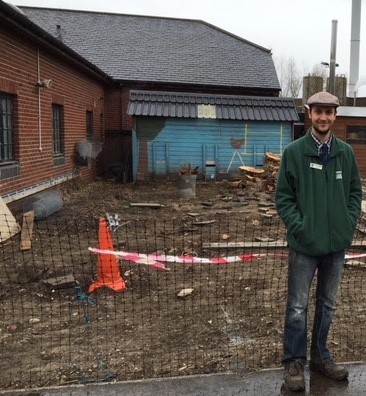
TOM AND THE CITY FARM DUCKPOND
Here is Tom’s Story in his own words –
”I could start at the VERY beginning. Describing the very animal-based holidays and day trips I use to take as a kid. But the real beginning of the duck pond renovation project starts back in 2008, the year I started working at Deen City Farm”.
TO READ TOM'S STORY ..... - PLEASE CLICK HERE +
Tom’s Story – continued
My early years at the Farm were filled with all kinds of learning. The thing I had the most interest in was (and still is) animal welfare. As the years went on I did everything in my power to improve animal welfare for the farms animals, but there is only so much you can do in a non-management position.
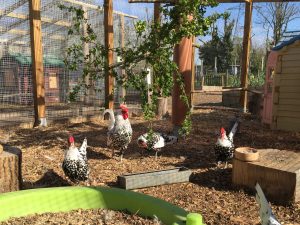 In 2014 I applied for the position of Lands and Livestock Manager at the farm. My interview consisted of a presentation of my view of the farms future. Point number 1 on that presentation was to knock down and rebuild our old failing chicken and duck areas. This was the perfect opportunity to submit my idyllic vision of an area that made the best use of space, while offering amazing animal quarters that actually constitute free range, as well as offering a much more attractive and visual area for the public and children to enjoy.
In 2014 I applied for the position of Lands and Livestock Manager at the farm. My interview consisted of a presentation of my view of the farms future. Point number 1 on that presentation was to knock down and rebuild our old failing chicken and duck areas. This was the perfect opportunity to submit my idyllic vision of an area that made the best use of space, while offering amazing animal quarters that actually constitute free range, as well as offering a much more attractive and visual area for the public and children to enjoy.
I got the job and got started right away. Being a charity, money is always a concern. So I ended up submitting 3 projects ranging from bare minimum materials needed, to the best I could come up with. I lived in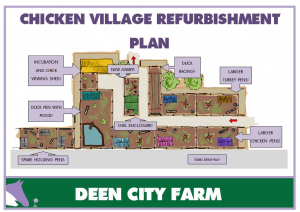 hope but never thought my ideal vision would be realised.
hope but never thought my ideal vision would be realised.
In 2015, I met with Brian and Sally Dillon who had expressed interest in helping a farm project via email, in memory of Nick Dillon who died in 2000.
I think they could see my passion for the project and how it would help and benefit animals and people alike. They VERY kindly agreed to fund the ‘best’ proposal.
We had already removed our old enclosures due to safety. So work on the new ones started pretty much immediately!
The build was a real team project. Never in my time at the farm have so many people come together to help achieve a goal. With my designs and a few tweaks along the way, we all chipped in to build the new poultry area and duck pond. A large portion of the build is thanks to my dad Richard who essentially became the foreman of the site. Taking my ideas and turning them into a reality.
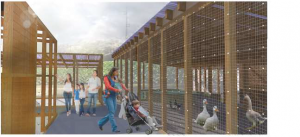 After a long 2 and a half years of squeezing in any amount of building we could throughout our busy schedules, the area was complete. We had our open day in December 2017 and the chicken area and duck pond is loved and enjoyed by all who visit the farm. And by me too.
After a long 2 and a half years of squeezing in any amount of building we could throughout our busy schedules, the area was complete. We had our open day in December 2017 and the chicken area and duck pond is loved and enjoyed by all who visit the farm. And by me too.
The project allows for much better animal welfare, but also a better opportunity for children to get up close and learn about the wonderful animals who live there. The project is such a success that I have been contacted by at least 3 other local farms requesting information on how we achieved the setup that we did.
Not only has the new project allowed for all this to happen, but in moving all the birds into 1 location, it has freed up the previous space on the farm yard to introduce a new project involving donkeys, aimed at people with learning, behavioural and physical disabilities.
On behalf of Deen City Farm, its animals and visitors, I wish to thank Brian and Sally for their donation, their kindness and their continued support. On a personal note, I’d like to thank them for allowing me to achieve a dream I never thought possible.
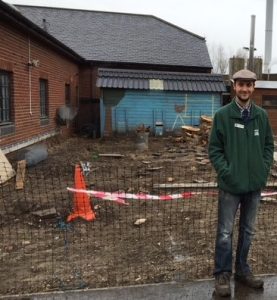
Tom Hogan
June 2018
Other great sustainable benefits inspired by Tom from this project include:-
- As the ducks have more space and a more interesting and pleasant environment – it means they’ve started laying more eggs and of better quality – which in turn means more eggs for the Farm to sell.
- As the new enclosure is now completely safe from foxes at night because it’s safely enclosed – it means that the ducks don’t have to be put away at night in their secure hut. This saves staff time and also gives a better quality lifestyle to the ducks in the summer time as they can remain free outside their night time homes and go to bed when they’re ready.
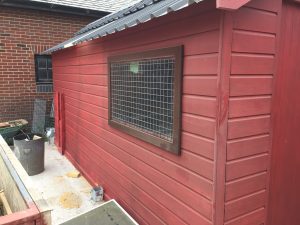
- The use of recycled ‘green’ tyre shreddings for the flooring of the Duckpond area means its softer on the ducks’ feet as well as being easy to wash down and clean.
- The new respite area for sick fowl and other animals – enables the Farm to better manage the health of the birds and also provide respite service to the community when needed.
- The new improved chicken- egg hatchery shed and its outside area for schools to visit – this enables an improved viewing service to children, from school visits as well as with their families, to see eggs hatching and chicks developing. It’s also improved the production for egg selling by the Farm.
- Tom was interested in stocking unusual rare breeds of hens and turkeys in order to support their future and to provide a unique aspect to the range of fowl in the Farm for attracting visitors.
- Having wheelchair access to bird enclosures has already allowed the Farm to have more jobs for disabled volunteers.
- Thanks are also given to Richard Hogan who did a marvellous job building the Birdland area. He explained that this was the first time he’d done a project of this scale and size and gave considerable thought to planning its design with Tom so that it would be accessible, sustainable and environmentally friendly as well as fabulous to see.
Below are excerpts from email updates from Tom which shows how the project unfolded from August 2015 to December 2017 together with photos of progress being made –
10/8/15
My name is Tom and I am the Livestock Manager of the farm. The poultry area is all my design and planning.
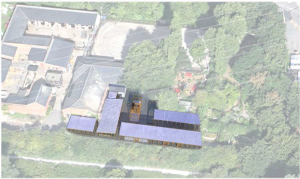 I’m glad the work we are putting in is making a noticeable difference and I am pleased you have fond memories of the farm. As you have seen, we are very slowly going through
I’m glad the work we are putting in is making a noticeable difference and I am pleased you have fond memories of the farm. As you have seen, we are very slowly going through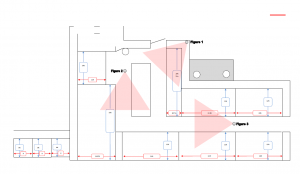 the farm section by section, trying to make everything a bit nicer and more up to date. The poultry area being one of the placed we’ve started. We are always looking for financial help as many of the changes we are making are more out of necessity than anything, as our site is now getting quite old.
the farm section by section, trying to make everything a bit nicer and more up to date. The poultry area being one of the placed we’ve started. We are always looking for financial help as many of the changes we are making are more out of necessity than anything, as our site is now getting quite old.
The poultry area in its entirety was ultimately budgeted for but we have managed to spend that already on the section we have built. I would be more than happy to meet with you both to talk about both my plans for the duck pond and the entire birdland area.
16/10/15
Since our meeting, we’ve started relocating the logs from the area and will begin tackling the pile of earth on Tuesday in preparation!
1/12/15
In the last couple of months, we have been preparing for the next stage of building. With the help of some willing volunteers, we cleared and flattened the next area of ground (where those logs where), ready for the concrete. We were hoping to concrete a large portion of the site this month, however, due to difficulties getting a protected, dead tree removed in time, we had to change our plans slightly. On the plus side, the smaller area we have now concreted is more than enough for us to continue working without delay.
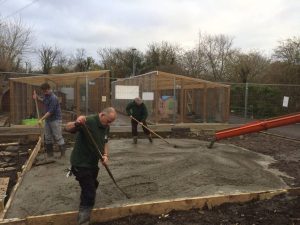
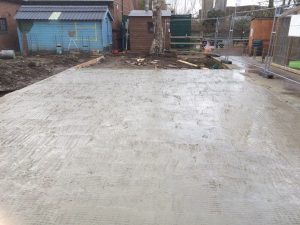 As of this email, we have a nice concrete base to start work on the Turkey pen, before moving on to the Duck pond and Aviary. The winter months are generally a quiet time for us, so we should have plenty of opportunities to work on it. Hopefully! We have some supplies to get us started, the dead tree will be gone ASAP, in time for the next stage in the redevelopment, and it shouldn’t be too long before we need the concrete truck again!
As of this email, we have a nice concrete base to start work on the Turkey pen, before moving on to the Duck pond and Aviary. The winter months are generally a quiet time for us, so we should have plenty of opportunities to work on it. Hopefully! We have some supplies to get us started, the dead tree will be gone ASAP, in time for the next stage in the redevelopment, and it shouldn’t be too long before we need the concrete truck again!
I have attached a few pictures of us levelling the concrete, I think we are all getting quite professional now!
Note the annoying tree in the background. Its days are numbered.
17/12/15
Everything is going well so far, preparing for our Christmas fun day on Saturday (so fingers crossed for good weather) and also getting ready for piglets in the next few weeks! All very exciting.
24/12/15
It has been a busy week and we now have 10 extra pigs to look after J .
12/3/16
We have been making progress. This week we had the dead tree taken out finally! So we have prepared that area for concrete.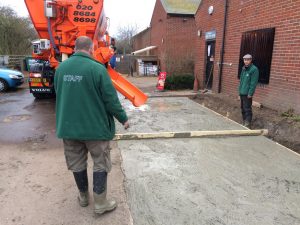
The whole of the remaining muddy area has been cleared with the digger and levelled. It’s just a case of getting concrete in week by week. If we can get all the concrete that’s left, down in the next few weeks, then all we have to do is actually build! Which is exciting.
We have had some concrete since we last met and building is starting to take place on that segment.
It’ll be nice when the boring concrete bit is over as I’ll be able to give you updates with more interesting pictures! But not much longer now.
18/4/16
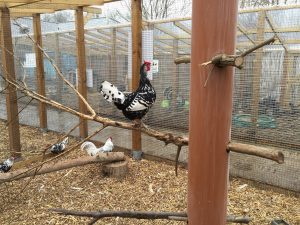 Just thought I’d email a few pictures of the ‘activi-trees’ that I’ve finally started for the chickens.
Just thought I’d email a few pictures of the ‘activi-trees’ that I’ve finally started for the chickens.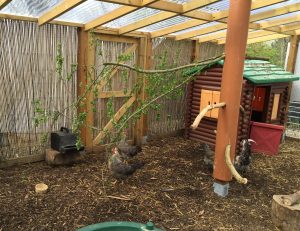
They are basically upright sewer pipes with holes bored through so that we can put in tree branches. The idea is that they are regularly changed to keep things interesting. Also (as soon as I pop to the shops) I will be hanging fruit and veg off of them too for them to climb up and get.
Also, more concrete is coming tomorrow.
4/6/16
All is well on the farm. Being spring there has been a massive influx of chicks and ducklings so that’s always nice.
The project is going really well. The isolation pens have been built, completed and already have some residence, all the remaining materials for the ENTIRE project are being ordered and the last 2 remaining concrete sections are booked for the coming weeks. The chick shed is also nearly ready (minus a coat of paint).
18/8/16
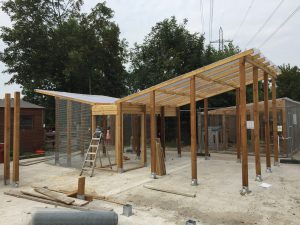 Despite being very busy with holiday programmes and activities we have managed to make great progress!
Despite being very busy with holiday programmes and activities we have managed to make great progress!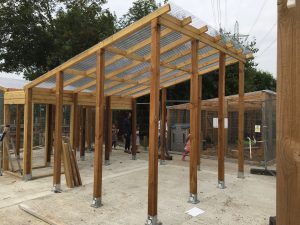
The new aviaries have been built and have mesh and plastic on their roofs. The smaller one on the left is for Edna the Owl and the bigger one on the right is for the aviary birds. There is a nice storage area between them and structurally I think these look pretty interesting together. We have also started painting the chick shed and a viewing window has been put in.
It won’t take long to get the mesh on the sides of these and then we can FINALLY move on to the big one, the duck area!
3/11/16
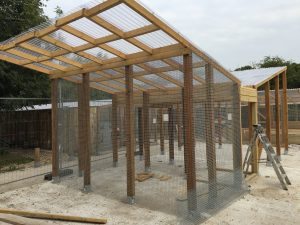 Things are now picking up pace. We were waiting on a delivery of shiplap for the aviary which held us up, but we are all go now! The aviary for small birds is, I’d say 95% done now, due to be finished in a week or so. Then Edna’s aviary connected to it shouldn’t be long after.
Things are now picking up pace. We were waiting on a delivery of shiplap for the aviary which held us up, but we are all go now! The aviary for small birds is, I’d say 95% done now, due to be finished in a week or so. Then Edna’s aviary connected to it shouldn’t be long after.
This aviary is the most complex part of the build, so after this the rest should shoot up, with a rough completion date of around March.
20/2/17
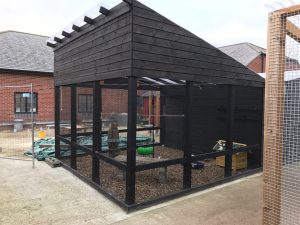 An exciting update!
An exciting update!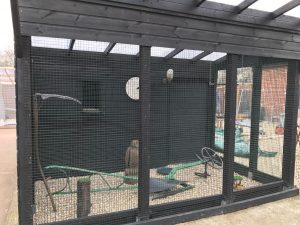
We are finally moving on to building the chick pen and duck pen. The complicated and time consuming aviaries are done! Honestly though, I really do think they were fully worth the time and effort.
The canaries have moved in to their one. I don’t think I’ve ever heard them as vocal as they have been since the move. They have been singing away daily, clearly loving the space, perches and being closer to the wild birds in the park without a brick wall in the way.
Edna the owl has also moved! She went for a more relaxed approach to her move, acting as if she’s always lived there, opting to have a nap almost 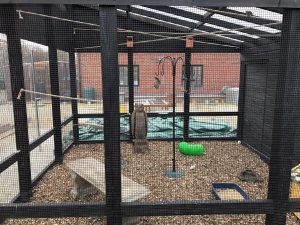 immediately. I’m pretty sure she
immediately. I’m pretty sure she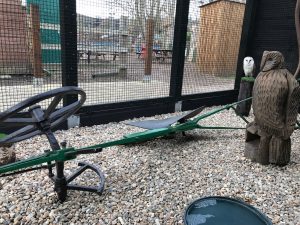 likes it though.
likes it though.
I feel with the nicer weather approaching, paired with the fact that the final builds are back to the standard formula we are used to, I think we will be moving a lot faster now!
27/7/17
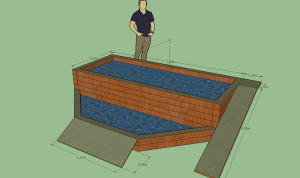 Before the holidays we were very much in the planning stage of the internal design of the pen. The main structure is complete now so it’s just the inside left.
Before the holidays we were very much in the planning stage of the internal design of the pen. The main structure is complete now so it’s just the inside left.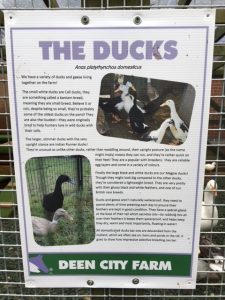
We had planned to build the ducks internal house of lovely stone bricks we had. But this unfortunately proved not only extremely hard but also, we haven’t laid bricks before, so thought it best to start with something similar. So the plan is to build it with breeze blocks again (like the original plan) and simply jazz it up a bit when it’s done.
I’ve also settled on a pond design which I’ve attached.
The plan is to order all the materials ASAP and get building as soon as the kids go back to school.
4/10/17
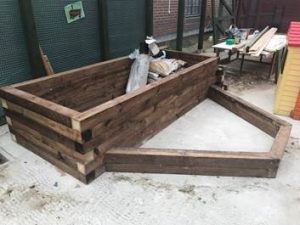 It’s been a long road, but we are so so close to the completion of this amazing project. We are completing the pond (which structurally has already been built) and we’ve
It’s been a long road, but we are so so close to the completion of this amazing project. We are completing the pond (which structurally has already been built) and we’ve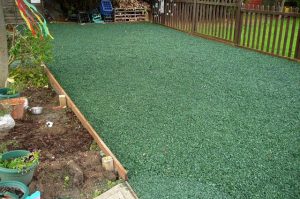 only really got a few little touches left!
only really got a few little touches left!
It’ll have lovely green rubber woodchip (rubber-chips?), colourful wendy houses as sleeping and nesting quarters, a bench with flowers, obviously the pond and any little things we come up with the keep the ducks entertained.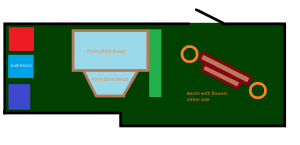
21/12/17 OPEN DAY OF THE NEW DUCK POND AND BIRD AREA – KNOWN AS ‘NICK’S BIRDLAND’
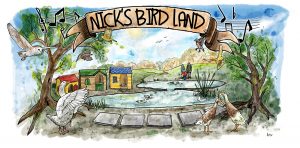
‘Nick’s Birdland’ Poster – designed and created by Alice Cheetham, Deen City Farm
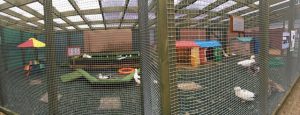
The new Duck pond with happy ducks and geese
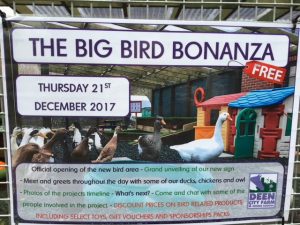
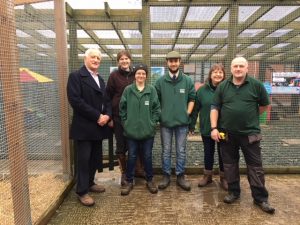
Tom, Richard, Alice and the Deen City Farm team with Brian
.
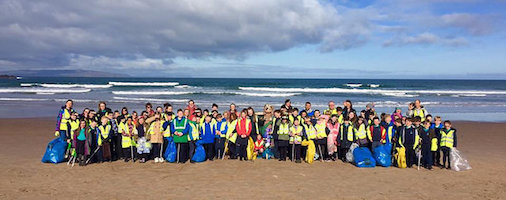
OVER LAND AND SEA, TO ABER :
stories from what we’d call … the global ‘Keep-going’ Campaign.
Firstly, let’s introduce ourselves to and find hope in, the inspiration of the international PERMACULTURE movement, whose ideas holds high a banner to positive action, through 3 CORE TENETS:-
- Care for the Earth through provisions for all life systems to continue and multiply
- Care for people – provision for people to access those resources necessary for their existence
- Return of surplus by reinvesting surplus back into the system to provide for the first two ethics; including Waste back into the system and recycling into usefulness.
The players in the following Stories wouldn’t (I don’t think) see themselves as part of Permaculture. That said, to me their Stories embellish these fine words with examples of vibrant action.
TO READ THEIR STORIES ..... - CLICK HERE +
Servas Guests from Poland
10 years ago, we were Servas Hosts; members of an international post European wars’ project to enhance peace, through travelling and hospitality. Hosts offered free accommodation for three nights to travellers, vetted by Servas but unknown to hosts. Three young Polish guests arrived one summer. Marvellous adventurers; we invited them to stay longer. After several trips to Ascot by BUS from Krakow, the big decision was made … they set off to explore living in Aberystwyth, North Wales. Hand luggage, by bus, scant funds, no accommodation, no work. They found a place to live. Worked all hours of the day and evenings, cleaning and became the main- stay of a restaurant !
One the three, Roksana married Simon, studied and secured an administrative job at the University.
Writing to Roksana about Plastic pollution, she wrote: “Simon and I are absolutely with you on this subject. Find it appalling. So good you are using your time to do something about it”.
So I reconnected with Roksana who straightway sent me information about Welsh AntiPlastic Groups, via her Vegan friend. She has introduced me to the environment charity and Welsh participant groups .. Aber, Aberporth, NewQuay group of SURFERS AGAINST SEWAGE. Selected by Prince Harry and Ms. Megan Markle as one of the charities to receive benefits from wedding donations.

https://www.facebook.com/ pg/AberystwythBeachBuddies
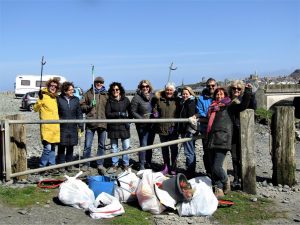
Aberystwyth Beach Buddies
Inside Wales’ plastic-free community, where coffee cups are biodegradable, milk comes in glass bottles and toothbrushes are bamboo
Aberporth has made headlines across the world for its own kind of plastic surgery.
“Initially, I found it a bit frightening. I’m a new business owner, and I was sceptical about the whole thing.”
A Welsh village’s quest to become the first community in the country to be classed as plastic-free was not for everyone, at least to start with.
After all, the term “plastic-free” can be daunting in itself; businesses need plastic to survive. We use it every day and it’s nearly impossible to function without it.
That’s the point made by Gethin James, a café owner in Aberporth, the village that has just been officially recognised as being a plastic-free community.
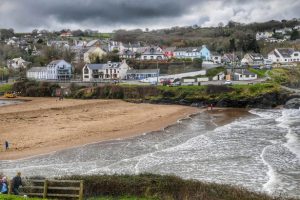
The immaculate beach at Aberporth
“The title ‘plastic-free was a little bit frightening,” says Mr James, as we look out onto the immaculate Aberporth sand from his beach-side cafe.
“First of all, our beach here is spotless. I didn’t want Aberporth to be seen as having a huge litter problem. Secondly, as someone whose business is 25 to 30% takeaway coffee cups, my initial thought was ‘what am I supposed to do?’
This reluctance is understandable when one considers the harsh reality of operating a business in a small seaside community.
Business might boom come the summer months, but even a mild winter can create a frosty ambience if there’s nobody coming through the door.
It is late January and there is nobody here.
Asking small business owners who have to cut their cloth with precision to fork out more for non-plastic forks is a difficult task.
“I was sceptical,” Mr James admits. “But, once the campaign was explained to me, it made perfect sense.”
That campaign was the brainchild of local filmmaker Gail Tudor. She went on a boat trip around the UK last summer and came back with a burning intention to make a difference, and a belief that something could, and had to be done, even in a small community like Aberporth.
What Gail discovered was something far more dangerous than simple littering, something that could have a direct effect not just on wildlife and the environment, but on human health.
“Microplastics is the real problem,” she said. “They collect toxins that end up in fish and then end up in us, in our food chain.”
Microplastics are tiny pieces of plastic that have been degraded from larger plastic debris.
One particular type – microbeads – are a more prevalent concern as they live in a number of everyday products and are small enough to pass through water filtration systems, meaning they eventually make a home for themselves in our seas.
Upon her return to Aberporth, Gail set about asking local businesses to change their ways, to make a stand and show the way for the rest of the village, the county, the country.
There must be something in the coastal air in west Wales.
First, people in New Quay took a stand against the potential removal of their all-weather lifeboat, then residents in St Davids fought back against a hotel giant, and now the people of Aberporth are waging a battle against plastic, and, more pertinently, waging a war against a way of life that could have serious implications for generations to come.
“We’re a feisty bunch in west Wales,” says Gilly Llewelyn, one of those involved in the fight.
“I wanted to get people interested,” says Gail. “We set up a steering committee and a Facebook page and approached local businesses. In order to be classed as a ‘plastic-free community’ we had to get three businesses to agree to give up three single-use plastic items. People were quite keen to get on board – a lot of people turned up to our initial meeting and our MP Ben Lake came down to see us and offered his support.”
According to Surfers Against Sewage, the conservation charity that has granted Aberporth its “plastic-free” status, one plastic bottle can last for up to 450 years in the marine environment, getting smaller and smaller but never truly disappearing.
Every day around eight million pieces of plastic pollution gets into our oceans, and it’s a growing problem.
In 1950, the world produced 1.5 million tonnes of plastic. Today, it’s more than 320 million, and it makes up between 60 and 90% of all marine debris. Furthermore, it’s claimed that 100,000 mammals and turtles and one million sea birds are killed by marine plastic every year. When broken down, it begins to become clear why that chip tray that blew off your seaside bench, or why that innocent looking bottle top resting on the sand is such a problem.
One gets the sense that although people’s intentions were good, the campaign needed something, perhaps an air of urgency or a semblance of panic.
In December, that came.
When the final episode of Blue Planet II aired on the BBC in December, it depicted in detail the devastating effect that plastic can have.
Creatures were unknowingly feeding plastic to their young. Viewers were horrified, and the programme’s presenter, Sir David Attenborough, closed the show by saying:
“The future of all life now depends on us.”
It had an effect across the country, including in Aberporth.
“That programme really hit home with people,” said Gethin James. “I didn’t know about microbeads and the sheer volume of plastic in the ocean. Once I saw this and the plastic-free group explained the reasoning behind the campaign, that was enough for me to get involved.”
Gethin, a former county councillor who opened the Cwtch Glanmordy cafe in 2015, has since pledged to use wooden cutlery instead of plastic cutlery, paper straws instead of plastic straws, and he will keep his sauce in glass bottles rather than hand out plastic sachets to his customers. The biggest change, however, is with regards to his biggest seller – coffee.
“Coffee cups aren’t recyclable – they have a plastic lining and the lids are plastic. But I’ve now found this product made with a cornstarch lining which is compostable – this is where I can make the biggest impact. The problem is, what I currently use costs around 9p per unit; the new material would cost up to 25p per unit, so we need to find ways to make it more cost effective. I’d like to one day see the manufacturers all stop and change their products to fall in line with what we’re trying to do. There should be a levy on plastic products, so the cost is met from there, not at the other end. This would cause manufacturers to change their whole outlook.”
In the village pub, expensive decisions have been made. Paper straws are being used now instead of plastic ones, despite costing ten times more.
Cafe owner Gethin James won’t even open his doors until Easter.
Oliver Box from the local pub says the extra cost of non-plastic materials has not put him off being a part of the campaign
Owner of the local shop, Mike Allen, has seen an increase in sales since he started selling milk in glass bottles
The man who made that decision has no doubts whatsoever that it’s the correct one; the short-term cost to the pub’s balance sheet paling in significance to the long-term cost to the environment.
“When Gail started this, I was all over it,” says Oliver Box, whose parents own The Ship Inn.
“When I decided to get involved, I didn’t know anything about the extra cost, but it hasn’t put me off. I want to do the right thing. We are, as a society, people that throw things away. I tell my kids not to throw things away. I’ve grown up by the beach and you see chip wrappers and litter everywhere, but it isn’t a littering problem; people put things in bins, but they blow out of the bins. I’ve seen plastic sachets on the beach and once they’re on the sand they don’t go anywhere, until they end up in the sea. What has happened here is amazing. I’ve seen cars pull in to the car park opposite the pub, and people get out and clean up the beach.”
So what has caused this change in behaviour? Why are people in a village with a population of fewer than 2,000 people trying to make a difference?
“It’s a Welsh thing,” added Oliver. “People are proud of what they get to see, but I believe you just need people to make it happen, and it has in Aberporth. It’s made a difference already. I’ve found someone who provides compostable straws that you can put into your food waste, so manufacturers are obviously listening.”
London House Stores, which acts as the town’s nucleus, was one of the first and most passionate proponents of the campaign.
It’s the very definition of a local shop. You can’t speak to the owner, Mike Allen, for more than 90 seconds without someone coming in to purchase an everyday item.
‘People are buying more milk, whether that’s a nostalgic thing or not, I don’t know,’ says Mike
 Could bamboo toothbrushes become the norm in years to come?
Could bamboo toothbrushes become the norm in years to come?
All of whom, naturally, are greeted by Mike on first-name terms. This relationship that Mike has built up with his customers since taking over the shop eight years ago has not suffered since he started to sell milk in glass bottles, loose leaf tea, rice in a paper box as opposed to plastic packets, bread in a wax wrapper, wooden clothes pegs, and bamboo toothbrushes.
“We’re not forcing people to join the plastic-free revolution,” says Mike.
“We’re giving people a choice. People can chose to be a part of it rather than feeling forced into it. The first thing I did was ask the milkman if we could have our milk in glass bottles and he said we could. We only have them in pints, but it’s a start, and what we’re finding is that people are buying more milk. Whether that’s a nostalgic thing, I don’t know, but other places are getting involved now, partly because of the environment and partly because it’s good for sales. We’re ordering more milk now and it’s all shifting.”
But there must be people in Aberporth who are against the campaign?
“There’s nobody who’s actively against it,” says Mike.
“There’s been some cynicism about being labelled ‘plastic-free’ because it’s impossible to be totally plastic-free, but we’re trying. We’re trying to reduce the amount of plastic we use and to raise awareness. If we get one person to buy two pints of milk a week in glass bottles, that’s two bits of plastic not going to waste, not ending up in the ocean. It doesn’t sound like a lot if one person does it, but if it’s the whole of Aberporth, and then the whole of Ceredigion, that’s a lot of plastic. We need to deal with our own waste, and we need to be responsible for our own waste. The less we produce, the less there is to deal with.”
Mid and West Wales Assembly Member Simon Thomas is proud that a community in his home county has achieved what it has. But, he says, it is just the beginning.
He is now calling on the Welsh Government to introduce a levy on single-use plastics, something that he believes will give more people in Wales the opportunity, and the incentive, to make a difference.
“I’m very pleased that the first Welsh community to get this status is in Ceredigion,” said Mr Thomas.
“I’ve been really struck by the change in public attitudes. I think people have realised the scale of the pollution problem. There was interest before, but the Blue Planet programme came along and interest soared. The 25-year plan is an England-only plan, and recycling in Wales is generally much better, and I’m currently lobbying for a levy to be introduced on single-use plastics, which would hopefully make alternatives more attractive to people.”
Prime Minister Theresa May has revealed her own vision of how to tackle plastic waste, outlined in an ambitious 25-year plan announced earlier this year which will, among other things, introduce charges on single-use plastic items and provide funds for plastics innovation.
She admitted that “in years to come, I think people will be shocked at how today we allow so much plastic to be produced needlessly. We must reduce the demand for plastic, reduce the number of plastics in circulation and improve our recycling rates.”
The recycling rate in Wales is actually a lot better than it is in England, with a 64% target set by the Welsh Government to be achieved by 2020 already having been met. In statistics released last year, Wales was ahead of the rest of the UK, second in Europe and third in the world.
This proactive approach which has been embraced by local authorities up and down Wales means we, as a nation, can lead the way when it comes to the reduction in single-use plastic, and politicians are keen to make sure that happens.
The powers that be in Cardiff Bay say a “plastic-tax” is a real possibility, and that the idea could be moved forward later this month.
“We recognise the strong support for a disposable plastic tax,” a Welsh Government spokeswoman said.
“It is one of the four shortlisted new tax ideas, which we are considering as part of the process to test the Wales Act 2014 powers. We have been exploring all four proposals over the last six months and the Finance Secretary will announce next month which tax idea he intends to take forward to the UK Government to test the Act.”
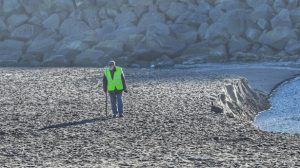
Man strolls along Aberporth beach, without a piece of litter in sight
Before leaving Aberporth, a stroll on the beach reveals the regard in which this village is held by the people who work and live in it.
There are no wrappers here, no bottle tops, no plastic cutlery, no plastic bags.
What lies beyond and below the waves, however, is out of sight. This community is making sure it’s not out of mind.
ACKNOWLEDGEMENTS : Article – Robert Harris, Wales Online 2/2/18
Plastic in our seas
According to Surfers Against Sewage, the conservation charity that has granted Aberporth its “plastic-free” status, one plastic bottle can last for up to 450 years in the marine environment, getting smaller and  smaller but never truly disappearing.
smaller but never truly disappearing.
Every day around eight million pieces of plastic pollution gets into our oceans, and it’s a growing problem.
In 1950, the world produced 1.5 million tonnes of plastic. Today, it’s more than 320 million, and it makes up between 60 and 90% of all marine debris.
Furthermore, it’s claimed that 100,000 mammals and turtles and one million sea birds are killed by marine plastic every year. When broken down, it begins to become clear why that chip tray that blew off your seaside bench, or why that innocent looking bottle top resting on the sand is such a problem.
Find out more about SAS – HERE
RESEARCH FOR THIS STORY: Anne Yarwood
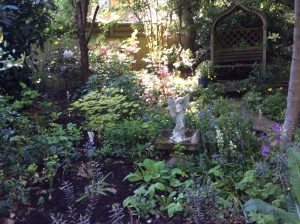
The Yarwood’s Garden in Spring, 2018

THE COFFEE MERCHANT’S STORY : Duncan Rayner
Duncan takes us alongside himself, going up and down through boyhood to becoming a Coffee Merchant.
TO READ Duncan's Story ..... - CLICK HERE +
My research indicates that I come from ‘agricultural worker’ stock round Cambridge in the 1780’’s. My grandparents moved to the Stanwell, Middx area and my grandfather established a bakery. Dad was born in 1896 the youngest of 8 siblings. In1914 he signed up and fought in the Great War seeing action on the Somme. In 1919 he married but sadly his first wife died of consumption in 1922. My father then remarried in 1932 and I arrived in 1939. My earliest recollections were from 1945, towards the end of the Second World War when we lived in Egham – going out into the garden and seeing all the trees dripping with silver tinsel – operation ‘window’ to interfere with enemy radar. At the age of 5 I walked to school on my own – Mrs. Gittings’ Academy in Egham. At 7 I went to Staines Prep School – still going- travelling alone on the bus and walking from Staines station – my, how things have changed! I made a toothbrush rack and an egg rack and managed to get the rubber off a pencil stuck up my nose. Our play area was a bomb crater. On my return trip I bought one pennyworth of ice cream wafers to munch on the bus.
At age 8 I went to St. George’s School in Windsor as a boarder. I did my ‘choir trial’ in front of William (later Sir William) Harris but failed. Nonetheless St. George’s was the foundation of my love of music and also carpentry where I was taught by Bob, the head carpenter in Windsor Castle responsible for the maintenance of the many Grinling Gibbons carvings. Daily attendance at Chapel probably also gave me the foundation for my Christian faith. The school play was a great annual event. I only had one one-liner, dressed as a woman. ‘Oh Baron, this is so sudden!’ in The Baron’s Holiday one of the plays especially written for the school. But I helped to build and paint a great deal of the scenery. I think I can claim to be one of the first people to hear of the death of King George VI. Sitting in a French class with the headmaster, Bill Cleave, I noticed that the flag on the Round Tower was flying at half-mast. I told the headmaster and shortly he was called to the phone to be officially notified. I also got caught smoking for which I was beaten. I can still see the canes with curly ends in the corner of the headmaster’s study and smell the smell of methylated spirits used for the copier to print exam papers.
At 13 I moved on to Cranleigh. A spartan life – no heating in the dorms which had glass missing from the windows. Bathroom were often frozen over in the winter. Runs up to the top of Pitch Hill and elsewhere in the neighbourhood in shorts and singlet in the snow. Asphalt hockey – fine if you did not fall over – rugger, cricket, grass hockey and Eton fives. O levels and A levels. More music and chapel every day. Expelled at 16 – at that time I had a very nasty temper and had seriously injured another boy. Dad must have been heartbroken having strived hard to send me there.
At 17 on to The London Polytechnic for business studies for two years.
Dad continued to run his high class grocery business. His one claim to fame, if you can call it that, was that when he started in Sunningdale in the 1930’s Fortnums and Harrods came down to Wentworth and other well to do areas on a daily basis. By the 1970’s when he sold his business they visited once a month.
When I was13, with the private grocery business in decline and Fine Fare opening one supermarket a week across the country, the man who supplied dad with coffee came to dinner. ‘What’s Duncan going to do when he leaves school? Could do worse than come into the coffee business’ and so I did working initially in the holidays between studies and then full time in a fourth floor office in Eastcheap in the City – no lift. ‘People are not going to climb four flights of stairs unless they have something important to say’ said the boss. Daily cupping sessions familiarised me with ‘gamey’, ‘flat’, ‘cheesy’, ‘acid’, ’sour’ and ‘unclean’. As the office boy it fell to me to empty the spittoon, not a nice job!
On to James Cook, Brokers, on the 7th floor of Plantation House. Jack Brockmann was a wonderful teacher, well respected in the trade.
Then 3 years at Jones and Darke, a firm of rubber brokers, for which I started a coffee broking department. Walking all over the City from Ludgate Circus to The Tower, Moorgate to Tooley Street. In this time I experienced many other commodities – a glimpse into the fur trade, a day at the tea auctions, rare aromatic gums such as frankincense, nuts infected with weevils, tinned goods, dry fruit, bales of old clothes going to Africa – it was all there. Joseph Travers in Cannon Street had an amazing emporium, a hall full of long tables where a host of commodities were traded and for each a specialist buyer in a little cubicle. Up an iron spiral staircase the Counting House where clerks in wing collars hand wrote invoices with quill pens.
Late 1950’s Mr. Jones retired closing the business forcing me to seek alternative employment. Then with my business mentor I started Duncan Rayner Ltd., supplying coffee to grocers, delicatessen and caterers up and down the country. Lots of driving in my 1939 Morris car which eventually died on me between York and Tadcaster. I called on firms from Scotland to Cornwall. Taylors, then a one- man band in Leeds now a household name. Matthew Algie now a major supplier to the country’s hotels, then a small business in the Gorbals. Mr. Childerhouse of Ladymans in Kings Lynn, The Old Judge Tea Co in Dudley. Terrys, Rowntrees, Cadburys, they all bought coffee and were worth calling on. Closer to home the wonderfully named Yasoumis and Yiapannis, a couple of Greeks in Peckham with a massive stone grinder supplying pulverised coffee to the Greek and Turkish community, and Cullens a major private grocery chain in the South of England. My business, not really mine as I had only 33% of the shares, flourished, despite a 10 fold increase in the coffee price in 1975 when a frost destroyed the Brazil crop. But sadly my mentor died prematurely and I found myself at the mercy of his spendthrift son who simply saw me as a milch cow.
In 1963 I married Maureen after meeting her at a fancy dress party in Egham. I was a dressed in Tyrolean costume, lederhosen and the traditional waistcoat with schillings on it. Apparently she fell for my bare legs!
In 1980 I jumped ship and formed Café d’Or Ltd taking most of the customers of my old company with me. I well remember the shouts of protest from the owners of Duncan Rayner Ltd. But I had taken good legal advice and I remember my counsel, Lord Dilhorne, saying when I phoned him after receiving a barrage of threats ‘Mr. Rayner, you did not quite do what I advised. Never mind, he has not got a leg to stand on.’ Over the next few years Café d’Or also flourished making its mark in the UK coffee business, venturing more into the catering side. We installed high tech equipment and were the first in the UK to have fully automatic roasting, the first to pack coffee in bricks under vacuum and the first to market flavoured coffees. In 1976 Sergio Costa had started his business supplying cafes with ground coffee and beans – what is called ‘the wet coffee trade’. Sergio sold in the early nineties to Whitbread for £40m. I on the other hand ran into trouble, sold my business to a small public company who said that they had a lot of money but hadn’t and in 1996 at the age of 57, I retired with my car and my pension.
On the private side I had been running a youth club for the local church taking the group every year to The Lakes for a summer break. I also oversaw the local firework display for the Scouts in Sunningdale. In the 1990’s the fireworks spread to Ascot Racecourse and along with others I ran that show for about 14 years. As Angel Press I was also printing 400 Magazines a month for the church.
In the 1980’s I had worked along with other to raise money to build the Paul Bevan cancer hospice in Ascot. It opened in the mid nineties and catered for cancer sufferers and those with other life threatening diseases in the local area. In 1997 I offered my services as a volunteer driver. Paul Bevan quickly discovered that I could knock a nail in straight so I ended up doing all the shop fitting in 10 new shops over the next 4 years.
In 2001, whilst working for the hospice, I took one their patients to the Canaries to do a bit of square rig sailing. I also took my younger son who met a young lady on board. She is now my daughter in law and the mother of our two grandchildren. Our elder son married but had no children.
I parted company with the Hospice in about 2003 and volunteered as a minibus driver for the local Day Centre. This I did for 10 years.
At this time I also served on the Parish Council in Sunningdale, trying to stop the flood of development and re-furbishing the children’s area in the local rec.
Now 76 I was unable to get insured as a minibus driver so I took up work with a local charity that drives elderly people to medical appointments.
I also work for another charity that helps children with life threatening problems, driving them to their hospital appointments.
When I have a few spare minutes I am to be found in my workshop building model locomotives.
My Christian faith is still strong although I no longer go to church on a regular basis seeing my mission as working in the community.
Mercifully I am healthy and lead a full life. Next project a trip to The Lakes in May with 18 men where we will be studying prayer and walking in God’s wonderful countryside.
That’s me.
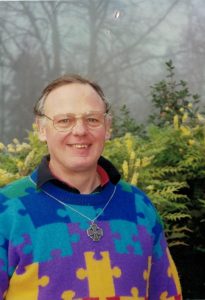
Duncan Rayner
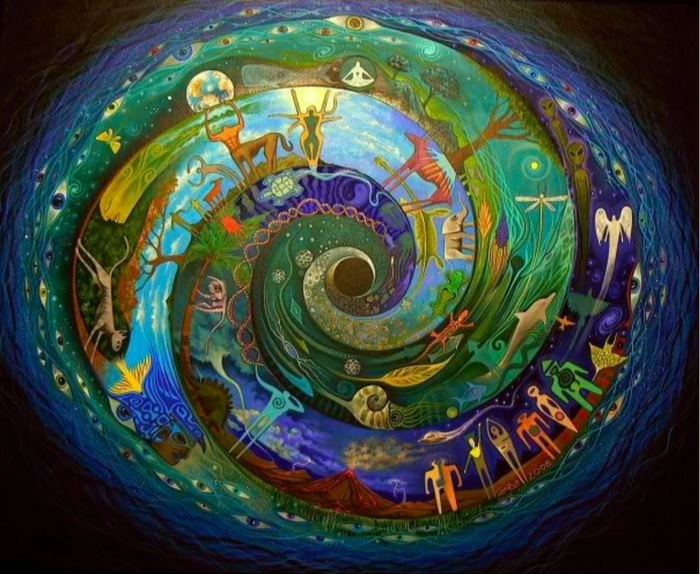
Reincarnation- it’s nothing new…
– a reflection by local writer, Trisha Longworth, who says: –
“Like a huge etheric Internet, we are all interconnected, to the past, to the present, to the future”
”I expect many of us have tales of déjà vu, or of knowledge of things we couldn’t possibly know.”
Trish’s reflections are set out in the main section –
TO READ REINCARNATION REFLECTIONS ..... - CLICK HERE +
Reincarnation …. it’s nothing new
I expect many of us have tales of déjà vu, or of knowledge of things we couldn’t possibly know. When my daughter was about two she pointed to an old sand time-turner, saying ‘tick tock’ – even though it looks nothing like our present day clocks at all. Another day she marched around the house with a toy drum, singing ‘Female echo in the song of youth’ BANG BANG!! Goodness knows where that came from! She always was an otherworldly child.
Children often appear to have some memory of their past lives, or the awareness of fairies, elves and nature spirits, but by the age of four or five this is melting away. Someone who has a strong recollection of a past life is a rare thing. I am not talking about the usual past life regression, where you imagine yourself walking down a long tunnel into the past, and then are asked what you feel under your feet. Sand ?- and in two shakes of an ibis’s tail you’re Cleopatra; leaves ?- and there you are in Sherwood Forest, dressed in green, downing a pint with Friar Tuck.
For those of us brought up in mainstream Judeo- Christian- Islamic traditions, which deny, often vehemently, the possibility of reincarnation, it can be easy to forget that almost half the world’s peoples do believe in it, Hindus and Buddhists, obviously, but also the many native tribal peoples who live close to nature. When I lived in Nigeria there was still a fear of ‘abiku’; the spirit of a dead child coming back. Dead children would be branded with a heated snail shell so that they would be recognised if they came again. Wole Soyinka’s poem about it haunts me still.
The Dalai Lama, Tenzin Gyatso, was able to recognise his own false teeth from his previous incarnation. (Kundun by Martin Scorsese 1997) He believes that a child’s consciousness cannot come from their parents in the same way that a body can, although it is often remarkable how people do resemble their supposed previous incarnation. A case in point is Barbro Karlen, a Swedish writer born in 1954, who believes herself to be the reincarnation of Anne Frank.
Cambridge trained biochemist, Rupert Sheldrake, proposes the concept of morphic resonance, which is a pooled collective memory, similar to Jung’s idea of the collective unconscious. Like a huge etheric internet, we are all connected, to the past, to the present and to the future. We all seem to have the potential to tune into this, either through spiritual development, such as yogis or the Buddha, who could recall memories of their past lives, but also through near death experiences which can jolt us into awareness.
In scientific studies of two thousand cases of reincarnation there are certain recurring features; most of the subjects are aged between two and four, who begin to describe events and people from their previous lives. Usually 90% of their verifiable statements turn out to agree with what actually happened. Frequently the previous personality met a violent and often early death. There are often physical marks on the body that correspond to past life injuries, such as a birth mark or darkened skin where the person was shot or stabbed. Reported cases are most common in parts of the world where reincarnation is widely accepted, as often western subjects have no framework of beliefs that might make the notion of reincarnation intelligible to them. Accepting strange experiences means finding a place to put them within our conceptual systems, and if we cannot do this comfortably it is easier to get rid of them by denial.
Here are some other interesting cases which are worth checking out:
Shanti Devi; born in 1926, who from the age of four said she was Lugdi Bai who had died in childbirth. Her husband had made promises on her deathbed, which he had not fulfilled. Ghandi himself investigated her case.
James Leininger: born 1998, the supposed incarnation of James Hutton, an American pilot shot down in 1945 at Iwo Jima.
Dorothy Eady: born 1904 in Blackheath. She ‘died’ after falling down the stairs aged three, and then remembered her life as a temple maiden called Bentreshyt, in ancient Egypt. After a forbidden affair with Pharoah King Sety 1, the father of Rameses the Great, she became pregnant and committed suicide rather than bring disrepute to the man she loved. Eady was visited from the age of 14 to her death by the bodily incarnation of her lover, the king, who had never stopped searching for her over the three thousand years. This is one of the most intriguing and perhaps convincing of modern case histories. (The Search for Omm Sety by Jonathan Cott).
In the ancient secret teachings of the Hebrew Kabbalah, which predate Christianity, there is a belief in reincarnation called gilgul neshamot or ha’atakah; that we move from one body to another as the soul rolls through time in a great cycle of souls. I think it is fair to say that Jesus believed he would return too. Let’s just hope there is a world for us to return into.
Additional material from the research of Professor Ian Stevenson of the University of Virginia.
Trisha Longworth
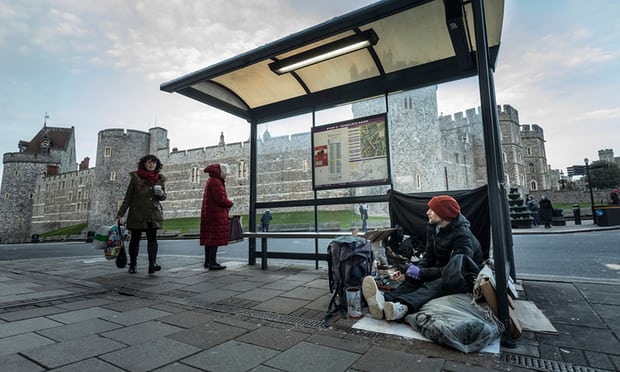
‘SHOULDER TO SHOULDER’
Is the theme of all of this edition of TIA.
Homeless under Castle walls: turning distressing incident into heartening action
The Leader of our local Council was preparing to request the local Police Authority to clear the streets of Vagrants before a forthcoming Royal Wedding.
Uproar! petitions, media coverage, Council debates, public meeting.
Our Story is the response from the Project Development Manager of the Town’s Windsor Homeless Project.
Photo acknowledgement – David Levene for the Guardian
TO READ THE PROJECT DEVELOPMENT MANAGER'S RESPONSE ..... - CLICK HERE +
Response from the Project Development Manager of the Town’s Windsor Homeless Project
In a time where street homelessness has increased by 130% since 2010, you would think that we would be a little bit closer to forging a path for everyone to be helped in whichever way they require it, but no. Instead, we are finding that in Windsor, one of the UK’s most affluent towns, the bus stops are being occupied by those with no home to retire to, whilst a locally elected Councillor refers to homelessness as a ‘Commercial life choice’. This raises a lot of questions, none more important than, how can we allow ourselves to have a lead Councillor that holds these vile and archaic views?
The Councillor refers to the Windsor issue as ‘Vagrancy’, a term that was used to create the Vagrancy Act Of 1824 that means it is illegal to sleep rough or beg. He also points all of the blame towards Thames Valley Police for not acting in a more severe way by arresting and prosecuting these vagrants. I on the other hand, thank TVP for showing their empathy and humanity to a temperamental situation.
As stated previously, it is the Vagrancy Act of 1824. It is soon to be 2018. If we are having to bring out a law that was created in the early 19th Century to back up one’s opinion, surely one is just clutching at straws? Surely we realise that sleeping rough has complexities and as such there is no sole reason as to why one ends up in that position?
Said Councillor has stated that he hopes we can sort out the problem in time for the Royal Wedding. Wouldn’t it be something if we could miraculously come up with a solution just in time for Harry & Megan’s Big day? That would be remarkable, but for all the wrong reasons.
Giving somebody a key to a front door does not solve all of their issues. It is just the start of a very long journey. The lack of self confidence, self esteem and self worth needed to sit in a doorway and be thrown 2p is unimaginable. We should be asking the people in this position why they are there? What can we do to help? How can we make you feel worthwhile so that you don’t have to quite literally place yourself lower than everybody else? Shouldn’t a Councillor be in touch with the people whom most need their sway, regardless of a Royal Wedding? Shouldn’t the vulnerable be the highest priority of every council, regardless of a Royal Wedding? If they were, the whole Borough would benefit in a plethora of ways but most importantly in having a happy and productive town where the divide of wealth does not affect ones mental and physical health in a purely negative way.
There is no quick fix to this problem but there are starting points such as NOT allowing our elected Councillors to speak with such distain, against a sect of people that cannot defend themselves and of whom he has absolutely zero knowledge. We can start by introducing a Windsor Shelter for local residents to be housed in instead of taking them away from the only thing they own, their feeling of community, whilst being given a pathway into housing, treatment services and education along the way.
Instead of saying ‘We need to get these people into work’ we should be saying ‘We need to help these people get back on their feet and allow them to be the people they want to be. We need to build their self esteem to a point where they choose to go back to work’ because if we don’t, where are we heading? What happens next?
We already have people reoffending in order to get a roof over their heads (in prison). We have people being released from prison with nowhere to go. We have people whose houses have been taken away from them for various reasons and are now classed as ‘intentionally homeless’ with no prospect of any housing at all.
A person should be judged by their present, not their past.
Even if somebody is housed from the street, they are, for all intents and purposes, dumped there and left to get on with it, some never having had to budget, pay bills, cook, clean etc. This often results in them feeling isolated, lonely and anxious which quite readily results in them returning to the streets to seek company and conversation.
We also have a Mental Health System that does not cater for individuals that are using substances.
CMHT (Community Mental Health Team) do not work with anybody’s mental health if they are under the influence of substances as they say they cannot work with somebody who is not in a fully conscious state of mind. So let’s say, said person goes to the local drug and alcohol treatment centre, works hard and is now free of substances. At this point, the person should be picked up by CMHT. CMHT however, have a 2 year waiting list (9 months for children and adolescents). Said person is now experiencing all of the same feelings, emotions, voices etc. but with nothing to suppress them, so they return to substance misuse.
The term ‘capacity’ is defined in a such a way that 80% of people who need help from CMHT are rejected. They are rejected because they are seen to have ‘capacity’, when in actuality, the people working with these individuals can categorically tell you that they not only DON’T have capacity, but are often in a far worse state than they themselves are letting on.
Our drug & alcohol team in the borough (Resilience) are an amazing bunch of people who care abundantly about their clients, but the procedure in which they are made to work is a generalised and somewhat disheartening one.
Methadone scripting is essentially replacing one drug (heroin) with another drug (methadone) and then reducing the prescribed dose of methadone to zero over a period of time. Whilst this may work for some, it does not work for the majority. Every single person on the planet is different, yet we expect everybody to react positively toward a single method of treatment?
These are just a few examples of the complexities of this situation and there are many more that I could add but the main points are these:
* Please do not offer up an opinion on what Homelessness is or is not, unless you know what you are talking about.
* Please do not seek to provide the public with information on the situation, unless you know what you are talking about.
* Refrain from tarring everybody with the same brush.
* Please do not blame other organisations for having a sense of what is morally right.
* If you don’t know the answer, find one that works or say nothing.
Vilifying the vulnerable is not the answer.
Harping back to 1824 is not the answer.
The Council are seeing pound signs, not people.
What do you see?


Murphy James,
Project Development Manager, Windsor Homeless Project
“As well as being a full-time musician, I am also an addict that is 4 years into recovery. Having overcome many obstacles in my life, I now have an overwhelming passion for helping other vulnerable people turn their lives around and prove to themselves that they are worth the fight. The Windsor Homeless Project was inspired out of compassion and community spirit and I could not be prouder than to be at the helm of such an incredible team of people.”
See also one of our first TIA Stories about WINDSOR HOMELESS PROJECT.
Speaking recently with a worker in the Project, I learnt how the NEGATIVE, SHOCKING intervention by a local elected representative into the issue of Homelessness, is painstakingly being transformed into POSITIVITY!
Hence:- Public debate about the nature of need. Asking advice from homeless individuals. Questions about effective, ongoing help, as opposed to endless “ band-aid“ – Anne Yarwood
About Windsor Homeless Project – HERE
In 2009, a homeless man was found on a bench in the town, having died in the night.
This prompted a collective of people to say “this can’t happen again” and so ‘The Windsor Homeless Project’ was born.
As well as offering food, washing facilities and laundry, we also help to guide our Guests through some of the more challenging aspects of their journey’s which can include, treatment services, mental health appointments, housing & employment struggles to name a few, regardless of colour, creed, religion, sexuality or any other social standing.
The Windsor Homeless Project stands for Community and all it has to offer.
LATEST UPDATE FROM HOLLY FISHWICK’S ‘CHANGE’ PETITION – WE GOT OUR MEETING ! HERE
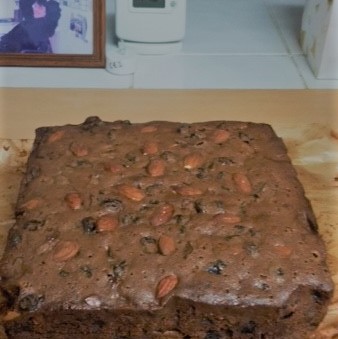
You Can Do It !
Whether it’s a cake bake (Christina & Harry 9 yrs.) or …
Raise money for Crisis ( Lesley & Martin) or …
Get together with friends to work out strategies for action.
Our Story is ASCENT’s report on ‘Speaking Truth to Power’ and reflects the experience and advice of community groups engaged with local initiatives.
TO CONTINUE READING ABOUT SPEAKING TRUTH TO POWER ..... - CLICK HERE +
SPEAK TRUTH TO POWER
Report on ASCENT workshop held on November 9th 2014
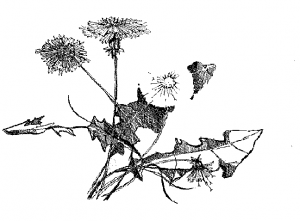 The Dandelion symbolises the ability to take root in difficult, challenging conditions, establishing deep, tenacious roots: the wind parachuting seeds widely.
The Dandelion symbolises the ability to take root in difficult, challenging conditions, establishing deep, tenacious roots: the wind parachuting seeds widely.
ASCENT: Ascot and the Sunnings Community Environment Network was founded in 2010 aligning itself with the International Transition movement. Together with groups world-wide, we aim to educate ourselves and others about Climate Change and galvanise action from individuals and governments., in response to the overwhelming crisis of our times.
On November 9th 2014, ASCENT held the final event of its grassroots community environment festival. The focus of the festival was ‘Resilience and Self-Empowerment in a time of Transition’. For the ‘Speak Truth to Power’ event we invited six groups associated with our local network of activists to report on their experience of ‘speaking truth to power’. 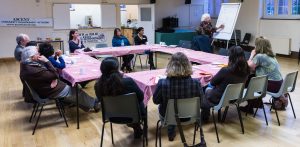
‘Speaking truth to power’ is a phrase coined by the Quakers in a 1955 pamphlet released in the USA. Arising out of the traumatic experience of the Second World War, it was a call to stand firm against fascism and other forms of totalitarianism. Essentially it’s about speaking out to those in authority in the face of injustice and abuse of power.
In the 60 years since the publication of the Quaker pamphlet in 1955, much has changed in the West – we no longer fear fascist governments taking over ( although we may be concerned about the rise of right wing groups in different countries), and yet, we have seen the emergence of other powers that are threatening our liberty and self-determination, in particular, ‘Austerity’, a programme invented by right wing parties, has been the Trojan horse through which public services and goods have been sold to private, elite groups while charities have been left to pick up the pieces of social and environmental externalities: a dramatic increase in food banks and environmental degradation.
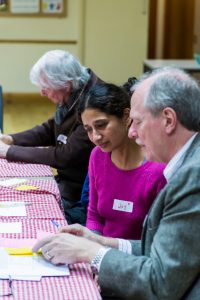 Our community in Ascot, Sunninghill, Sunningdale and its environs, has not remained immune. Indeed, we are in the front line. This is where the multibillionaires built their mansions, where they play golf, where they buy their Ferraris. But this is also where our local hospital’s services are degraded, where our natural environment is destroyed, where public spaces are enclosed.
Our community in Ascot, Sunninghill, Sunningdale and its environs, has not remained immune. Indeed, we are in the front line. This is where the multibillionaires built their mansions, where they play golf, where they buy their Ferraris. But this is also where our local hospital’s services are degraded, where our natural environment is destroyed, where public spaces are enclosed.
But community groups are fighting back. We ARE speaking truth to power. Here, we report on the outcome of our focus groups engaging with six local initiatives – their successes and struggles, and the challenges faced. We engaged with the ‘Save Heatherwood Hospital’ campaign which attracted overwhelming public support, with 23,000 petition signatories. We heard from the Blacknest Park campaign fighting to block the construction of a mansion on the site of an illegally destroyed protected woodland. We heard from the Heath-Watch campaigners and the unprecedented outcry when access to the Ascot Racecourse Heath was closed during race meetings. We listened to campaigners engaged in practical actions to prevent runway climate change, such as lobbying for Carbon Capture and Storage technologies and fossil fuel divestment. But we also got very excited by plans for generating our own renewable energy locally, through MaidEnergy, a new energy cooperative aiming to install solar panels on our local schools.
Strengths of those who contest power
Commonalities across the various groups was the steadfast commitment, energy, motivation and resilience of a small number of individuals – the ‘champions’. This embodied Margaret Mead’s famous quote:
‘Never doubt that a small group of thoughtful, committed citizens can change the world: indeed, it’s the only thing that ever has’.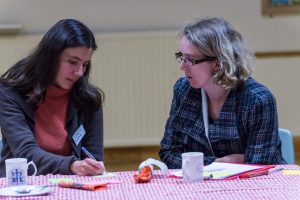
Our initiatives were hatched by a tiny group of concerned individuals, working in their spare time, adapting their impromptu plans as they went along, facing up to powerful structures with no or limited financial resources. The key attributes for success were: –
- good organisational skills
- technological knowledge and expertise, for example, in the use of social media
- local knowledge and history, within an established network of contacts
- well researched information
And yet, many in the focus groups were primarily driven by strong ethical principles: their wish to protect the environment; fight to maintain local health services for powerless groups such as the elderly and the disabled. Many knew that the law was on their side, and it was simply a case of letting those in power know that the law had been broken and we were demanding that the perpetrators would be brought to account.
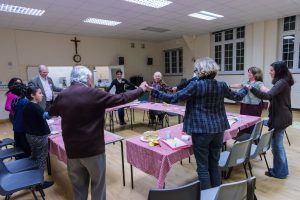 This highlighted the importance of running local campaigns for local people that resulted in positive outcomes (local health services, financial support for the most marginalised, a pristine and accessible environment). These were grassroots initiatives, bringing in a critical mass of activists from different localities and walks of life – just enough people to maintain a campaign, but not too many that meant that lots of time was lost in administration. Finance was raised though many small donations, but often, things were done through others giving generously with their time and skills.
This highlighted the importance of running local campaigns for local people that resulted in positive outcomes (local health services, financial support for the most marginalised, a pristine and accessible environment). These were grassroots initiatives, bringing in a critical mass of activists from different localities and walks of life – just enough people to maintain a campaign, but not too many that meant that lots of time was lost in administration. Finance was raised though many small donations, but often, things were done through others giving generously with their time and skills.
Vulnerability of those who hold power
The initiatives were also able to exploit the many vulnerabilities of the entrenched elite: politicians fearful of approaching General / Local Elections and the growing dissatisfaction with the national and local political system. Powerful groups were often presumptuous in their assumptions of impunity when undertaking misdemeanours, and sometimes failed to cover their traces. Social media and Google were thus expertly used to expose the abuses and the lies of those in position of power, exposing these individuals to legal as well as political challenge.
People were also dissatisfied / increasingly frustrated with the slow rate of change / deliberate, politically driven inertia, in the face of urgent crises: activists could tap into the general feeling of people wanting to see those in positions of authority doing something.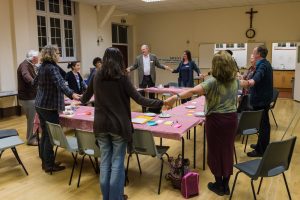
Powerful groups were often taken by surprise and underestimated the strength of a campaign, often developing rapidly and unpredictably. Lack of public consultation ( eg changes to health services) often resulted in major backlashes.
Powerful groups were also more exposed to significant economic losses, whereas local activists often had nothing to lose. The lack of local knowledge and expertise would often lead these powerful groups into painting themselves into corners.
These powerful groups were also unable to stay on the moral high ground – activists easily exposing their raw greed, often solely obsessed with personal financial gain.
There was also a lack of control over others when the powerful were unable to take over the local political process or to make inroads into the local community. Although political bodies often needed to consult publicly, this did not mean that the people would necessarily ‘bite’.
Roadmap for community champions
So, if something upsets you and you feel that something needs to be done, this is what we have learnt for effectively championing a local campaign: –
- Spend some time to familiarise yourself intimately with the background and the people involved. Google is a good start, but there’s nothing like speaking directly to those on the front line.
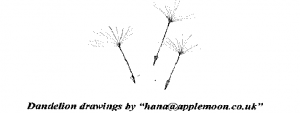
- Engage a small group of committed, like-minded individuals. Three or four people willing to give up two or three days a month is all you need to sustain a campaign.
- Promote your campaign through social media and local events through leaflets, posters, talks, petitions, blog postings, interviews with the local press etc.
- Build a network of supporters. These individuals may not be able to dedicate a lot of time, but they will be essential; during crucial moments such as public protests and fundraising.
- Balance a tough, informed critique with positive, imaginative solutions presented with humour. World-wide activism increasingly unites with an inspirational playfulness.
- Failure is not an option. Simply raising the profile of a campaign is a success. Knowing that you have rattled those in positions of authority and power is a success. Be a Dandelion ! Resist Round-Up !
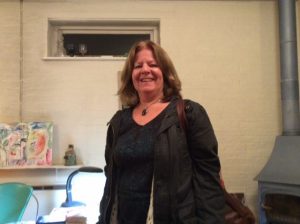
Margery Thorogood
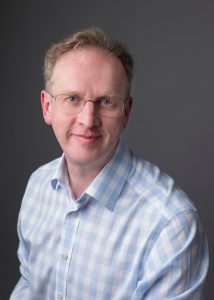
Spike Humphrey
Activists with ASCENT Environment Network & SHH Save Heatherwood Hospital
Acknowledgement – Dandelion drawings by hana@applemoon.co.uk; our late beloved Belly Dance Teacher
STTP – Example of current IMAGINATIVE ACTION – Petition started regarding Windsor homeless rough sleepers – SEE HERE
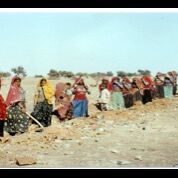
Wells for India Thirty Years On
Sir Mark Tully writes the Preface to the book ‘ Thirsting for Water’ –
One of the most interesting books on development I have read recently is called ‘Poor Economics’ written by two Development Economists from MIT, Abhijit. V. Bannerjee and Esther Duflo. The book is based on fifteen years of field work, many of them in India. What is particularly interesting about the book is the authors’ finding that even when solutions to shortages of food or water, causes of illnesses, and economic distress are available the poor often do not want to make use of them. The authors say ‘The ladders to get out of the poverty trap exist but they are not always in the right place, and people do not seem to know how to step onto them, or even want to do so’.
For thirty years now Wells for India has been providing ladders by demonstrating effective means of increasing water supply, storing water through small-scale water harvesting works, and distributing it. From the start emphasis has been laid on working with villagers, collaborating with them, learning from them too so that the ladders the villagers need are put in place and they are ladders they want to climb up.
TO CONTINUE READING SIR MARK TULLY'S PREFACE ..... - CLICK HERE +
On my visits to villages where Wells for India has been working I have seen that this is no easy task. Villages are not united communities. Developments which benefit the poorest can cause resentment among more prosperous and traditionally powerful castes. Sharing water supplies can mean breaking a centuries old taboo. Constructing small dams, creating water bodies, planting forests all involve changing land use so even if the land is common there will be objections from those who are occupying or using it.
Wells for India works over a large area with different terrains, the Aravali mountains and the Rajasthan desert, agricultural land and scrubland. To ensure that the developments it introduces are appropriate to the different regions it works with local NGO’s. I remember the pride and enthusiasm of Laxmi Singhe from the Gram Vikas Navyuvak Mandal for the forest which he persuaded villagers to grow, not without difficulty. He had to free community lands from encroachment before constructing low bunds, or dams, to collect water. Within seven years the community land had become a forest. By freeing the community lands and water bodies from encroachments Laxmi Singhe has made many other villages drought proof.
Because Wells for India collaborates with villagers, it is Gandhian. It believes in development by the villagers for the villagers, in other words bottom-up rather than top-down development as so much of India’s development has been. This has meant that Wells for India has learnt from the villagers as well as introducing them to new possibilities. It has revived the village wisdom of the past too – traditional water harvesting works which were forgotten or on the verge of disappearing.
Gandhi said ‘Independence must begin at the bottom’. He envisaged an India where every village would be a republic. That dream was not realised nor will it ever be realised but there is much wisdom in the concept. If it had not been rejected outright as romantic nonsense, those who ruled India after Independence would have realised that it can never be strong unless its villages are strong. The villagers realising that Gandhi believed they had the capacity to govern themselves might have made more effort to do so instead of falling back on the government to provide all their needs and make all their decisions. To counter this trend Wells for India has been successful in persuading villagers to collaborate with each other and work with Panchayats so that they can implement the development schemes which are in their best interests and set an example which spreads into other villages.
NGO’s like Wells for India magnify their impact when they act as catalysts creating examples which others follow. The greatest impact is created by acting as a catalyst which has an impact on the government because the government has by far and away the largest resources. Under the Prime Minister’s Swatch Bharat Mission or Clean India Campaign the government has now launched a massive drive to improve sanitation in villages by installing lavatories. Wells for India with its partner NGO’s in Udaipur District is providing a crucial input to this government programme by dissuading villagers from defecating in the open and persuading them to use lavatories. Their success is a reflection of Wells for India’s many years of collaborating with villagers and persuading them to adopt new customs and technologies.
Over the last thirty years Wells for India has brought water to more than 1,500 villages with a combined population of 1.2 million. It’s pioneered improved traditional small-scale methods of storing water which now harvest about 1.6 billion litres of water every year. Forgotten methods of water harvesting have been revived and improved, and invaluable support provided for Indian partners. It’s worked and is still working with government acting as a catalyst. It’s brought villagers together for their mutual benefit. Wells for India has shown the crucial role of water in empowering women. When water is made easily available they no longer have to spend much of their time walking long distances to collect it. The time they then have they often use for generating income, or education, or social activities. The social activities include women’s self-help groups which have spread widely. Clean water obviously also reduces health risks for all villagers. It improves the health of livestock too.
The achievements of Wells for India are an answer to those who ask why aid from governments or voluntary societies should be given to India which, with its rapid economic growth is slated to become one of the world’s largest economies. Wells for India has shown that Indian villagers still need to be provided with ladders to escape from the poverty trap and still need to be persuaded to step on them
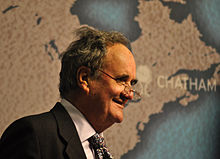
Sir Mark Tully, Patron
Wells for India
Sir Mark Tully KBE – Bureau Chief BBC , New Delhi 1964 for 30 years. Covered all major events during that time including India Pakistan conflicts, Bhopal tragedy, assassination Rajiv Gandhi.
Presents BBC Radio 4 ‘ Something Understood’ : ethical & religious discussion that examines some of the larger questions of life…through music, prose, poetry.
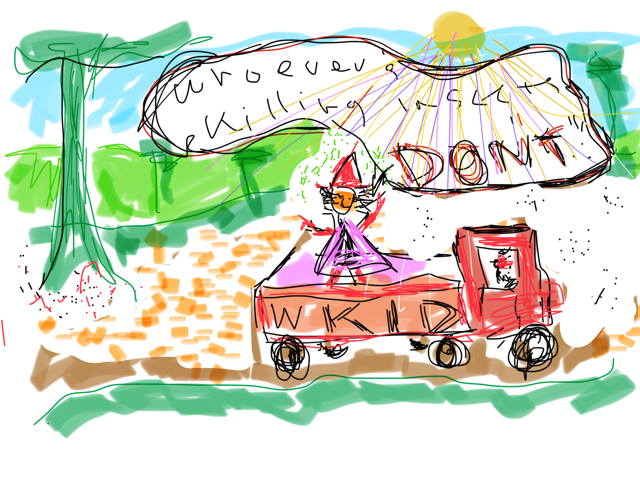
WHOEVER’S KILLING INSECTS ……. DON’T !!!
WKID: INSECT ARMAGGEDON.
This Story is a fantasy letter which was inspired by a conversation with Hannah, 13 years of age.
Her commitment to animals (particularly her Guineapig) extended to all living creatures; all of Nature.
I told her about the INSECT ARMAGEDDON NEWS.
To Hannah there is no question about Insect importance; no wobbling about on ACTION.
THE STRATEGY outlined in the bit “WKID IS BORN” would work. I know it …..
TO READ ABOUT HOW WIKD COULD MAKE ALL THE DIFFERENCE ..... - CLICK HERE +
WKID!
A letter from ‘Elsewhere’
Dear Readers of Great Grandma Anne’s web site,
I’m Hannah from Elsewhere. Not born to your Earth as yet…prob. ten years’ on in your time… awaiting my Mum. Mean, out – of – time – while, I chat with GGAnne. She appreciates my ‘ain’t got a view’ point of view !!! Needs it to keep fired up since Earth’s rather jimble – jumbled at YOUR mo’.
At your mo’, GGAnne’s experienced an unfamiliar emptiness in her guts .. Serious. DEADLY SERIOUS.
GGA has AWOKEN to the plight of INSECTS.
She awoken to Insects GONE… or almost !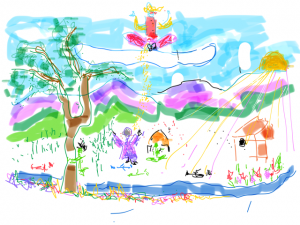
When GGA and GGDAVID first came to their 120 year old house 60 years ago, the attics were filled with Wasps nests. Nests were always in the Tool Shed.
August tea- time with friends outside meant lots of squeaks and swiping from those who feared Wasps.
And the two clumps of Golden Rod nearby the chairs, throbbed with myriad Insects. Honey, Bumble, Solitary Bees, Wasps, Hover flies, teeny flies, burnished green flies…
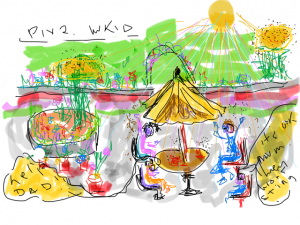
GGA & GGD said this August, supping tea whilst munching Digestive Biscuits..
” Haven’t seen many wasps this year… and where are the insects on the Golden Rod” …. but they were just chatting…not AWAKE.
THEN GGA read reports of a survey in Germany. 75% decrease in Insect population.
The hole in her GUT gulped in what the 75% means.
The wail reached me in Elsewhere
“WHOEVER’S KILLING INSECTS …… DON’T ! “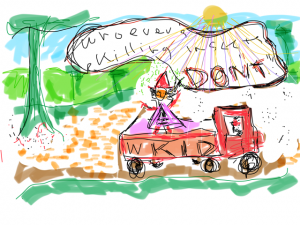
WKID is born !
The UK press reports that the decline in Insect population in last three decades means “the world is on course for an environmental ARMAGEDDON”. Insects are the pollinators and food source for other species, worldwide.
So sharing all of this stuff with GGA, I sense her twitching thoughts about ACTION.
GGA is great at inspiring and coordinating action. It’s just that she’s sworn not to do it anymore!!
The idea – abubble is :- set up local vol. bod – “WHOEVER’S KILLING SECTS- DON’T” …… WKID
Reading GGAnne’s secret thoughts…
Strategy:-
*discuss with small number known environmentalist in 10 year established local group ASCENT Ascot Environment Network , also local Horticultural Societies ,Local Authority Environment projects and Habitats , contact established national organisations (see below) 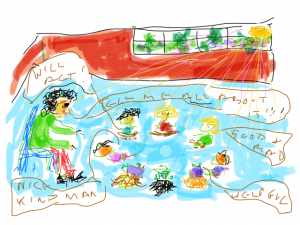
*educate ourselves on the whys & how’s of the crisis
* call public meeting addressed by Damsel Flies & equally beautiful Entomologist
* plan action in form of enrolling interest of Junior School teachers.
*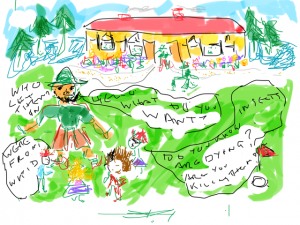 schedule visits to Turf Managers of local Golf Courses, Ascot Authority, Windsor Great Park , local Highway Authorities and two Borough Councils.
schedule visits to Turf Managers of local Golf Courses, Ascot Authority, Windsor Great Park , local Highway Authorities and two Borough Councils.
* compose advice for future policy in relation to herbicide, fungicide avoidance, Wild- flower protection & cultivation.
* encourage children to speak with family & neighbours
REPORT TO PUBLIC MEETING ON RESULTS OF ACTIVITY ONE YEAR ON.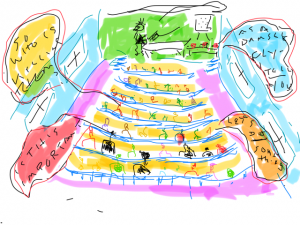
Chatting with Anne’s Imagination, I suggested enroll young children.. 5 years and younger.
Get idea into their HABITAT modules at school.( rather pleased with my intangible self thinking so HOOMAN LY!!
Our further way of being in all of this Stuff is speaking with, LISTENING TO the NON- human. Ear on the ground listening to Earth. Ear to tree trunks. Quietly watching and LISTENING TO BIRDS & ANIMALS ,INSECTS
Very small children are the guides here.
Here in Elsewhere , I know that human communication mostly ignores the rest of Creation ..other voices. Other wisdoms.
David Attenborough’s BLUE PLANET , SUNDAY TV 29/10 will show you the way to wrench yourselves at the last moment from many Armaggedons. This means awakening to the grimmest facts, whilst opening eyes, ears, senses, minds to the Awe and Wonderment that still Blesses you. TAKING ACTION .
More info – The Guardian – HERE
Comments welcomed hugely via email..
Hugs abounding and rolling around laughter from Hannah in ‘Elsewhere’ and love xxx
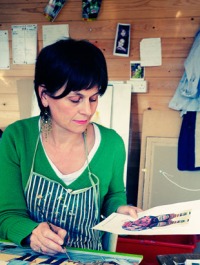
Antonia Rolls – Artist and Soul Midwife
I work as both an artist and a soul midwife, sometimes at the same time, sometimes separately. Part of being an artist is the joy of expression, and this takes the form of painting, writing, performing and public speaking. I express how I am affected by the work I do, what it teaches me, and the stories of the people that I meet.
As a painter my work is colourful and figurative. I work in oils and in acrylics and my work includes portraits of both individuals and families, quirky sideways looks at our Christian story (see The Male Madonna, the God’s Life series, Jesus on the Tube), whimsical paintings exploring the True Fairy at middle age, and some book illustration which I have loved doing, you can view my work in the gallery.
My writing includes published articles on end of life matters, and my blog.
A soul midwife is a compassionate friend, an end of life companion, for anyone preparing for and going through the dying process, and this includes families and friends. This work is varied and profound; it involves visits, support, deep listening, and publicly raising end of life awareness through the A Graceful Death exhibition and various workshops in the community, read more about soul midwifery.
The A Graceful Death exhibition is a wonderful combination of both soul midwifery and art. It is a collection of more than 50 paintings, including portraits of and interviews with people who are facing the end of their life. I worked with the dying for over six years to paint their portraits and ask them to speak about what was happening to them. I asked two questions, Who are you and What do you want to say? A Graceful Death tours the country promoting end of life awareness and hosting workshops, talks and discussions within the exhibition, you can view images from the exhibitions here.
TO READ ANTONIA'S STORY - CLICK HERE +
And I Can Still Pull The Birds…
This morning I sat with a man and asked him, Mike, who are you? Because Mike can’t speak, he has a computer key board. He tapped out the words, “Before my illness I had a dry sense of humour and told outrageous lies, but now I am a gibbering wreck.” And then he giggled so hard at my surprise, that he had to hold a handkerchief to his mouth. “And,” he tapped out on his keyboard, “I can still pull the birds”. He clicked immediately to a photograph of himself in his wheelchair at a bird sanctuary, lovingly watching birds sitting on his hands and arms.
Mike has Motor Neuron Disease, and I was meeting him for the first time today. He has agreed to work on a project where I will paint his portrait and ask him what it is like to be living with this progressive and terminal condition. It is part of the work I do for my exhibition called A Graceful Death, of paintings and interviews with people who have life limiting illnesses. I knew Mike was in a wheelchair, I knew he couldn’t talk, but what I was not expecting was his dry wit and his self deprecating sense of humour.
“I have a power point prepared,” he wrote on his computer, “it will help you to understand what I have and how I live my life. Would you like to see it?” I said that I would, and with the help of a nurse, the power point was loaded onto a computer and Mike guided me through it. The power point showed me a man who made a choice to live with his cup half full, not half empty. “I could have given up and waited to die,” he wrote, “but I decided that I needed to spend more time with my children and my wife.” And so, he and his wife met the disease head on. He now has help with his breathing, his feeding, his drinking, his movement (he cannot do any of these things all the time without help) and he has adapted his home, his garden and the family car so that he can carry on as normally as possible. “It is amazing how invisible a wheelchair makes you”, he wrote on his pad. “But my mind works just as well as it ever did. Some of my friends no longer come and see me. They cannot cope with me like this, but I am still here. And,” he said fluttering his eyelashes at me, “I am such a flirt!”
I sat with Mike for three hours and I learned about Motor Neuron Disease. I also learned that you cannot know another person by looking at them. You really cannot do that. If I had met Mike at a bus stop, I would never have given his quick mind and wonderful sense of humour a second thought. He would have been, if I had even seen him, a man in a wheelchair. Mike is tough, wise, and living. Mike knows I don’t know him, and that to have any idea of who he is, I have to sit and wait for him to start to tell me. And that takes time with Mike. In my busy world, I cannot hope to have any idea of his story if I am in a hurry. I wondered, is this the same for all of us? Do we give each other the time we need to say who we are? How much attention do we give each other? And when we talk, do we really hear what the other person is saying? I can walk, and I can talk. I can make excuses and I can make you think I am listening. I can do all manner of things to prevent myself from engaging. Sitting with Mike made me think. There was no running away. There was no making excuses, and there was no choice but to engage. And Mike couldn’t even talk. Or move. After three hours, I had only just begun to meet him. As I stood to leave I said, “You are a teacher. You are teaching me about your Motor Neuron, and you are telling me about yourself. But for the exhibition, though we will use the power point, I want to know what it is here.” And I put my hand on his heart.
Mike just giggled and spelt out on his keyboard, ” Before you go, put my brandy on the table”
Mike has since died of his illness. Rest in peace, Mike and thank you.
Antonia Rolls
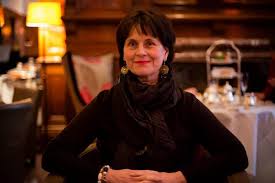

The Villagers decided to build the school. It was completed in the night.
The international politics of the Palestinian Israeli conflict has a lengthy history. ( see our current Wake-Up). It demands study and our attention.
Alongside, are the daily lives of both peoples. They demand our imagination’s attention: ” If that was me ? My children’s education ? ”
TO READ THE VILLAGERS' STORY - CLICK HERE +
The village of Jubbet Al-Dibh lies between Jerusalem and Bethlehem on the side of the Herodian hill. This Palestinian community urgently needed a new school. Friends tell us that they saw the proposed site last December, levelled and with a water supply in place in the customary blue plastic hosepipe, snaking across the hillside.
In June an Israeli NGO, CometMe erected a solar array of 93 panels. For the first time the villagers had electricity. Within weeks the Israel Army stole the panels and trashed the infrastructure.
Despite this serious blow, the villagers felt that they must go ahead with the school. Five class rooms were being built. The Israeli Army aimed to stop the work. They took tools and materials and the contractor’s vehicles.
But the villagers decided to finsh the school. It was finished in the night.
The troops destroyed the lot, next morning.
The village women determined to continue…during the night. The men stood up to the Army. The Class rooms were built. The Palestinian Authority were present at the hastily arranged inauguration and provided teachers.
In the meantime, it transpired that fortunately the Dutch government had donated the solar panels, and was not prepared to accept the situation. The Dutch government’s objections got a response. CometMe has now re-erected the 93 panels.
So the village of Jubbet Al-Dibh now has electricity and a school, and the next aim, to create a medical facility, is under way.
Acknowledgement for Story – from a supporter of ICHAD: Israeli Committee Against House Demolitions
The Story image fronted our successful Crowd-Funding for Jennifer Leach’s play TAKE TWO. See Previous Tales – HERE
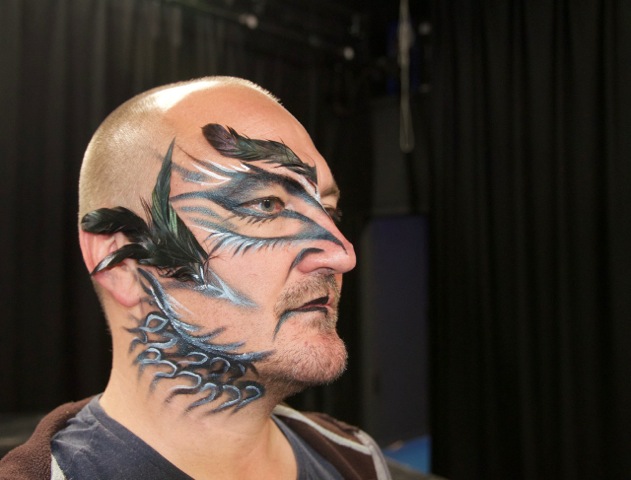
Sitting amidst AWE & WONDERMENT everywhere, are CREATIVE PEOPLE
Two such people living in this part of England are Mike & Jennifer.
A Development Engineer from the USA, for 18 years Mike has been at the heart of ASCENT: our local environment network. He taught many of us about energy technology. This week, he and his wife returned home. Glad for them. Sad indeed for us.
As with all such radical groups worldwide, we are all energised to act together…and then we drift apart.
BUT THE COMMITMENT TO CHANGE & AND THE EXPERIENCE OF ACTIVISM , REMAINS. IT COMPOSTS AWAY.
( see Naomi Klein , International Speaker at this year’s Labour Party conference)
Mike met today’s other hero Jennifer Leach, two years ago when he acted in TAKE TWO , Jennifer’s Palestinian Play (see previous Tales).
Today’s Story tells us more about that DAZZLE of a FESTIVAL OF THE DARK which she and colleagues in Reading are unveiling. (see previous Story for Launch)
Ref. Naomi Klein’s books include:- This Changes Everything, The Shock Doctrine, No Logo.
TO READ THE FESTIVAL OF THE DARK'S HIGHLIGHTS - CLICK HERE +
Festival of the Dark continues apace in Reading, with the last ten days a feast of community, theatre, music, and many thought-provoking discussions on various aspects of darkness. This mini-fest within a festival was entitled DazZle and was the start to the much-needed conversation Outrider Anthems has wished to have with ‘the Church’. The churches in Reading have been conspicuous in their desire not to have to engage with us on talking about The Dark. With the exception of these two wonderful, brave, bold vicars Vincent Gardener and Gary Collins (both artists – ah, that explains everything!) at St John & St Stephen’s Church, Newtown, Reading. With them, and within community, we embarked with extraordinary speed on an intensely immersive series of events, beginning with Outrider Anthems’ Song of Crow and ending with the abundance of riches presented to us on DazZle Thinking Day.
Highlights
Song of Crow, a wild theatrical tale at South Street Arts Centre Reading. It asks that vital question – With our wounded Earth and wounded community, how do we heal, and where do we go from here? Like many elements of shadow, this was not easy, yet there was great beauty in it and a message of hope. Feedback was very positive. ‘Still reeling from seeing ‘The Song of Crow’ last night: a creation myth brought to flesh, blood & bone…my humanness today is all alive with a sense of storyfulness and craving to keep connected to the non-human world.’
Kate Raworth’s talk on Doughnut Economics. A radical new approach to economics, moving away from the exponential curve of capitalism to the hearth-centred economy of circle and sharing. Kate’s energy, optimism and knowledge were heartening and inspiring. We can shift!
Music, song and storytelling down at the two local pubs. A wonderfully community-centred Open Mic night with outstanding musicians, and a Music & Storytelling night with the powerful medicine songs of Ruth Blake facebook.com/ruth.blake.75, and stories of metamorphoses and parallel universes from Jennifer Leach. Centring on mystery – the dark soft underbelly of the hidden world, and all things unseen and unknown.
The Tale of Seven Coats with Charlotte du Cann and Mark Watson led us through a remarkable story of autobiographical travel and transformation, to a point of deep commitment to ‘divesting’. As Inanna in the Underworld had to divest herself of all her garments, so we too were challenged to divest ourselves of all that is extraneous, and thereby to learn how to live in re-connection with the Earth.
DazZle Thinking – a series of excellent speakers challenging us to engage on issues of Other: Sexually Other (Alison Webster), Piratically Other (Kester Brewin), Educationally Other (Professor Helen Bilton), Energetically Other (Magda Koc) and Permaculturally Other (Dave Richards). A beautifully contemplative consideration of Absence and Presence by Gary, and the hilarious tale of Picasso’s mistresses and Guernica by Vincent. Humour, coffee and cake, good wine, and wonderful food – all cooked by Vincent – strung the various elements together with congenial continuity.
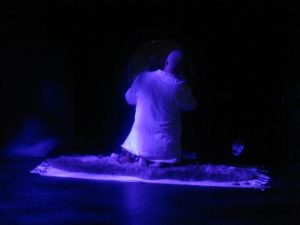
What came out of the entire series of events was an optimism, a gathering confidence that change may be possible, that a community can work together to provoke great change. That we no longer need to wait for permission to act; nor do we need to wait until our political, economic and environmental systems break down entirely. Personally, the concept of civil disobedience in the context of environmental action was the extreme possibility I took away from all that we were led to consider. And today someone I met during DazZle reminded me of Bernadette Devlin who began a movement during the Irish ‘Troubles’ to knock on every individual door in the neighbourhood asking ‘Where are the women?’ She activated and motivated them to act in a very powerful way. I am considering whether this might be a fruitful path to consider…
I am so proud of the courage of all those who spoke, who danced, who sang, who acted, who engaged, these past ten days. I am proud of the way we – disparate fellow beings from various disciplines and walks of life – worked together to empower ourselves and our community. I am particularly proud of Vincent and Gary for their courage. I am proud to sail, with them all, in the Dark Waters of Loving Piracy.
The Festival continues until 21 December 2017. Please connect with us via www.outrideranthems.com. Support of this venture is so important, that we may strengthen the growing resolve and confidence of those in Reading who wish to live differently.
Jennifer Leach
Director, Outrider Anthems
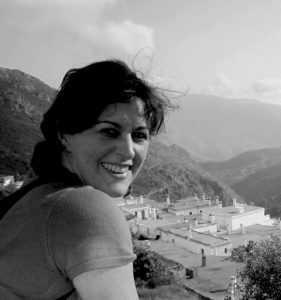
Photo acknowledgements –
- Story photo at the top – Creator Crow, Gary Peinke
- Photo in text – Gong Player from Song of Crow, Paul Dane
Also acknowledge – Mother Crow & Child Kathleen Thompson & Lauren Leach Scrivener
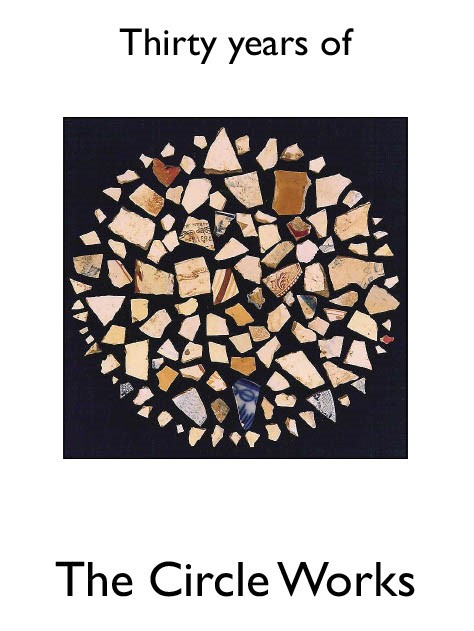
THIRTY YEARS OF THE CIRCLE WORKS
”For me Circle Work is very important because it’s a time to trust people to listen to you”.
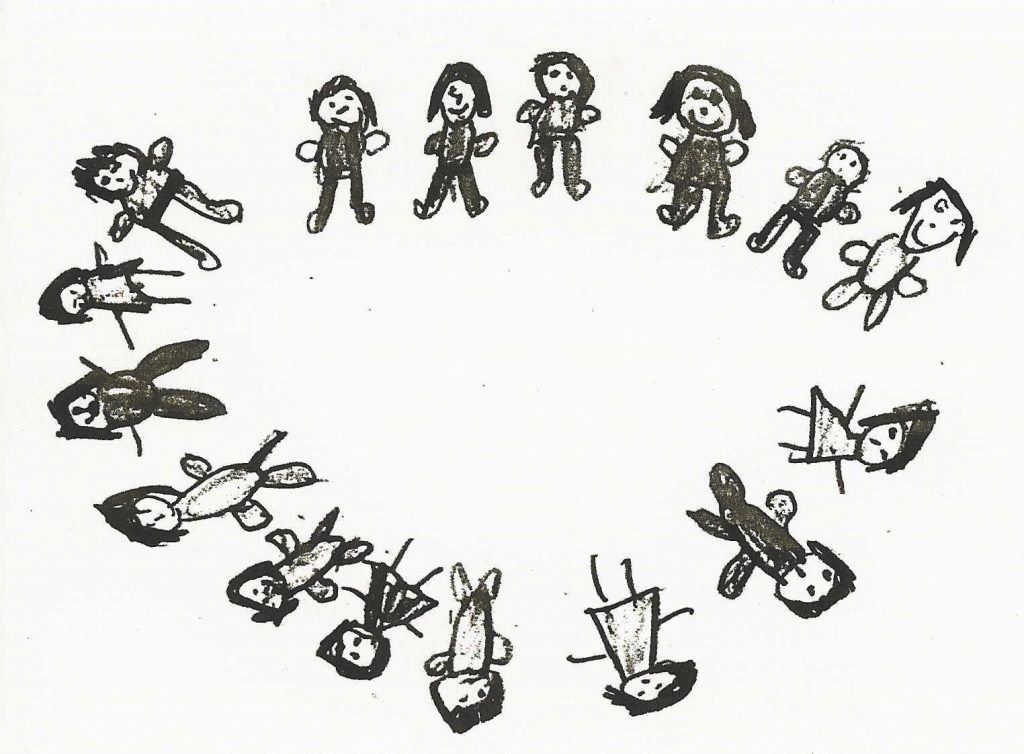
”The turning point was a shopping trip to Greenwich and the discovery of a precious object that came with its own story. The salt crystal from deep inside the Himalayan Mountains would belong to everyone, and be a symbol of our community. Through the use of objects I was able to share power with the children through creating a sense of ritual within our circle times. In this way special objects came to represent the collective power of the group, which could be borrowed, shared and then returned, not to me, but to the group as a whole – placed back in the middle of our circle.”
Laura Rogers, class teacher, writing about the Circle Work that gives our organisation its name.
The Story’s Image is of The Tondo
These pieces of broken pot were gathered by a child who in her short life has already faced unimaginable challenges. Learning that she was soon to be separated from her siblings, she dug the fragments out of the school garden, and after carefully washing each one, brought them to her counsellor.
Every piece was held, examined, talked about, wondered over, wrapped in tissue, and given to The Circle Works to look after.
Welcome to this celebration of The Circle Works’ thirtieth birthday.
Honorary Director: Geoffrey Court Hon B.Ed
TO READ THE CELEBRATION OF THE CIRCLE WORKS' 30TH BIRTHDAY - CLICK HERE +
Welcome
to this celebration of The Circle Works’ thirtieth birthday.
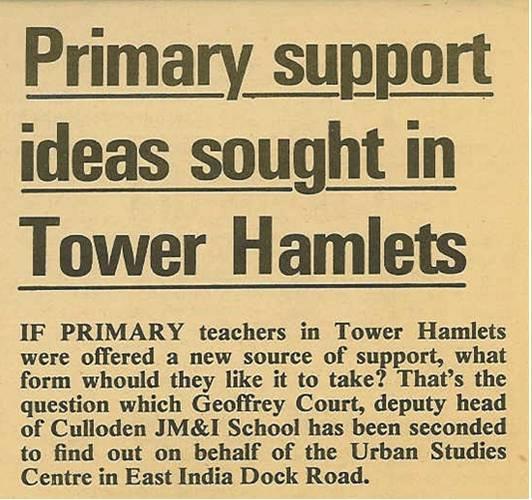
September 1985: no internet, no laptops, no social media. The first mobile phones, the size of house bricks, had just appeared. The miners’ strike was coming to its weary end, but urban riots, especially on Broadwater Farm, were in the news. The BBC had just drawn our attention, shockingly, to the Ethiopian famine, and the first Live Aid concert had taken place in July: but the Berlin Wall was still standing, and 9/11 and its aftermath were still sixteen years away.
The world has changed since 1985, and so has The Circle Works. What began as a support project for adults and children in primary schools has broadened into ‘a thinking space for people who work in the service of the community’. It has been in turn a project of the Urban Studies Centre, an urban outpost of Commonwork, and a free-standing charity. In 2007 its world was shattered for a while by the death of its co-founder Jeannette Weaver. Jeannette’s total and unconditional attentiveness, and her gift for creating places where that attentiveness could flourish, define The Circle Works to this day. Fortunately, before Jeannette became ill we had invited Heather Goodman to share our space, and Heather brought new ideas and new depths, expressed most clearly through the regular meditation days she has called ‘Coming to Stillness’ – The Circle Works, distilled.
On the surface our activities have taken many different forms, but looking back through the archive, we find that the themes running beneath our work have been constant and consistent: the water changes, but it’s still the same river.
In the TALES section of TIA we have illustrated these themes with some glimpses of the past thirty years.
Geoffrey Court, Honorary Director of The Circle Works

A STORY COMMON TO CAMPAIGNING GROUPS, WORLDWIDE – ‘HOW COME WE DIDN’T KNOW’ ? …..
Which is a common response to changes that surround us, often unseen until they bounce right in to our sight.
Changes to funding of everyday, crucial services… schools, health provision…
Changes to bus timetables. Changes to fuel costs. Shops close overnight…
The change is just THERE one day. Nothing to be done. Muttering into thin air.
And I write of conditions in rich parts of the globe where change can appear of only relative significance.
CHANGE CREEPS
So today’s STORY is of one group determined to keep awake about local changes. It fits into this website’s commitment to WATCHING how an idea sustains itself, through to fruition.
In Tales you can read about the hospital campaign group’s success over 23 years. Success to KEEP the local Hospital.
Now we aim to ALERT the local community to fundamental health provision changes.
These are eroding a guiding post WW2 principle of collective care for everyone.
In our local Jazz pub, we look forward to listening to other voices which see things differently.
BE AWARE & TAKE RESPONSIBILITY TO COUNTER THE UNACCEPTABLE
TO READ MORE ABOUT THE EXHIBITION FROM 18th - 22nd SEPTEMBER - CLICK HERE +
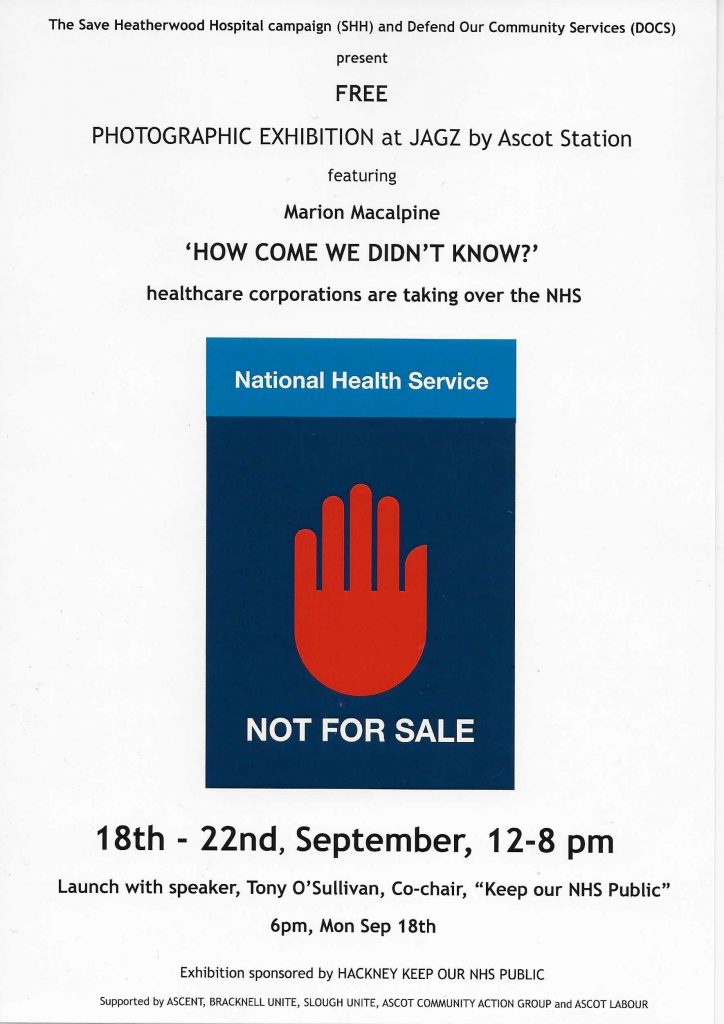
‘HOW COME WE DIDN’T KNOW’
The Save Heatherwood Hospital campaign (S.H.H.) and Defend Our Community Services (DOCS) have joined forces to run a Photography Exhibition at Jagz in Ascot in mid-September.
The exhibition shows the work of Marion Macalpine, a Hackney resident and member of Hackney Keep Our NHS Public. It highlights the many different ways that healthcare corporations are taking over the NHS – an increasingly relevant issue for all of us who care passionately about our NHS .
Come and see for yourself during the week of September 18th – 22nd.
We start with a LAUNCH (Guest speaker – Tony O’Sullivan, Co-Chair, ‘Keep Our NHS Public’) in the evening of Monday 18th . The photos are all on display throughout the week from Monday – Friday from 12 noon until 8pm.
Enjoy the delights of Jagz and the Exhibition all at the same time!
For any additional info. now, please contact Margery Thorogood, on behalf of S.H.H., by emailing margery.thorogood@hotmail.co.uk
(Exhibition sponsored by Hackney Keep Our NHS Public)
Acknowledgement for Poster – to Lesley Hunter, SHH member
Set up of the Exhibition – see video HERE
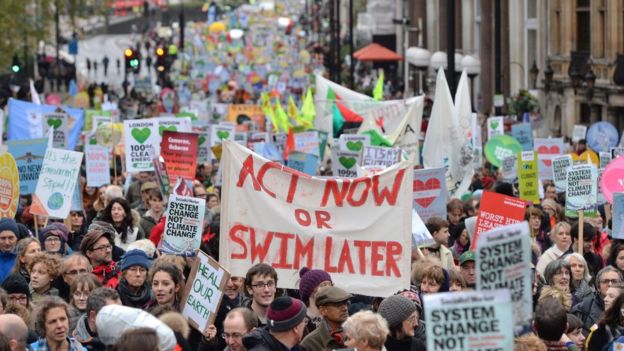
CLIMATE CHANGE – ASCENT’s Legacy : Ascot & the Sunnings Community Environment Network
Here’s another Story about a small group of people shouting as loud as they could, about a BIG ISSUE.
Describing it afresh for you, I’m describing a time but a few years back, which felt very different from today. Around 2014 there was a visible popular consensus on Climate Change action.
Then, London demos echoed the voices from vast marches worldwide, calling Governments, the Fossil Fuel Industry and all Consumers to take seriously the scientific facts about Climate Change. DANGER & OPPORTUNITY.
2017 UK General Election… scarcely a mention of Climate Change.
French President Macron places it amidst essential policy action.
President Trump is a denier. UK’s PM May is mute.
So…do minority voices, within their social & cultural settings, only summon boldness when they can snatch the moment of wider voiced concern ?
Are we all to SPEAK UP & SPEAK OUT today, about Social Housing injustice?
OR…have we the energy, tenacity, vision…to continue TO SPEAK TRUTH TO POWER, across the myriad manifestations of injustice, battered to a burning shell ?
TO READ MORE ABOUT ASCENT'S TIMELINE - CLICK HERE +
ASCENT’S TIMELINE
2003 Invasion of Iraq. Triggered the start of community organising by group of women & men around current political issues, in the Ascot area of Berkshire.
Small group, mostly from All Saints church Ascot Heath, called public meeting to examine background to the invasion. Saw crucial need for making space in schools for education about conflict & its resolution.
Set up ASPEN Ascot Peace Education Network, in response to deep distress about Iraq. Built The Light House: a perspex yurt designed & constructed by a group member. Painted children in local schools and youth clubs, who from the start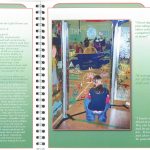 felt ownership of the beautiful “house”
felt ownership of the beautiful “house”
2003 Next five years we ran Programmes using The Light House, which explored causes of conflict and ways to resolve difficulties in the young peoples’ lives.
Team 8 facilitators. Ran self-training. Developed teaching programme. Strong emphasis on quiet reflection and self awareness .
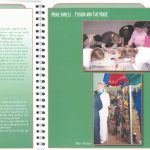
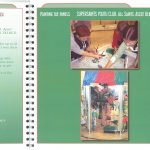
2005 Call by Bishop Stephen Cottrell, Bishop of Reading, to parishes in Bracknell Deanery to vigorously educate on Climate Change within own churches.
All Saints set up Eco Explorers and the Eco Prayer group. Monthly meetings. Public education events primarily for AS congregation. Ongoing local leadership: courses on Climate Change and Christian responsibility, dialogue with local MP, at forefront in Disinvestment in Fossil Fuel campaign in C of E locally & nationally.
At same time Sunningdale Parish Council starting education programme on Climate Change. Ongoing environmental champions encouraging tree planting, solid fuel boiler in Parish office.
Four men & women from these two initiatives combined to plan and launch Ascent.
2010 Autumn Public Launch of ASCENT: Ascot & the Sunnings Community Environment Network. 40 reps. local groups and individuals. 6 person Steering group volunteered. Sustained the initiative. No expansion because all busy people. Insufficient time & energy for extending the embryo project.
2012 First Ascent AGM – Charters School rallied the project. Established as Voluntary Organisation. Purpose to educate on Climate Change. Volunteer coordinating group 7 people. One retired educator undertook major part of project coordination.
2013- 2014 Network-building: Web-site, quarterly newsletters using mail-chimp circulation, regular Core group meetings, maintaining contacts with local and national campaigns on Climate Change, tree preservation & land use. Developing key messages, including Living Simply, Resilience at time of Transition, questioning Austerity , privatisation of NHS, challenging power of undemocratic decision-making in 4 specific Network projects.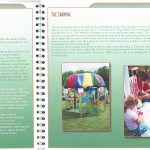
2013 Second AGM All Saints hall. Talk by Carolyn Hayman Director Peace Direct illustrating leadership from small number of committed men and women, in most hazardous settings internationally.Reporting participation in local public events illustrating the theme ”Living Simply so that others can Simply Live” e.g. Charters Community Fun day, first public workshop on Resilience.
2014 Third AGM: Network evolving its current primary focus for action in land usage, national energy policy, local flora & fauna protection. 12 Core Group. First Environment Festival in the Ascot was proposed. September through to November. 9 events covering wide range of environmental interests. Extensive publicity in local press and social media.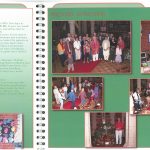
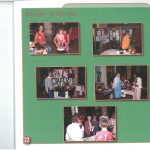
2015 Fourth AGM. Network well established. Increased collective work practice. Sense of membership of national & international Transition movement. Increasingly involved in radical political & economic analysis of causation and maintenance of environmental crisis.
ASCENT 2016
Start of transition time, common to all such small-scale innovatory projects.
Through 2016 two achievements impacted locally.
Two detailed Reports on the 2014 First Community Environment Festival in the Ascot area were widely circulated… and the 2016 play TAKE TWO, was an outstanding success. 170 guests watched it in Ascot and Reading. Its creation demonstrated ASCENT’s capacity for fund-raising and engaging local individuals and organisations in a key international crisis; a theme central to ASCENT’s commitment to SPEAK TRUTH TO POWER.
The Festival ‘Resilience & Empowerment in a time of Transition’ is reported on two websites –
https://sites.google.com/site/ascentascot and theimaginationacts.org.uk
TAKE TWO and subsequent community creativity are likewise on theimaginationacts.org.uk
2017 The organisation is being adequately held together by termly Core Group meetings and Newsletters. Where next is the question? In this time of political turmoil, what has an established radical Network got to offer?
Please have a look at TALES which provides details of the ASCENT Festival and its coverage on Climate Change
……. and GALLERY which shows pix of the Festival’s meditation sessions.
Ascent’s Timeline complied by Margery Thorogood ( Meetings Convenor) and Anne Yarwood (Ascent Co-founder)
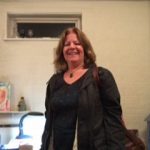
Margery Thorogood
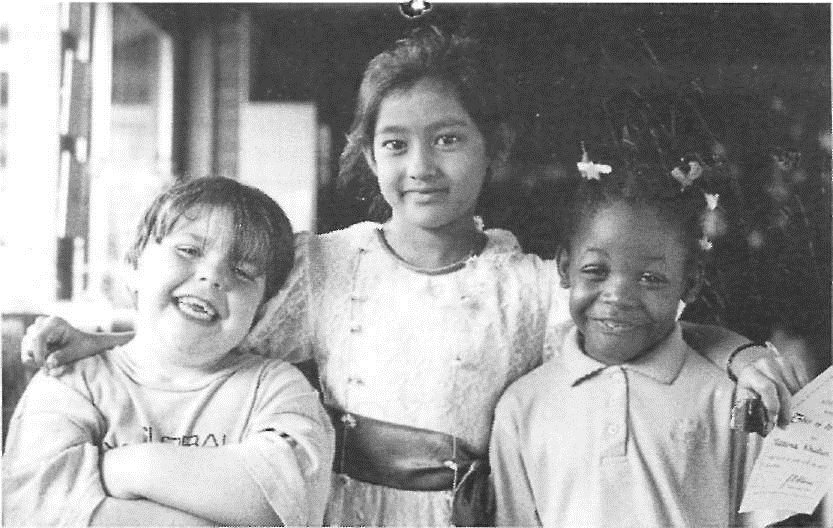
How to encourage Spirituality in schools : the Story of VALUES AND VISION
The story of Values and Visions began in 1989 when two things happened ……
TO READ MORE - CLICK HERE +
The story of Values and Visions began in 1989 when two things happened. Firstly, I watched as teachers in the UK were being put under great pressure to comply to externally imposed demands from an ideologically driven government. Teachers were being pulled to fill in tick boxes at the expense of their own professional integrity and the values they held dear. I noticed that some teachers got through these pressures very creatively and emerged stronger than ever and others became stressed, went off sick, took early retirement or simply left the profession. I wanted to understand what was happening and why some were crushed and others got through safely. The second thing that happened was that in an act of unprecedented unanimity, all the many denominations in the church agreed, at the World Council of Churches 1989 gathering, to the need for metanoia, a radical internal shift of consciousness, and they called for educators to respond to this by bringing peace education and spiritual awareness into schools.
I remember realising as I sat on a train coming down from Aberdeen August 1989 that I needed to get on and do this, respond to the challenge – find ways enable spiritual awareness work in education, find ways to prevent life in school from becoming soul-destroying for teachers or children. I knew it was possible to transform problems into positive unlimited change because I had seen teachers do it. I just needed to understand what the process was and how to make it available to others.
I had no idea how to do this but just knew I was going to do it. When I shared the idea with people all, bar three or four, told me it simply was not possible. Anne was one of the few who believed it was possible. I re-mortgaged my house and took a three-month sabbatical to just stop doing what I had been doing, to stop and empty out and see if I could understand what I now needed to do.
I was a single Mum with two children so it was not so easy since there was zero funding for the work and all attempts to try to get funding seemed to hit brick walls for the first 18 months. I had no theological background and no qualifications to do this work, but somehow it was clear that I needed to do it and would do it even if I did not know how. During my sabbatical I met Paul, a priest, who led me through a very demanding Ignation home-based retreat which immersed me in the practice of healthy introversion, focus and discernment.
Gradually the right people emerged. About a dozen of us came together, without my looking for them, to reflect on what was going on for teachers and why it was it some were able to create fabulous change when external constraints seemed to block them. What we discovered was to form the framework for transformation that for the last 25 years has been used in countless schools and organisations, including multinationals, small and medium sized businesses, public services such as hospitals, to help them become happy, thriving, effective places for us to learn, to work and to be fully alive.
We started with the assumption that there was a largely unseen spiritual foundation to this phenomenon of successful change and all our experience has shown this to be the case. We discovered that the starting point is always the here and now and your values and vision – what is actually happening right now and how do my values shape what I am to do with it . So, for example, one very experienced and gifted teacher was being hammered by an inspectorate for not having a strong enough maths programme. Instead of reacting and stressing about improving her maths, she stopped and thought and passed this current demand through her highest vision for the children she taught and her core values of equality, fairness, respect. The work that emerged was remarkable and delivered far more than just the maths.
We learnt over and over again that, whatever crisis we are facing, spiritual tools will provide some of the most vital resources we will have. We came up with eight spiritual tools, that have been used universally for millennia to transform situations. They are very simple, practical tools that V&V brings to life in many vibrant activities – stillness, listening, story, encounter, celebration, grieving, visioning and journalling.
Now over 25 years later spirituality is still a word that is controversial and that many shy away from but the need for spiritual tools is greater than ever if we are to find peace in a peaceless, consumerist world, if we are to be effective in a violent chaotic world, if we are to be happy in a world based on a materialism that fosters discontent and stress and that threatens our survival.
Because of this urgent need, two years ago Sally Burns and I set out to rework Values and Visions for today’s world. It is much more global, it is for a wider age range 8-15, so that we are able to reach those teenagers troubled or concerned by what they see in the world, and it addresses full on how do we find meaning and purpose in an uncertain and volatile world.
The new book uses the framework for transformation we all came up with long ago and which has been tried and tested in rough terrains, and we are now looking to get it published and out there in the world to help build the inner strength and hope, the deep understanding of ourselves and our values that will see us together get safely through these troubled times.
We are a community of educators and we would love you to join us in helping let this way of learning and living flow into schools and organisations. At the moment we are just completing the hard copy book but shortly hope to have a website and electronic copy of resources and a dynamic exchange of ideas, materials and training that will equip young people and their educators for the future they are facing.
If you would like to know more or be part of this in any way, we would love to hear from you.
Please contact me georgeanne@iname.com or ring 07765 045939
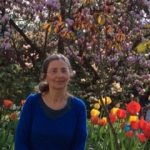
Georgeanne Lamont

International Art Class
The mornings in Malaysia were bliss. The light, the clear air and the cool.
Days which called you out. Calling half a dozen young European women to their passion for painting.
We had created The International Art Class. 100 children; toddlers to teenagers, meeting every Saturday in the capital Kuala Lumpur and the new suburb Petaling Jaya.
TO READ MORE - CLICK HERE +
Whilst our friend Barbara ran the KL groups with friends, Shirley, Anne and myself went weekly to a small local school in PJ.
Imagine the scene… a wooden building, open on all sides… easels and tables being dragged outside. Water pots, brushes, wads of newspapers. Then, Shirley appears with the day’s inspiration. Photos of Fern Trees shot from high in the canopy, fish fresh from the local market, to be painted on newspaper.
There were a few White English, American and Dutch children together with the majority painters from local Indian, Malay & Chinese families; unknowingly bringing colour and design influences from their traditions.I always thought that the glorious riot of their paint, reflected little childrens’ closeness to their Indian mother’s saris, Chinese cheong sams , Malay sarong kabayas.
Around 10 o’ clock it was hotting up. Everyone put the place in order. Paintings taken back to nearby home. An armful coming back with me to be laid out across the front, tiled verandah, to dry. I’d sit amongst them for ages, thrilled by the colour and forms and revisiting in the happiness of my mind, images of children having so much fun, mostly in silent absorption.
Every year we mounted an extensive exhibition in a prestigious, air-conditional office in central KL or in an old wooden Malay house down the Ampang Road. Pale blue paint,inside and out. My heart right now, trembles at the memory of such simple beauty. Rambling, rickety place on stilts. Underneath, the usual melee of chickens, sarong clad Malays preparing food, hand – bowl washing. Clumps of six foot Canna Lilies surrounding the house. Upstairs, little rooms without doors, running into one another. Shutters wide open. No glass.
It amazed me the hours spent by my artist friends, positioning the paintings.
Learnt SO MUCH about SEEING the relationship between the pictures and within the rooms’ space.
Three friends were gifted artists. That fact gifted more, and deep learning for me. I began to paint weekly in another of those Malay houses down Ampang Road with an older woman, Lilian, who had lived for many years in Sri Lanka. I was 28. Knew nothing of the “outside world”. David, me and 3 small children had been jettisoned with but 6 weeks’ notice… jettisoned into this life of VIBRANT COLOUR! ..of heat, humidity, minimally furnished bungalow, “barang” still at sea (such as it was…mostly potties and Lego).
Then, I know not how, met Shirley Mossman Nisbet.
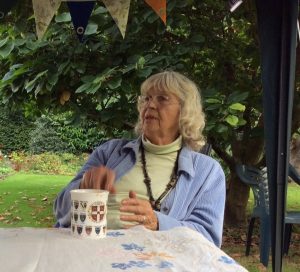
She paints vast abstracts. I’d go up to her bungalow near the University campus.Sit in the cool, watching Ian’s elaborate coffee ceremony. Supped from Chinese porcelain bowls. And delighting, as did Shirley, in the wealth of crafts so readily at hand… in tiny wooden shops and road- side stalls.Chinese cooking pots, worthy of Leach; bamboo furniture from Pudu Jail workshops, still in use in our home today; dresses ready in a couple of days made from the myriad rolls of fabrics tossed open across the counters in the dim caverns of the Batu Road emporiums.
All this 40 years ago.
As you will understand, I am reliving the days that I describe. Tears in my eyes.. less sorrow, more tender honouring of those young womens’ beauty. Beauty painted in the land of our youth.
Anne Yarwood
Acknowledgements :-
Painting of the Fish, fresh from the market – by Sally Yarwood, age 7
Photo of Shirley Mossman Nisbet on a visit to Ascot from her home in Boston, USA
For information about Shirley’s art – http://www.shirleymossmannisbet.com/artist.html
- Metallics http://www.shirleymossmannisbet.com/Metallics.html
- Oils and Acrylics http://www.shirleymossmannisbet.com/oils_acrylics.html
- Encaustics http://www.shirleymossmannisbet.com/encaustics.html
- Long Horizontals http://www.shirleymossmannisbet.com/long_horizontals.html
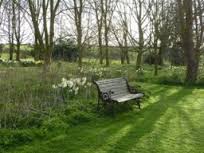
The greening grace of a Garden
The original vision for Quiet Gardens was developed by Philip Roderick 25 years ago in the early 1990’s.
It was a simple idea of hospitality and prayer with no need for expensive premises, it would use what was already there ….. a home and a garden.
TO READ ABOUT PHILIP'S REFLECTIONS ON THE VISION OF THE QUIET GARDEN MOVEMENT - CLICK HERE +
ON ENTERING the Garden of Gethsemane, Jesus told his disciples: “Watch and pray.”
A garden is an integral element in God’s landscape. Whether they are attached to a home, church, retreat centre, monastery, school, hospice, or hospital, gardens of all shapes and sizes continue to offer solace and a place to step aside and perhaps encounter God.
In a garden, the local is discovered to be a microcosm of the global. An appreciation of a spider’s web still bedewed in the early-morning sun can sensitise us to the majestic reality of the cosmos, and to the network of all species. A prayer for a friend who is sick or facing other difficult circumstances opens our hearts to our wider human family. In a garden, we can travel from the “small” to the “all” easily.
The spiritual importance of gardens struck me 25 years ago when, after a sabbatical spent visiting Christian retreat houses and monasteries in India and North America, I was sitting with my wife in our back garden in High Wycombe on a sunny May day.
As a nature-lover, I had become aware that, often during his ministry, Jesus withdrew — alone, or with two or three of his closest disciples — from the towns and villages into the countryside, to rest in the presence of God either before or after significant moments of healing, preaching, teaching, or travelling.
My sabbatical quest led to an awareness that Jesus wanted his disciples to follow his lead, as they, too, were usually caught up in the demands of the day. “Come away to a quiet place by yourselves and rest for a while,” he says in Mark 6.32. That was the invitation and the imperative that impressed themselves upon me in my garden that day in 1992.

The first Quiet Garden at Stokes Poges, Buckinghamshire
As the vision clarified, I called a small discernment group together to weigh up the practical and theological implications of seeking to make available simple and yet transforming open-air spaces where current generations of disciples could replicate Christ’s repeated drawing apart to solitary places away from centres of population.
I made it known that there was a need for the first home and garden to be offered for a few hours weekly, monthly, or even just quarterly. Miraculously, by the September of that year, we opened the first Quiet Garden in Stoke Poges, a stone’s throw from where Thomas Gray composed his “Elegy Written in a Country Churchyard”. This was thanks to the generous offer of Noreen and Geoffrey Cooper to make available their garden and part of their home twice a week. Today, there are more than 300 Quiet Gardens around the world.
In your own garden, it is all too easy to become consumed by the weeds and the quiet chaos. One of the gifts from visiting a Quiet Garden is that you do not have to be chore-conscious while you are there. If a group meets in a host’s house for a welcome, a prayer, a coffee, or some input before spending time in the garden, neither do they have to worry about the dust or the washing up.
This was appreciated by others of the early generation of Quiet Garden hosts: a couple from Vancouver Island, who had heard about the movement at a conference for spiritual accompaniers. On their first day as hosts, Mike found himself sitting on a bench that he had built himself, looking at a tree that he had planted 15 years earlier. A tear trickled down his face as he realised that this was the first time that he had stopped and looked at the tree. He had been so busy in the design and shaping of their home and garden that he had not given himself any time to watch and wonder.

A visitor in Mill Dene Garden, Gloucestershire
AT EASTERTIDE — at least in the western hemisphere — a garden in springtime can prompt the watcher into a “wonderstruck beholding”: a contemplative discipleship.
The larger story of the seasons reminds us of equally significant times for weeding and seeding, testing and pruning, dying and rising, fruiting and harvesting. A place of retreat may offer, even in a day, a Holy Week in miniature. Opportunity is always present for every emotion to be expressed or interiorised, from the gift of tears to the song of joy — all in the mystery of God’s journey in Christ.
God’s invitation to each of us to participate in the divine (2 Peter 1.4) is linked in a simple and yet profound way to Jesus’s invitation to “abide in my love” (John 15.9). If truth is Trinitarian, in the greening grace of a Quiet Garden, the life, light, and love of the Father, Son, and Holy Spirit may become a felt sense, an intimate reality. Our experience of God can be deepened if, consciously, we dedicate time to spend with each person of the Trinity.
This is where a reflective time amid natural beauty can offer such potential. In what way is God the Father the source of all life? In what way is Jesus, the Son, the light of the world? In what way is the Holy Spirit the comforter? We have time and space to ponder and to experience an encounter.
The sights and sounds of a garden — birdsong, the scent of blossom, the breath or the boldness of a breeze in the trees — can be a solace and delight. In the context of Easter and the paschal mystery, in moments of reflection we find ourselves incorporated into Jesus’s temptation and his trial, his betrayal and brutalising at the hands of those who conspired against him. The raw agony of innocent dying by grace releases us into a new consciousness: “Christ is risen! He is risen indeed!”
We apprehend that Good Friday, and all that precedes it; that Holy Saturday; and the life that breaks open the tomb in the garden. Nothing like this ever happened before. All is utterly new. The springtime of faith, of new and abundant life in Christ, can become radically and graciously present.
QUIET Gardens can be tiny or large, well-maintained or with wild edges. In many ways, Quiet Gardens attached to private homes — open, perhaps, for just a few hours a week, or even a month — are a halfway house between a retreat centre and a church, and thus sometimes more accessible, though less permanent.

Ascot Quiet Garden in Berkshire, UK
Churches, retreat centres, or organisational settings that host Quiet Gardens in their grounds offer these more permanently; but all Quiet Garden hosts open their doors to people, offering something of God’s love and shalom.
But the essence of this ministry, in the garden of a home or an organisation, is to honour Christ’s pattern of withdrawal and engagement, stillness and storytelling, hospitality and healing. This is a time to nurture the human need to “be still and know”, to experience something of the interconnectedness of heaven and earth, of mutuality and restfulness.
The Quiet Garden Movement celebrates the freedom to wrestle with, and to rest in wisdom from, the great spiritual tradition that is “in Christ”. We welcome those who are longing to find meaning and direction in their lives.
In our resource-gathering for the journey of knowing and unknowing, we celebrate insights from Roman Catholics, Anglicans, and Protestants, from Eastern and Western Christians, from poetry, and from the prophetic tradition. Scripture, sacraments, and saints provide illuminating signposts along the way. Accompanied by stillness, the cycle of the Christian year turns.
Participants may become more fully awake to the sacrament of the present moment. They may also become attuned to the fruitfulness, and yet also the fragility, of the earth and her species. Whether at the edges of faith, or at its centre, we hope that all who visit will discover a new understanding of the intricacies of environment, quietude, and community.

Revd Philip Roderick, Founder of the Quiet Garden Movement
To mark its anniversary, the Quiet Garden Movement has produced its new resource on stillness, Quiet25, with notes for leaders (www.quietgarden.org/2017/quiet25-course/).
On 20 May, there is an open invitation to join “God is in the Garden” at St John’s, Waterloo, London, from 10.30 a.m. until 5 p.m., with the Revd Lucy Winkett, the Revd Andrew Walker, and the Quiet Garden founder the Revd Philip Roderick, among others, to give thanks for the past, walk in the garden, and look to the future (www.quietgarden.org/event/annual-gathering-2017/).
To explore the possibility of becoming a Quiet Garden host, visit www.quietgarden.org/join/hosting.
This article was first published in The Church Times on 13 Apr 2017

THE JUST WALK : ”a big crazy stunt : crazier than the Wall”
One man who decided several years back, to ACT, is Justin Butcher.
We met him in Ascot as the Director of Jennifer Leach’s play about the Palestinian conflict: TAKE TWO ( see Tales archive). Justin and friends were “brewing” the idea of a pilgrimage to Palestine; a walk across Europe to mark a number of significant anniversaries in the history of the Palestine.
2017 marks three major anniversaries in the Palestinian struggle:
10 years of the blockade of Gaza ; 50 years of Occupation and 100 years since the Balfour Declaration.
LATEST UPDATE FROM JUSTIN BUTCHER – ‘‘WE’RE HERE” !! THEY’VE COMPLETED THEIR PILGRIMAGE AND ARRIVED IN PALESTINE – READ HERE
ALSO – Video of their meeting at the Jordan border – HERE
TO READ JUSTIN'S STORY - CLICK HERE +
Justin’s story is about a bold and exciting human rights initiative, two years in planning, about to launch: the Just Walk to Jerusalem. A pilgrimage and a book, which he is planning to walk and write.
2017 marks three major anniversaries in the Palestinian struggle:
10 years of the blockade of Gaza –
Israel’s land, sea and air blockade of Gaza began in June 2007. The inhabitants have suffered untold humanitarian consequences, including three major wars, and today 80% are dependent on food aid, while 30% of children in Gaza suffer acute anaemia;
50 years of Occupation –
Fifty years after the Six Day War of June 1967, Israel’s military occupation of the Palestinian territories of the West Bank, Jerusalem, the Gaza Strip and Golan Heights continues. With more than 700,000 illegal settlers colonising the West Bank and East Jerusalem, hope for a political settlement recedes, while the frustration and despair of young Palestinians deepens;
100 years since the Balfour Declaration –
On 2nd November 1917, as British & Ottoman forces battled for Palestine, foreign secretary Arthur Balfour penned the now-infamous declaration which has led to a century of conflict: “His Majesty’s Government views with favour the establishment in Palestine of a national home for the Jewish people, and will use our best endeavours to facilitate the achievement of this object, it being clearly understood that nothing shall be done which may prejudice the civil and religious rights of existing non-Jewish communities in Palestine, or the rights and political status enjoyed by Jews in any other country.” (By “existing non-Jewish communities”, he meant the Palestinians, 90% of the population.) Hungarian-Jewish author Arthur Koestler later described the Balfour Declaration as “one of the most improbable political documents of all time, in which one nation solemnly promised to a second nation the country of a third.”
Just Walk to Jerusalem www.amostrust.org/just-walk
Europeans have been travelling to the Holy Land for nearly 2,000 years, as pilgrims, penitents, scholars, crusaders, conquerors and colonialists. Reflecting on this history, and Britain’s complicity in the ongoing conflict, I conceived the idea of a pilgrimage, a “Just Walk” to Jerusalem. Over the course of two years’ planning, in partnership with Amos Trust, the Just Walk to Jerusalem has become a reality: 100 years on, 100 days of walking, 2000 miles to Jerusalem. Following the ancient pilgrimage routes across Europe, tracing in reverse the migrant route from the Syrian civil war, walking the refugee road, enacting symbolically the Palestinians’ right of return, which is denied, gathering and travelling with fellow activists and faith communities along the way.
We will do this –
– in penance for Britain’s colonial history, giving away a land we had no right to give away;
– in solidarity with the Palestinian people, in their ongoing suffering;
– in hope & determination, inviting people across Europe to join the call for full equal rights for everyone who calls the Holy Land home, as there will never be peace in the Middle East until there is a just peace in Israel/Palestine.
Just Walk to Jerusalem will:
– depart London 10th June, the 50th anniversary of the Occupation, walking across Europe for 100 days, to arrive in Jerusalem 2nd November, the Balfour centenary;
– include more than 100 walkers, taking part in different sections of the Walk, and a core group of ten participants who have committed themselves to walk the entire route, travelling in 100-mile sections through Europe to Istanbul, where we fly to Amman, Jordan, and walk into the West Bank across the Allenby Bridge;
– walk through the West Bank, where we will receive a new “Declaration” from Palestinian schoolchildren, which we will deliver back to the Foreign Office in London;
– end with a symbolic entry into Jerusalem through the Jaffa Gate, where we will be joined by Palestinian and Israeli peace activists for an act of commemoration, to acknowledge our collective responsibility for past injustices, the plight of the Palestinians today and the on-going conflict in the Middle East.
We are planning a series of meetings, encounters and acts of remembrance with faith communities and campaigning groups along the route. We’re also planning a number of visits to refugee camps across Europe, where we will share meals, conduct workshops with refugee-residents and devise performances, exhibitions and installations enabling participants to express and honour their stories of home.
Several publishers have expressed serious interest, with Hodders the frontrunner; my book proposal is attached, fyi. Out of the eventual book, I plan also to create a shorter storytelling performance piece, part theatre/part documentary, to tour in 2018.
For all details of the route, see www.amostrust.org/just-walk.
My costs to walk and write over 5 months are £30k. Contributions from Amos Trust, my church, sponsorship and publisher’s advance will total around £20k. I’m now seeking pledges of support to raise the final £10k. I’d be extremely grateful if you would consider supporting me in the Just Walk to Jerusalem.
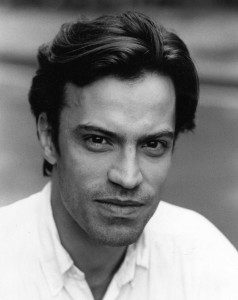
Justin Butcher
Justin Butcher is a writer, director, producer, actor and musician. His best known works include the award-winning solo play Scaramouche Jones, starring Pete Postlethwaite and directed by Rupert Goold, the hit anti-war satire The Madness Of George Dubya and its sequels, A Weapons Inspector Calls and Guantanamo Baywatch and the controversially-acclaimed Go To Gaza, Drink The Sea, as well as five plays for BBC Radio 4. He holds BA and MA Honours degrees in Classics Greats from Oxford University and is an Honours Graduate of Drama Studio London. He lives in London and has worked all over Europe, in Russia, the Middle East, Africa, Australasia, Canada, the USA and Mexico. His work is produced and studied all over the English-speaking world, and has been translated into Albanian, Croatian, Czech, Danish, Spanish and Turkish. He reads and translates Ancient Greek and Latin. He is artistic director of Passion Pit Theatre, which has produced 13 acclaimed professional theatre productions in the UK, USA, Mexico, Malta and Australia since 1994. He is also founder and director of the acclaimed London choir Vox Holloway and works extensively as a conductor, MD, organist, pianist and singer. Alongside his work in the arts, he works regularly as creative consultant, speaker, trainer, comedy writer and event producer in the corporate, government and charitable sectors.
Contact: Justin Butcher
Literary agent: Charles Walker , United Agents +44 (0)20 3214 0874
Acting agent: Jo Hole Associates +44 (0)20 8758 8420 or +44 (0)7889 534 833
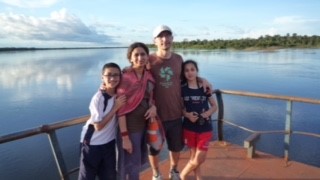
A Fascinating Relationship with Pain
Instead of writing about an aspect of his Environmental work,as anticipated, Andrea shares unusually personal writing about his life- challenge.
He links the Story of one ‘activist’ and academic with the PAIN OF THE EARTH.
TO READ ANDREA'S STORY - CLICK HERE +
I have a fascinating relationship with pain. I was officially diagnosed in July 2005 with Myofascial Pain Syndrome. It’s a condition that gives you chronic muscle pain and constant fatigue, and whose cause(s) are very difficult to identify.
This is how it all started …In 2001 I started developing pains in my arms while undertaking computer work – being an academic, I wouldn’t be able to work if I couldn’t use a computer. By 2002 my GP gave me a diagnosis for Repetitive Strain Injury (RSI). By 2005, muscle pain progressively worsened and I was only able to undertake computer work through the use of voice recognition software. During this period, muscular spasms spread from my arms and upper torso to my neck. Extensive physiotherapy and posture work were ineffective. By January 2005, the RSI symptoms in both arms became increasingly severe with stabbing pains, burning sensation and prolonged stiffness in arms, back and neck. It became almost impossible to use a computer and even the use of voice recognition was constrained by pain in the neck and back. By June 2005, although all repetitive activities using arms had been stopped, muscular pain spread to the jaw. This resulted in severe difficulty in eating and sleeping due to chronic muscle spasms in the jaw. Severe exhaustion developed with associated psychological effects (depressions, insomnia, anxiety, etc). The world was basically caving in on me. By then, I was unable to drive, unable to use my arms (I was dropping everything! ) and unable to carry out prolonged activity such as reading a book, or even washing. Medical tests during this period (blood and urine tests, magnetic resonance, x-rays and countless consultations with rheumatologists, neurologists, etc) identified no major cause of the pain. In July 2005, at a loss with identifying the cause of my condition, it was given a ‘Myofascial Pain Syndrome’ diagnosis. Resigned to the fact that all the tests have not identified a clear cause, and therefore, that I may never be able to get rid of this thing, I adopted a different strategy to simply waiting for a doctor to tell me what to do. My instinct told me that I needed to fight fire with fire: muscle pain with muscle pain! So I initiated a rigorous regime of physical activity: swimming twice a week, yoga twice a week and Pilates once a week.
By December 2005, the pain in my torso subsided so that sleep became possible, but the severe pain in arms intensified so that even handwriting was no longer an option. Pain in my neck also became worse. By June 2007, the situation became stabilised in that pain in my torso became manageable through extensive aerobic physical activity. By August 2009, the level of physical activity (yoga, swimming) and strict management of any activities that trigger the onset of muscle pain (keyboard/mouse manipulations; driving; being stationary for too long, stress, lack of sleep, etc) meant that the condition was under control. However, sensitivity seemed to have increased, so that lower thresholds triggered the onset of pain, and physical exercises and associated work pacing, required to keep the pain at bay, had to be gradually increased. The exercise regime increased to 1 hour of yoga every morning, stretching breaks every hour, and 45 minutes of swimming in the late afternoon. Driving long distances was limited to about once a month. The pain that these exceptional events resulted in, would take about one week to subside. By August 2010, on-going chronic pain resulted in a referral by my GP to undertake an intensive pain management course at my local NHS hospital. The course emphasises the need for activity pacing and assertive workload management.
All the time I upped my exercise regime. By the summer of 2015 I was able to run long distances (more than 20 miles a week). However, both my Achilles tendons gave way in the summer of 2016, so I was clearly pushing myself too much. I now can’t run, but I hope to get back to it soon. Cycling is okay, and my ultimate dream is to complete a triathlon!
My present condition is as follows: I apply a strict adherence to appropriate work/life balance and exercise/stretching routines. This means that the condition is under control (I now do yoga and swimming every day, and try to stay outdoors being ‘physical’ every weekend). Work productivity as a result of advances in assistive technologies (voice recognition software, head motion activated mouse pointer) has significantly improved with levels comparable to able-bodied colleagues when symptoms are fully under control. Occasionally, there are flareups, but I manage these through the temporary use of painkillers. However, new ‘permanent’ symptoms are emerging with inflammation to joints in my neck, wrists, knees, ankles, back an almost constant sinusitis. This has occasionally resulted in difficulties in undertaking my exercise/stretching routine, with consequent relapses into chronic pain.
So, my battle with pain continues: it’s an ‘arms race’ between the pain developing new ways of affecting me, and my ability to figure out ways of keeping it under control. I have no ability to predict how I will be affected in the next few weeks, months or years: will I be able to continue interacting positively with my children, my wife and my friends ? Will I be able to continue with my work ? Will I be able to continue with swimming ? Will I be able to look after my allotments ? I’m pretty much on a knife edge: any worsening of the condition which affect my exercise regime could result in a downward spiral where I would be completely consumed by chronic pain just as I was back in 2005.
This gives me a constant urge to try to achieve as much as I can, while I can, just in case I am devoured by the pain. I do sometimes wonder whether I would have the same drive to achieve things and to have such a crazy exercise regime if it wasn’t for this imminent catastrophe ?
To me, this also reflects the wider predicament humanity faces as a whole with regards to climate change. Our planet is in pain, and if we resign ourselves to this condition, then the planet and ourselves with it will be consumed by it. Instead, it’s time that we got into a new ‘exercise regime’ – throwing all of our energies into keeping our ‘planetary pain’ at bay. So the pain that I share with planet Earth is also an incentive for me to do all that I can to avert the climate change catastrophe.
Andrea Beradi, Jay Mistry, Manu, Anju
Andrea Berardi has more than 20 years experience in teaching, researching and building capacity for enabling sustainable communities. After achieving a number of qualifications in ecology (BSc), nature conservation (MSc) and ecology/environmental science (PhD), he has taught at the London School of Economics, University College London, Royal Holloway, and The Open University. His work has engaged communities from the Borneo and Amazonian rainforests; the floodplains of the Mekong and the Guianas; the savannas of East Africa and Latin America; and the coastal regions of southern Italy and Wales.
His main interests lie in facilitating grass roots approaches to ecological sustainability and social justice using an action learning process. The aim is to enable communities to collaboratively learn from their own practical experiences using local resources (rather than being told what to do from “experts” or relying on external support).
Apart from working full-time as a lecturer for the Open University, he also tries to walk his talk through cultivating several allotments, keeping hens, managing a woodland, having a low consumption lifestyle and participating in a range of activities locally and in support of the UK Green Party, CND, Amnesty International, and Greenpeace.
Andrea was a co-investigator on Project COBRA (September 2011-February 2015), a €1.9 million research project funded by the European Union. COBRA researched ways to integrate community solutions within policies addressing escalating social, economic and environmental crises, through accessible information and communication technologies. He co-authored the Project COBRA Practitioner Handbook in order to allow other facilitators to build capacity within communities so that communities members themselves can identify and share their own solutions to current and emerging challenges. For a pdf copy of the handbook, and other Project COBRA outputs, go tohttp://projectcobra.org/
https://uk.linkedin.com/in/andreaberardiou
27/5/17
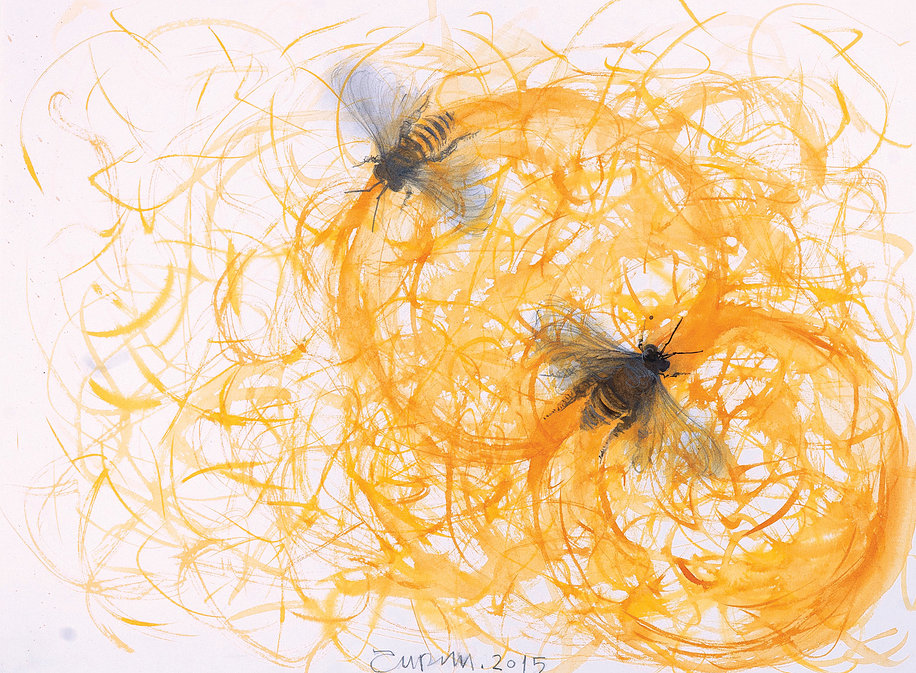
The Natural Bee Keeping Trust and The World’s Mantra
“It is fabled that we slowly lose the gift of speech with animals, that birds no longer visit our windowsills to converse. As our eyes grow accustomed to sight they armour themselves against wonder.” — Leonard Cohen
This week's Story is from The Natural Beekeeping Trust - it is powerful and beautiful PLEASE READ MORE - CLICK HERE +
I want to tell you what I know about honeybees and their inclinations and purpose as much as I have gleaned from keeping their company, for many years, and intensely so, this summer just gone. And should I succeed in giving you a sense of who they are, and also of what they are not, please do seek them out in the woods or wherever you find them, and tell it to them because it will affirm them greatly to be told that you know who they are.
The bees and us, we both have a sting, but theirs dispenses healing and even helps to loosen us a little from the fetters of earthbound thinking, whereas that of humankind spells death and disaster in the heart of the biosphere, the bees and all our pollinators. Fear not the bees’ venom and don’t ever approach them in heavy armour, they dispense their precious venom judiciously and only for healing. We can be at peace with one another, the bees and us, so bear with me if I refrain from discussing beekeeping, since for that I have neither qualification nor certainty. I was a beekeeper once, and the bees have forgiven it. Should a time come when they call you I fancy that you will heed them and invite them into your life. They might arrive as a swarm since they are very capable of divining your soul’s inclinations, and then they might change your life and you will never look back and dwell in the joy of it. I’d say it is probable, and wish it greatly for you.
Bee people, a tribe somewhat distinct from beekeepers, have something in common, perhaps more than one thing, but this for certain: they all grapple with the bees’ language. They speak foreign, the bees. Foreign to all our mother tongues, except Lithuanian, maybe, where you still meet folks who tell you that the bees need to live high up in trees, the higher the better, so as to be close to their gods. It’s fair to say that to most of us the bees speak as if in code. So to converse with them well we need to employ faculties beyond our day awake consciousness. They will develop over time, and I’ve met people to whom they come naturally, but some effort is usually involved. Time spent on patient observation is very helpful, as is meditation. It takes good will and times of silence and quiet surrender to understand anything about the bees, anything at all, so time you must take. As for the bees’ language, that foreign language, Carol Ann Duffy captures it utterly:
...the hive is love, what we serve, preserve, avowed in Latin murmurs, as we come and go, skydive, freighted with light …. The world’s mantra us ….
That world’s mantra resounded for many thousands of years, inspiring bee love and worship, and the bees were sacred to people. One might say they were a totem, not just in the symbolic sense, but in the actual sense of a creature through which access is gained to a spiritual connection with all of nature and the cosmos and through which the human tribe can determine appropriate actions vis a vis those worlds.
This was a long time ago, and gradually, over time, human beings began to banish the spirits from nature and take dominion over the animals and every living creature and finally, even the sacred bees fell victim to the laws of the production line. Now, as we all know, they’re dying in their millions for our follies. In times of stillness we can still hear it, the world’s mantra, in places where the bees are, and pray and hope that the bees will not give up on us, that they will prove tougher, more resilient than the Great Barrier Reef, whose demise leaves us stunned with sorrow. The bees are dying and with them all the other insects, and the birds, too. Our time is one of a great diminishing of life, unprecedented in the history of mankind – the tapestry of the living word, once so rich and varied and wildly populated, is threadbare and worn. Nature’s orchestras are losing their players, one by one, and so fast that we hardly have time to mourn each loss. The honeybees, we cannot afford to ever lose, because we need them badly, for beauty and for solace in times of grief and lament. They are our teachers. They understand that well, and solace they can give in abundance, but there’s nothing they can do for us if we do not love them enough.
Love for the bees, what does it mean? So much is written and said about bees, but as is the way with celebrity fame, it achieves little, besides a media barrage on the creature concerned, and the forming of trivial concepts in people’s heads. Click-activism weakens the will and imparts a false sense of involvement. I’d like to suggest that we desist from saying or thinking, ever again, that the bees are responsible for providing much of the food we eat. Somewhat absurdly, we’ve been seduced by insidious media coverage of the so-called plight of the bees to worry more about the food we eat than about the food they eat. — So here we are, consuming their honey and feeling a little concerned about their fate, since they are “responsible for three out of four mouthfuls” of the food we eat all the while the food the bees eat is poisoned by the way we grow ours. And all the while their food, their honey is taken from them for us to eat! This, too, will pass, as we painfully learn the bees’ lesson about the truth and beauty of interdependence, and begin looking to them for the healing of our souls and for learning what love is. For now, what I wish for the honeybee is a beekeeping ceasefire, a time of amnesty to allow at least some of them to return to the trees where they belong, and live on honey and in peace. This would allow us to imagine them truly as creatures in need of protection, of nesting sites, of natural living and put an end to our unfortunate association of honeybees as boxes of insects dependent on man’s essentially self-serving ministrations.
Concerning the keeping of honeybees in a semi-domestic setting, there is much to recommend it. The life of a honeybee family is a pageant of miracles. Under their tutelage we can learn many things and the more we learn the less we know, and that is an excellent schooling. School ourselves we must to get close to bees, to relate to them for mutual benefit, and those of you who still talk to elves and tree spirits and other such folk may well have an advantage as regards humility and sense-free perception, both desirable attributes for relating to bees, or any living creature, for that matter. For a training in beholding the ineffable in nature, honeybees offer rich opportunity – each facet of their hive life is a challenge to embrace the supersensible in nature. Contemplate, for example, the production of snow white wax in the dark of the hive! The young bees who work this wonder need to be supplied with copious amounts of nectar to perform the task of building the body for the whole, since that is what comb is, the body of the Bee. As soon as the comb builders reach the age of forager bees, they transform the glands needed for wax production into other specialist equipment suited to the tasks ahead, and so forth. Each single bee undergoes stages of metamorphosis in precise accordance with the needs of the wholeness, the hive. The hive is a continuum of metamorphosis and an ever-transforming wholeness that is potentially infinite.
Honeybees are the only creatures apart from us human beings who communicate by dancing. They dance in spring, summer and autumn, in the dark of the hive, on selected parts of the comb, except on special festive occasions. When a bee discovers a wealth of blossoms that promise a good return she will return to her hive and dance so joyously that others will avidly join the dance and the fragrance of the flower will spread throughout the hive and align every worker bee to the great purpose of venturing forth to that benign spot where the flowers are in the process of yielding their nectar. Nectar secretion is time sensitive, it depends on the warmth of the sun and the direction of the wind and the earth’s moisture. Each type of blossom has its own preference as to what conditions are right regarding these dynamic interactions. Bees know this and they never waste time. So directions will be given in the dark of the hive – the bees use the sun as their compass, and even when it’s not shining, they read the patterns behind the clouds and share all the vital information. They also allow for the time it takes for their nest mates to reach that promising spot, and the altered position of the sun. Whatever they do, each minute action in the hive, the bees’ interests are perfectly aligned. Without fail. When a particularly interesting site opens up, as it were, such as a linden tree or a field of lavender, their dances get very wild and even young bees might be pressed into action. So they dance and dance to the tunes that reflect the world each day.
Their queen is their mother, and fathers they have many, but not in the hive, the male quality is embedded in the queen bee when she soars from the hive towards the sun for her wedding flight, pursued by hundreds of drones of which the fittest get to meet her and donate their lives to her and the hive’s perpetuity. The males perish dramatically in the act of mating, and the virgin bee returns a queen with the amazing potential to bring forth baby bees for as long as five years all being well. Every spring, when the bees have responded to the early pollen of crocus, hazel and willow and raised many young, a great wonder comes to pass. It usually happens between Easter and St. John’s that the spirit of the hive – a wisdom-filled emissary of a planetary intelligence called Venus – senses the call to perpetuate the species. Then new males will be raised in the hive to stock the surrounding country with thousands of drones, destined to engage in pursuits of virgin queens when the time comes for the nuptial flight of the bee princesses. And the very fittest of them will be allowed to mate with her, thus ending their physical lives but living on within the queen bee and her progeny for years to come. Such are the faerie tales we may dwell on as we sit in peace with the bees and marvel.

The World’s Mantra
“It is fabled that we slowly lose the gift of speech with animals, that birds no longer visit our windowsills to converse. As our eyes grow accustomed to sight they armour themselves against wonder.” —Leonard Cohen
There are places in the world where the bees are still thriving, where they forage on vast meadows and orchards and much of the land is untouched and the wind carries the music of a full orchestra of insects and birds. We must fear for them, and create places, too, in the middle of man made deserts where the honeybees are afforded sanctuary. Where they are free to swarm to propagate the species. Where bees and people live together in a prayerful mood and celebrate the seasons and the stories of creation. Whoever plants trees now, or tends a garden in partnership with nature, and mindful of the needs of the insects, is deserving of our deepest gratitude. Such folks are bee people. The bees need them a great deal more than beekeepers who expect the bees to pay for themselves. Every tree raised, every piece of earth cultivated with flowering plants is a vital step towards stemming the tide of proliferating wastelands devoid of bees and birdsong and trees. — As bee people we welcome the bees’ swarming as the high point of the year, indeed we celebrate it with them. ‘Enchanted to meet you’ we say. We aim to live close to the bees and tend to their offspring like farmers to newborn lambs.. Each beeing, each hive is a little universe, completely evolved, perfect like a star. Which brings to mind another thing that bee people have in common, we look up to the bees because we invariably find them superior to ourselves. Frequently we also arrange our hives high up because the bees are naturally high living creatures, tree dwellers. All this may be unknown to you when you first join the bee people, because the beekeepers who write books about beekeeping are mostly silent about such things. So, until one is written by one of the bee people, if I’m asked to recommend which book to read about keeping bees I recommend none. Do read about the bees, read Tolstoy, Virgil, John Burnside or Mark Winston and Tom Seeley and others besotted with bees, but steer well clear of beekeeping books, especially modern ones, because beekeeping will do the bees no good and you neither. We can be guardians to the bees as well as their students, we can study plant lore, sow seeds for meadows of sunflowers, lavender and thyme, plant orchards and forests, and make gardens of paradise in which to revere the bees and their kind.
It’s only in more recent times, ever since an American pastor named Lorenzo Langstroth invented the framed hive around 1850 that we have come to associate honeybees with boxes placed on the ground, attended by people in armour and producing honey for the markets of the world. It was a groundbreaking invention, and such was the ground that was broken that Lorenzo fell into a state of melancholy and despair from which he never recovered. Nor did the bees, since it marked the beginning of their downfall. In the wake of this invention bee colonies were increasingly put in boxes like filing cabinets, to be taken apart at will, their wholeness shattered, sliced and used as spare parts to swap between hives. The invention paved the way for the cold hearted bee engineer who became the model for beekeeping in the whole of the Western world. Edward O. Wilson, the renowned Harvard biologist has referred to bees and other pollinators as the ‘heart of the biosphere’. This heart is ailing. The glorious bees have been degraded to slaves of the insect world. Managed bees, woe betide. It is bitter to gaze at the travailing earth through the multi-faceted eyes of the bees:
Where the bee sucks/neonicotinoid insecticides in a cowslip bell lie/ in fields purple with lavender/yellow with rape/and on the sunflower’s upturned face/on land monotonous with cereals and grain…
from where the bee goes to suck she flies no more because her nerves have succumbed to neurotoxins’ diabolical purpose. So thank God for the saints and poets and mad people who converse with fairies and leprechauns, thank the Poet Laureate for her bee poems, they are beautiful and true.
Where the bees live, such places are holy places, whole and sound. Look out for them and tell the bees that we love them. Ask them what came first, the banishing of the spirits from the living world or the crushing of our own, they surely will have an answer. And if you offer them a hive, in summer time, be sure that it is a beautiful hive, in a beautiful place. Let the hive proclaim the beneficence of the being that inhabits it. Let them face the rising sun. Go there often. Go in peace. If that’s not possible because your soul is in turmoil, tell it to them, but don’t breathe on them as you will make them afraid. Bees will make all things better. Each day we can be born again among the bees; without the bees we are nothing.
http://www.naturalbeekeepingtrust.org/
http://www.natural beekeeping trust.org/mantra
Poetry: Hive & The Bees, Carol Ann Duffy, Picador

A Crone’s View of May Days
Greeting spring …
Worker solidarity …
International distress signals …
This Story is a ramble through various conversations that have taken place amongst Anne’s friends, during the past days. It offers a glimpse into the myriad influences pouring into our minds…..
TO READ MORE - CLICK HERE +
I used to join in Networking. Now Old’n Creaky, I just muse on Connections. Sit, listen, talk.
The following Story outlines such Cronery days….
Three groups I’ve sat amidst last week are doing a doggy- paddle through the dislocated ‘values and action’ debates that currently abound in this part of the UK. Aged mid 50s to mid 80s, we ‘re professional educators. Each with 30 or so years of radical activism in education, social services, industry, academia, counselling, local campaigning, engineering.
The feeling in the talk was of no longer seeing an obvious space for this work. Been clear about purpose, IN OUR MINDS for YEARS. The aura of the Time is obviously post BREXIT, TRUMP, and now the forthcoming UK General Election. Fear of a right-wing government installed for YEARS is raised. ….and the cartoon poster BREXIT held aloft as an alternative to that old favourite ‘The Day of Judgement in Nigh’.
And, in such convivial circles many of us are gardeners, actively committed to nature.
GLORYING in this year’s Spring. What blossoms ! How fresh the green leaves. How exuberent the birdsong.
So threading the Maypole ribbons through the dog – paddling , we’ve been checking tales of tadpole scarcity, increasing raptor sightings. One friend leads maypole dancing recalling the folk traditions of Germany, England & Sweden. Others celebrate Pentecost. Hoards of cars at local Carboot Sale.
And ‘what about the workers ?’ In our major town Reading, echoing London demos.. there’s a Climate Change alert and two Anti Austerity marches. Worldwide, the streets shout anxiety about jobs: 99% v 1%. Elections take place in France & Greece. The Occupy Movement promises huge demonstrations on the Golden Gate Bridge, San Francisco.
And MAY DAY alarms fill the global press .. spotlight shifted from Syria to the Korean Peninsula. An RT TV analysis (which I missed because of a dog-paddle meet !) reported the implications of China’s decision to ally with Russia to combat the US dollar market with a new Gold backed trading standard.
No wonder we need a May Day public holiday to barbecue our frazzled minds or lie in daisy strewn grass, entwined with my beloved XXX
WORKERS OF THE WORLD UNITED AT LAST, ENMESHED IN MAY-DAY STREAMERS
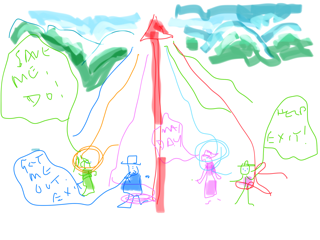
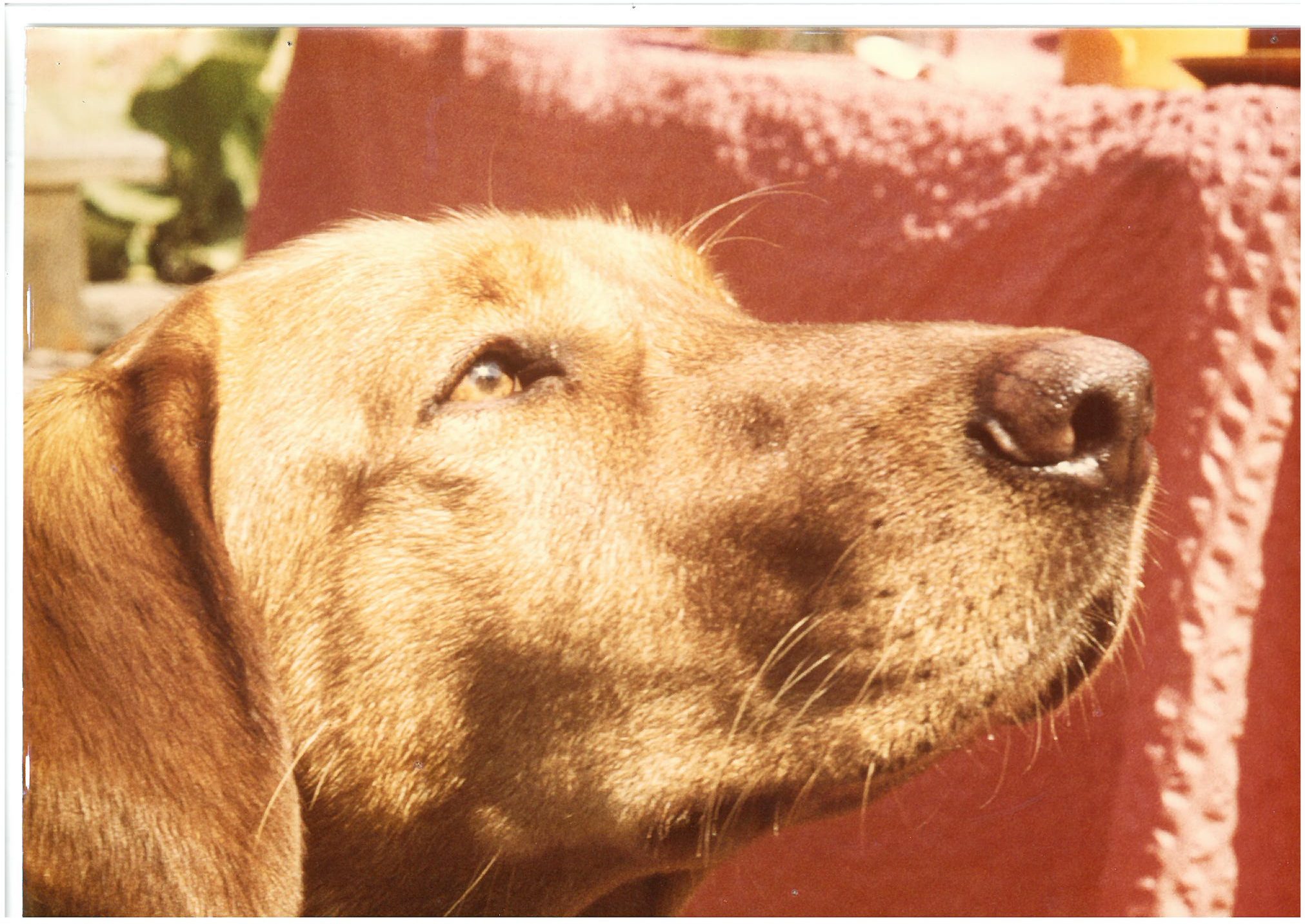
Our Animal Friends
Around this home, these days, it’s flashing-by wild creatures who wander the garden. Not animals who have been right close with us, for years; by your feet , under your feet, a foot away to catch the tossed bone, off & away.. over the gate….a go-crazy UP, hurtling the old Apple tree…
Get-togethers with friends includes animals and tales of animals. And when you take time to SEE them , they suddenly come into focus. Their BEING with, but distinct from US.
Co- dependent ? Lotta yanking on leads goes on….all around ?
TO READ THE STORIES OF OUR ANIMAL FRIENDS - CLICK HERE +
SADIE

SADIE was given into our care 3 years ago after we had visited a re-homing centre volunteering to adopt a dog. She is a Golden Cocker spaniel, now 14 years old and was a very mixed up little dog, with lots of behavioural problems, having never being socialised, trained or taught to walk on a lead. She really didn’t like people and other dogs, but proved to have a strong will and determination having had to fend for herself as she was left alone, locked in, for 12 hours a day in her previous life. She is a challenge!. We still have to be one step ahead of her but after a lot of patience and training we have at last gained her trust and she has wormed her way into out hearts.
Sue Yarwood
MATILDA

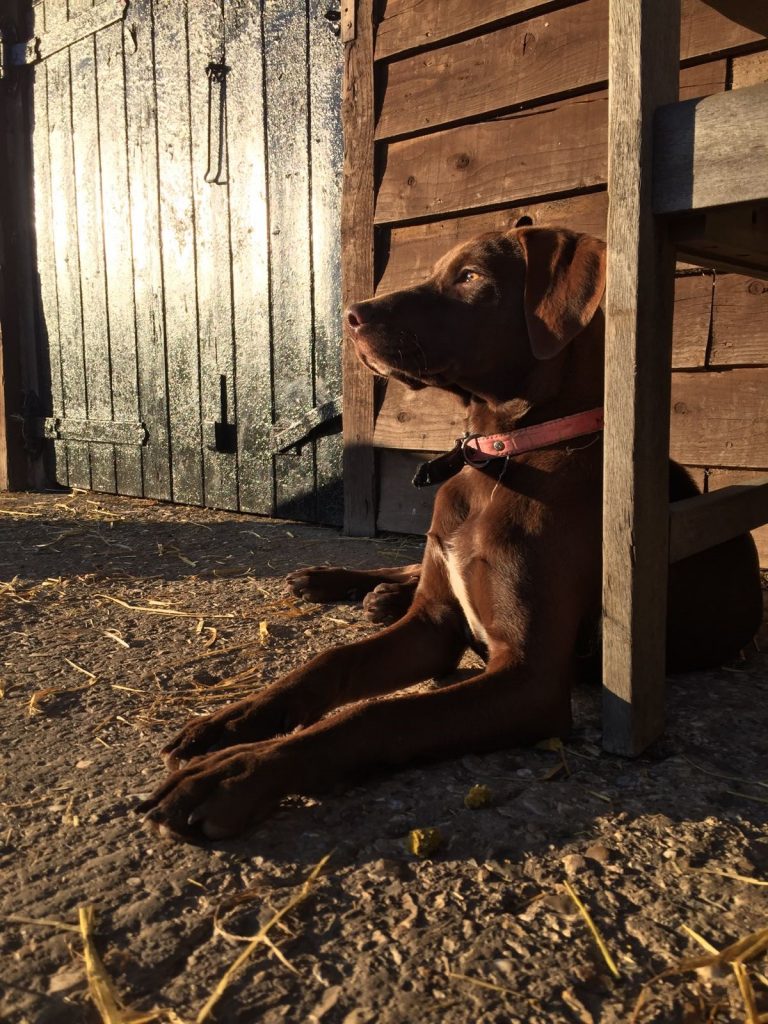
On driving past Pine Ridge dog sanctuary in Ascot, I always knew I would go there one day!
The call to get a dog became so strong this winter that it was impossible to focus on anything else.
We went to Pine Ridge (such a lovely setting for a dog sanctuary) on my birthday in late November. On meeting MATILDA for the first time we all knew she was the most wonderful puppy. She had been rescued and hand reared with her brother in Spain.
She has been a joy and delight and really completes our family. We think she is a Pointer and Labrador cross. We knew her brother Milo was also at Pine Ridge so we went to see him with Matilda. Although he is a wonderful dog we felt two puppies at once would be too much.
The happy outcome is that our next door neighbours saw a picture we had taken of Milo and he now lives next door! Matilda and Milo are ever so happy to see each other and play beautifully together.
Alex Jolly
BERTIE
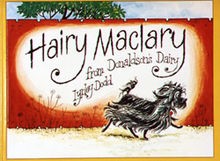

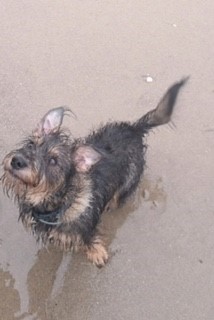
Everyone thinks their dogs are extra special of course and I am besotted by my lovely Snorkiejack (Schnauzer, Norfolk, Yorkie, Jack Russell cross) called Herbert or ‘BERTIE’ for short.
I realised early on that he was an ‘uplifter’ not just of humans but for other dogs too. When he was 3 months old he went up to a little boy in the street and started frantically licking the boys’ right knee (who had trousers on). His mother told me he had fallen over that morning and badly cut his knee and had a big bandage on his leg under his trousers. The little boy thought this was wonderful.
After a short while of walking with him I also discovered that he has the most wonderful effect on ALL dogs. No matter how techy or snappy the dog he always gets them to play with him much to the owners’ surprise. One day we met a very depressed black Labrador called Jack who had been depressed for the last 3 years since his doggie companion had died. He was very sad, hadn’t played or run since and clung to his owners side resisting all initial attempts at play by Bertie who was jumping up at him and egging him on for a chase. After about 2 minutes as I chatted to the owner, it suddenly picked its head up, barked at Bertie and went on a ‘mad run’ with Bertie in hot pursuit. They had a wonderful play and he has been cheerful ever since.
Right from the start he had this ability, even in puppy school all the trainers wanted him in their class as they said he had a steadying and calming effect on the other dogs! What a joy he is on every level, reminding me to have fun much more often too. For those of you familiar with the lovely New Zealand children’s books he also looks the spitting image of ‘Hairy McClary from Donaldson’s Dairy’.
Sarah Cox
PIP, SNUDGEY, BIANCA AND WALLY
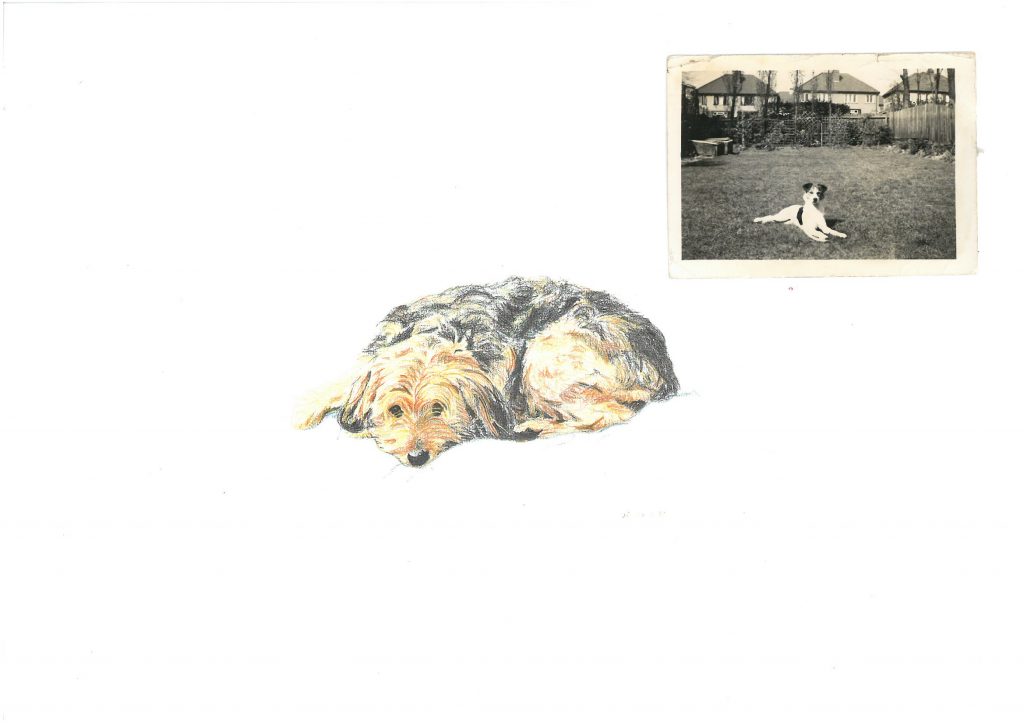

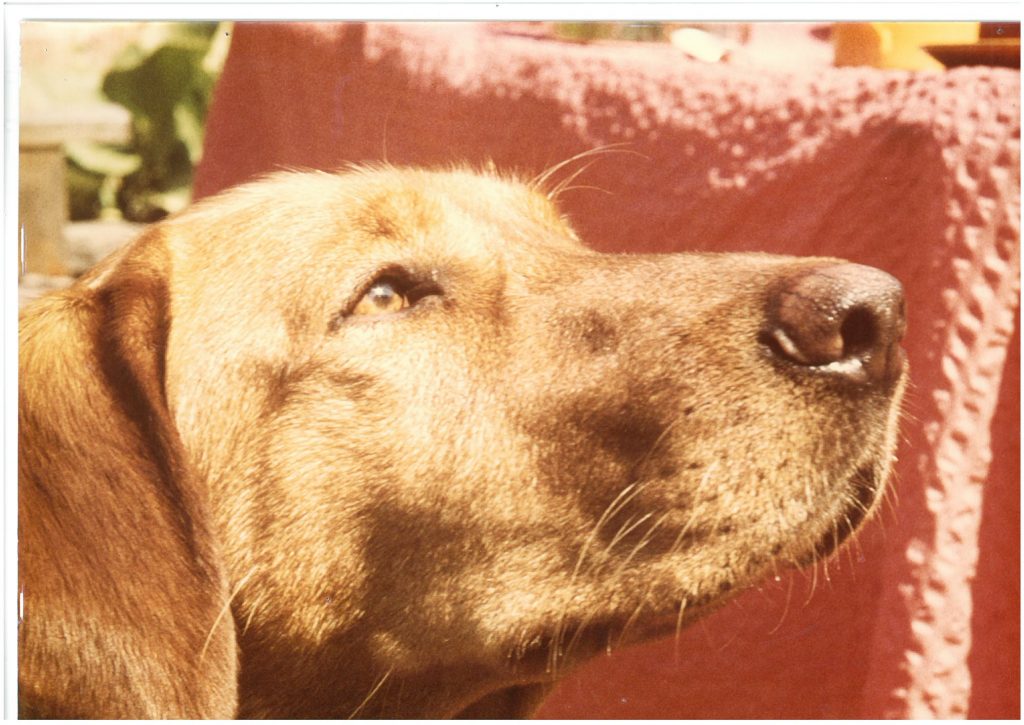
“Come ON, hurry UP. We’re going to Birmingham”. ” What for?”; shouted back twelve year old me. “To get you a puppy!” Ohhh! I tell you…Bliss. Been ASKING for years!!
Very small, very chilled terrier PIP came home; sat in the hearth for a week scarcely shifting, to my great disappointment … but then rallied to be my companion all the remaining girlhood.
A second dear creature arrived some twenty years later, SNUDGEY; tiny tabby kitten, in 10″ x 10″ box, huge Remembrance poppy around his neck. A bold cat from the start. Competed for food-attention with three small children by hurtling up and down the stairs, scratching the carpet to shreds.
Next was BIANCA, a Golden Labrador. Her claim to fame was her attachment to the near-by hospital. “Hello, Cook here! Your lovely doggie’s had her dinner and I gave her a big bone. Could you come and fetch doggie, now ?” Off I’d shoot down main road, around traffic island .. all negotiated efficiently by lone-traveller, Bianca !
Last of our beloveds was WALLY, “named” a Siberian Otter Hound…well! A hugely fluffy being who’d jump and run-away, like the clappers. After many years as ‘side by side’ pal….where I was, there was Wally…. he died. A four year old Grandchild grieved. Calling her Mummy in the middle of the night:- “I fink Wally gone for long walk. I looked for him EVERYWHERE. Wally dis-ap- pear-ead”
Anne Yarwood
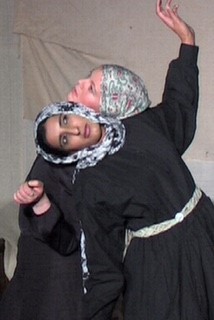
‘TAKE TWO’
a play about an aspect of the Palestinian conflict,
Writer Jennifer Leach, Director Justin Butcher, Producer Anne Yarwood
ART IS NOT A MIRROR TO HOLD UP TO SOCIETY, IT IS A HAMMER TO SHAPE IT. Thomas Merton
Autumn 2014 attracted 200 into two local Anglican churches to watch a whipped-up-from-nowhere small AmDram group perform this new play. Significant statements in that sentence; 200 is a big audience for around here, for a political play and Anglican churches welcoming contention is uncommon.
It all began one day when I awoke to a strident imperative – ” MAKE A PLAY” … so 9 months later, “we” DID . I produced, with friends and no starter money ( same old tale) an half hour, six person play which gave voice to Palestinian & Israeli anguish in the long-time impasse.
The following observations will be familiar to all of us who move beyond the inspiration of a GREAT IDEA, into making it happen.
I suggest that some significant STARTER QUESTIONS are... TO READ MORE - CLICK HERE +
I suggest that some significant STARTER QUESTIONS are…
*from which direction did the Lightening strike? A personal investment in a cause? some hurt long sustained ? A recent awakening?
*In Hero’s Journey terms…how did we start? how actually did we move to action from TALK & BROODING?
*Where did the companions come from? Challenging myself and friends with the issue of ACCESS to involvement , as an equality practice…who did we see as comrades ?
*Money! Did we think through the answer to who’s to be paid, who pro-bono.. and why? And how did that decision affect fund-raising decisions?
*If a new acting group, how did we enroll ?
*If a contentious subject, who will welcome us into their space?
TAKE TWO’s ANSWERS include the following:- :-
The INSPIRATION came from two old friends of my family who visit Israel and the Occupied Territories, returning to detail their witness. It was respect for their commitment, my own reading and facts from ICHAD, Israeli Committee Against House Demolitions, which burrowed into my conscience. Then THE DREAM : DO IT ! There was no escape from my genetic Justice credo.
NEXT I talked with a few people whom I knew were concerned about the Palestinian conflict . We were a white middle class huddle. No thought to invite joiners beyond people we knew and trusted.. with the exception of a Jewish friend who added valuable insight to the initial discussions about our Purpose. He left the group after two meetings. We never really found out his specific reasons for departing. An example of limited ENERGY for detailed follow-up.
MONEY. We had none. From the start, fees to Writer & Director were agreed . Everything else was freely given including the rehearsal and performance space in ALL SAINTS, Ascot Heath . We made a donation to ST. BARTS , Reading in accordance with their rules. These costs meant we had to venture CROWDFUNDING together with approaches to local Trusts .By a squeak, the final account balanced through the generosity of close friends and politically aligned groups. That said, there was deliberate intention to use detailed funding applications to engage Ascot charities in particular, in committee discussion about the relevance to Ascot of the play.
THE ACTORS came only from amongst known contacts, try as we did to widen the net’s spread. This limited response demonstrates the ferocious tenacity to intention, that is needed in the social, cultural & political clime of this part of the UK, to attract participation in radical political issues. (200 audience from population 104,000 District Windsor/Maidenhead )
SYNCHRONICITY .. Carl Jung’s “meaningful coincidences” carried Take Two to unexpectedly outstanding success.
Finding two superb artists was a miracle. First the highly acclaimed writer, Jennifer Leach, a professional artist who set up her own company in 2010 to create new ground-breaking theatre and art. The convenor of our playreading group had introduced us to Jennifer and her play Where Then Shall We Start?, an anti-war work staged at the Queen’s House, Greenwich 2014 during the centenary year of WWI.
ASCENT Environment network ventured to commission from her Take Two. The script would “SPEAK TRUTH TO POWER”, a key imperative for the environment group. Our second miracle was finding Justin Butcher as our Director. The founding-friend-the-vistor to Israel & Palestine had heard of this outstanding director, actor, writer, musician who actively supported the Palestinian cause. Jennifer and Justin met; THE IMAGINATION ACTED, WONDERFULLY!
ON REFLECTION
As the instigator, I was exhausted within the buoyancy of our brilliant success. ( pix .. spy me floating in an inflated ring across the Greeness of Blue Ascotia).In such pop-up endeavours, WHO SUSTAINS THE MOMENTUM ?
Heart-lands dig in, to the glory of the faithful. Changes in the Political climate buffet funding security. The Imagination is summoned again, as a Mother. She’s given birth, but the babies are yelling. They thirst.
Anne Yarwood
The Imagination Acts
https://theimaginationacts.co.uk/
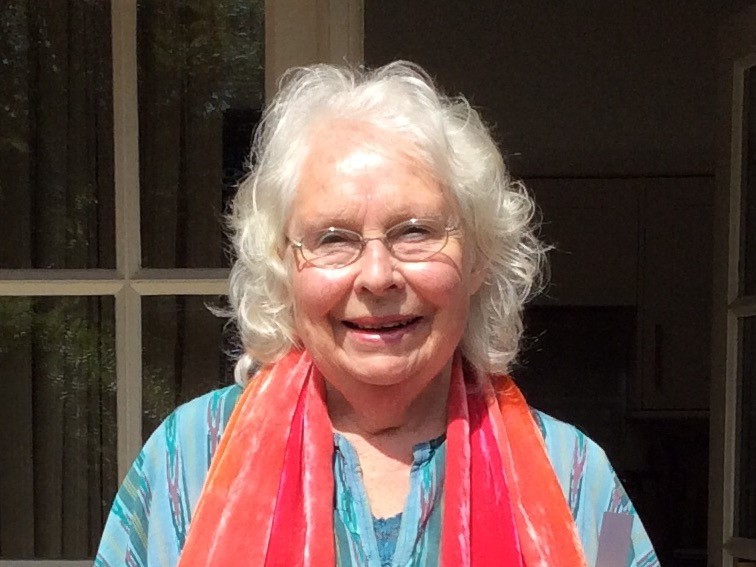
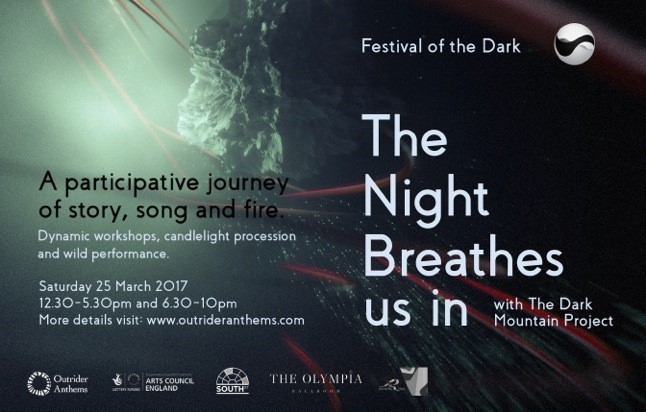
Festival of the Dark –
Festival of the Dark is about to become a micro-festival of small organic events in small spaces, with big soul and big love.
Our beautiful event on 25 March, The Night Breathes Us In, will be the last of its kind in the year.
If you are free and can come, please do. Please also make a conscious effort to engage others, and to bring them with you on this journey.
We have 20 performers, musicians, singers, storytellers, bringing their extraordinary gifts to Reading. TO READ MORE ... CLICK HERE +
It will be a day of creation that has been uniquely devised for our town. This is a rich offering and one that our Festival team would like to be honoured.
We currently have sold too few tickets to make it the full, celebratory event it has been envisaged as. Tickets are £13 for each session. The afternoon session will be made up of three separate opportunities for creative explorations of aspects of darkness. The evening session will be a candlelit procession through Reading, followed by a magical evening around a campfire, with stories, song, music, performance. Led by unparalleled practitioners. The day will end with a grand toast to community, beneath the night skies of a Spring Equinox.
Changing narratives, hearts, minds can only happen if we work together in community. For all of you who are wanting positive change, could you consider supporting this event with your unique presence? Sometimes we have to rest in trust upon the fact that our presence is required. If you are free and can come, please do. Please also make a conscious effort to engage others, and to bring them with you on this journey.
The financial games of any creative event are challenging. Not a game we wish to be playing. If anyone of you wants to come and cannot pay, we would like to welcome you without question, so please let us know.
Let us make it, together, a festivity to remember!
Warm wishes,
Jennifer, Hollie and the team
Please contact Hollie Brader, Project Manager for Festival of the Dark 07583748265 for further details
Outrider Anthems – Find us on Twitter and Instagram @outrideranthems – https://www.facebook.com/OutriderAnthems/
The TALES presents the full script for the ‘Take Two’ Play by Jennifer Leach
Jennifer Leach
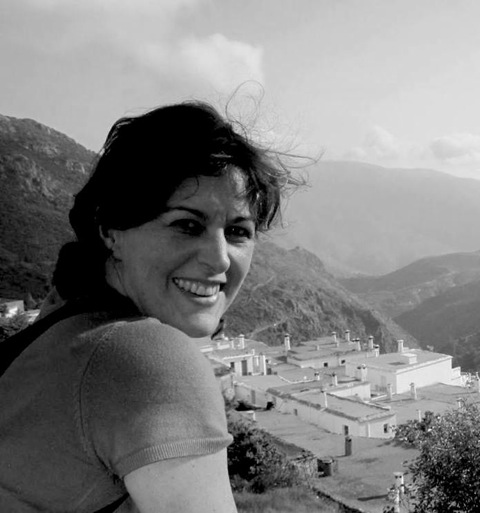
HOPI PRAYER
“You have been telling the people that this is the Eleventh Hour, now you must go back and tell the people that this is the Hour. And there are things to be considered . . .
Where are you living?
What are you doing?
What are your relationships?
Are you in right relation?
Where is your water?
Know your garden.
It is time to speak your Truth.
Create your community.
Be good to each other.
And do not look outside yourself for the leader.”
Then he clasped his hands together, smiled, and said, “This could be a good time!”
“There is a river flowing now very fast. It is so great and swift that there are those who will be afraid. They will try to hold on to the shore. They will feel they are torn apart and will suffer greatly.
“Know the river has its destination. The elders say we must let go of the shore, push off into the middle of the river, keep our eyes open, and our heads above water. And I say, see who is in there with you and celebrate. At this time in history, we are to take nothing personally, Least of all ourselves. For the moment that we do, our spiritual growth and journey comes to a halt.
“The time for the lone wolf is over. Gather yourselves! Banish the word struggle from you attitude and your vocabulary. All that we do now must be done in a sacred manner and in celebration.
“We are the ones we’ve been waiting for.”
— attributed to an unnamed Hopi elder
Hopi Nation
Oraibi, Arizona
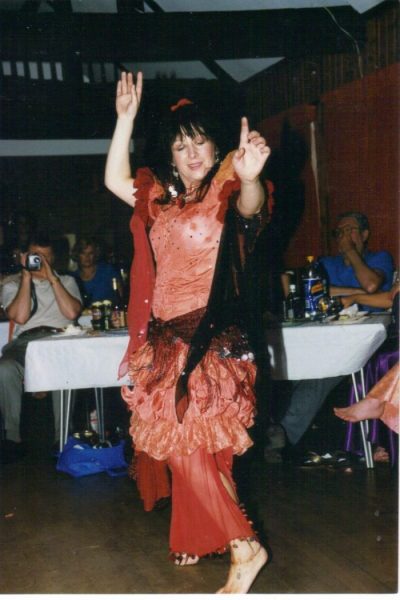
To My Best Friend
This week’s Story is Hilary Davis’s memories of Tina Messenger
Memories of Tina - To read ... CLICK HERE +
To My Best Friend,
Tina, you have given me so many memories.
You led me through Colourful Festivals and Quite Forests.
To ‘age old’ places with Sacred Mounds, Burrows and Silent Pools.
Around Standing Stones and Uffington White Horse and Wayland Smithy.
We followed trails of Kings and Monks, Myths and Legends.
We camped below Glastonbury Tor, in the apple orchard.
Where the Mistletoe grew so low on the trees that you could just reach out and touch it. I remember it snowed
But still we looked in ‘ore’ at the ancient Oaks of Gog and Magog.
Tina could read the Stars, the Cards, Stones and even Twigs
and bring them all to a meaningful focus for the here and now.
The evenings I remember best are just sitting around an open fire, drink in hand talking about the things we wanted to do, our hopes and dreams. And at some point, her trusty recorder would come out and we would have music.
Tina was never happier than when she was studying. Although suffering pain for a lot of her life she was a firm believer in the ‘wholeness of a person’.
She became a qualified Therapist, studying Anatomy and Physiology, Massage, Aromatherapy, and Reflexology.
She attended a Counselling course at East Berkshire College and read Theology at Oxford Brooks.
Tina was also a qualified and inspiring dance teacher who taught many genres of dance, Latin. Middle Eastern and even Bollywood.
And as a talented Artist and Designer, she enriched all our lives with her work.
I remember how much she loved nature and animals
and how knowledgeable she was about them.
Tina, you never gave up on anyone. You gave unconditional love.
You were kind and caring and although sometimes complicated and confusing,
You were So Worth It.
Your friend forever
Hilary xxx
12 March 2017
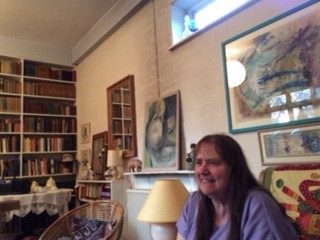
The GALLERY shows a series of Tina’s drawings, using coloured pencils.
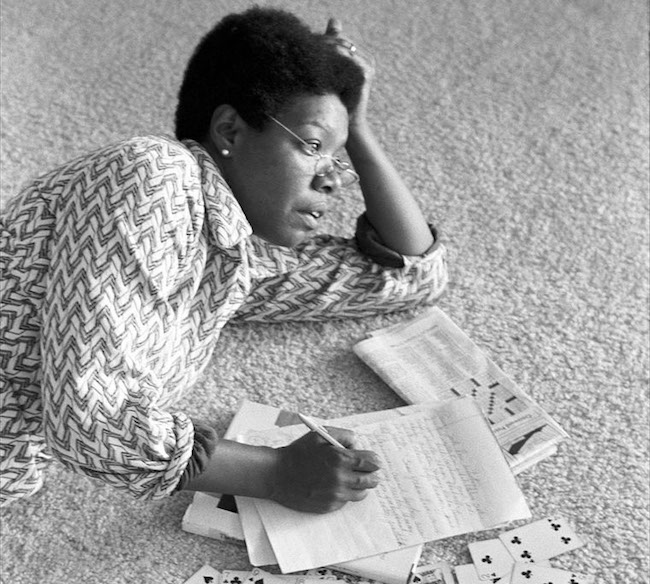
Maya Angelou
To read ' Still I Rise' ... CLICK HERE +
Still I Rise
You may write me down in history
With your bitter, twisted lies,
You may trod me in the very dirt
But still, like dust, I’ll rise.
Does my sassiness upset you?
Why are you beset with gloom?
‘Cause I walk like I’ve got oil wells
Pumping in my living room.
Just like moons and like suns,
With the certainty of tides,
Just like hopes springing high,
Still I’ll rise.
Did you want to see me broken?
Bowed head and lowered eyes?
Shoulders falling down like teardrops,
Weakened by my soulful cries?
Does my haughtiness offend you?
Don’t you take it awful hard
‘Cause I laugh like I’ve got gold mines
Diggin’ in my own backyard.
You may shoot me with your words,
You may cut me with your eyes,
You may kill me with your hatefulness,
But still, like air, I’ll rise.
Does my sexiness upset you?
Does it come as a surprise
That I dance like I’ve got diamonds
At the meeting of my thighs?
Out of the huts of history’s shame
I rise
Up from a past that’s rooted in pain
I rise
I’m a black ocean, leaping and wide,
Welling and swelling I bear in the tide.
Leaving behind nights of terror and fear
I rise
Into a daybreak that’s wondrously clear
I rise
Bringing the gifts that my ancestors gave,
I am the dream and the hope of the slave.
I rise
I rise
I rise.
From And Still I Rise by Maya Angelou. Copyright © 1978 by Maya Angelou.
BBC iPlayer Documentaries “Imagine” . Maya Angelou BBC ONE 28/2/17
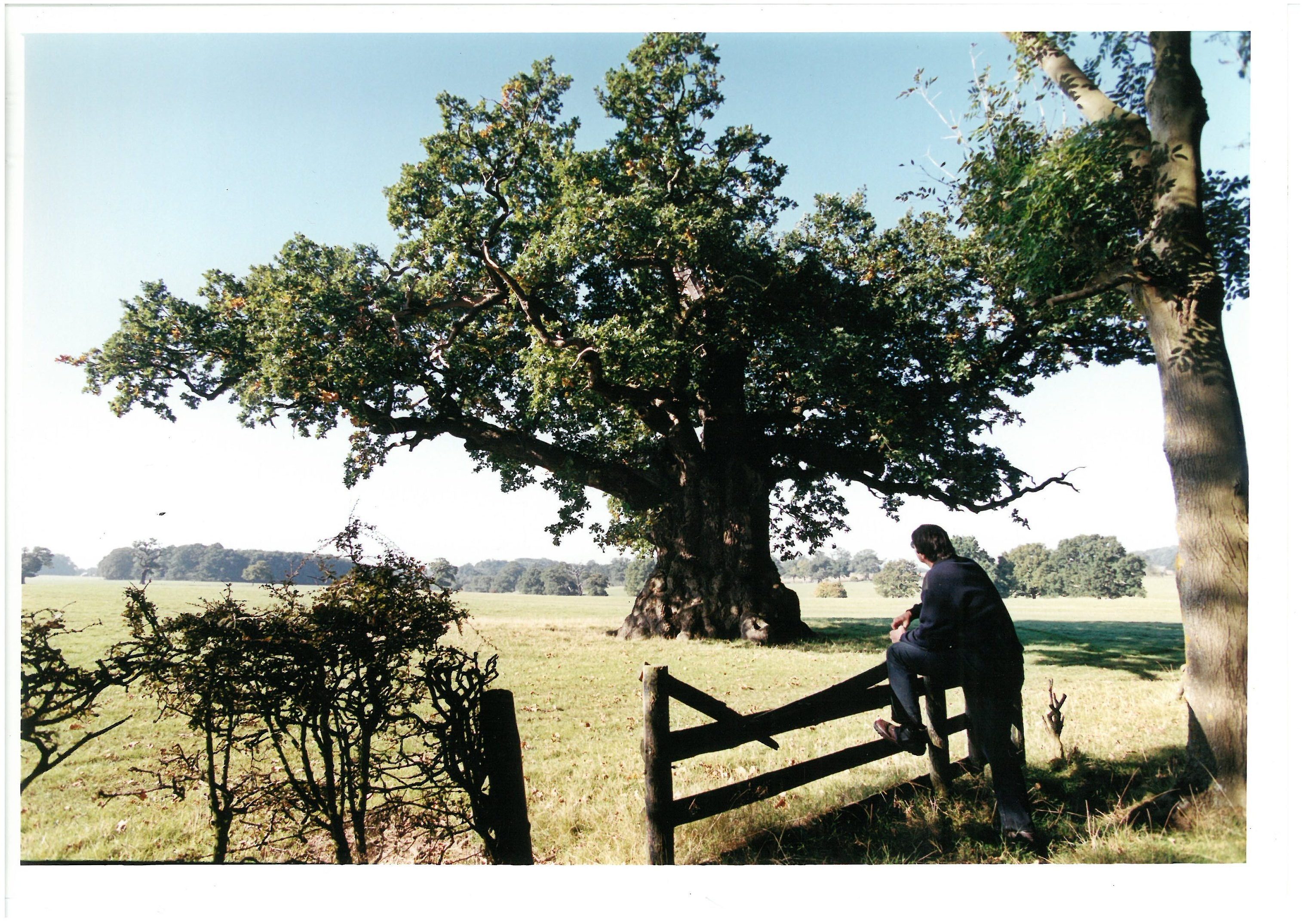
Steve, Man of the Woods
Steve joined the growing band of local people concerned to Speak Up & Speak Out about the environment during the past ten years. Part of the myriad community groups world-wide , galvanised by the challenge of Climate Change. In Steve we had a man of the woods, as strong and friendly as the mighty Oak with a deep connection to nature.
This reflection has been generously written for the website by his widow Christina and son David
For Christina and David's personal perspective ... READ MORE +
Steve’s dad was a forester for the Forestry Commission and it was a very proud day for him when Steve decided that to become a Forest Manager would be his chosen route too. Following a lively study period at Newton Rigg he went to Thetford and from there to Windsor Great Park.
When I met him in 1982 he was living in an idyllic cottage in Ascot, racing around the forest areas in his Renault van, peering upwards to spot overhead birds, binoculars round his neck, sleeveless jerkin on and more often than not, the familiar cigarette in his hand.
31 years later, my description would have many similarities, although significantly he had retired through ill health which meant that things were not ‘quite’ the same for him and his family and friends.
For 27 or so years though, Steve was, the man of the woods; as strong and friendly as the mighty Oak with a deep connection to nature – through his work with trees, his love of conservation and birds and his affable nature – remembered by many. He often said his hobby was also his work. He has left me six sets of binoculars of various sizes…they aided him in his birdwatching particularly at various ponds in the Park. The bookshelves are still full of wildlife books – a love of nature programmes reflected in the many Christmas and birthday gifts he received. I remember how useful he found one in particular – animal droppings identified! This would help him solve many puzzles of what had been in the garden or nearby area overnight. Steve monitored bats for conservation reports, and garden birdlife for the RSPB. He knew a lot about a lot. This extended to cars, rock music and to rugby. I will restrict this reflection to the nature and forests.
As Steve travelled round the Crown Estate areas he recorded a lot in photos. Often quiet and reserved in his inner thoughts, the 40 or so annotated photo albums he compiled over the years, reflect his interest and love of trees. I hope the attached selection helps you accompany him on some of his travels.
When Steve died suddenly, David wanted to speak at his funeral. He reflected on the time Steve had for him, as both a child and a man, and the time he had for others. It seems that time is such a scarcity in this current age. Through Steve’s eyes; eyes that saw the world very differently from the way mine did for some time, I am now able to enjoy so much of nature that I would not have seen, had it not been for him. David works with creating natural sets in otherwise sterile spaces in the film industry, something that brings him great pleasure and is a direct influence from Steve and his love of nature. To be in touch with the strength of nature is a wonderful experience and we thank Steve for introducing us to it in such a significant way.
Christina and David Searle
Autumn Leaf
Suspended so delicately,
So tenuously,
Barely visible.
A thread joining the autumn falling leaf to the powerful oak.
How long will it glisten and catch the light?
Tremor to the forces that batter and billow from side to side?
It twizzles
And slowly rewinds to its former state
How many times?
For how long?
Before it drops…
Silently failing and fading, joining the many leaves that cover the track.
Leaf upon leaf;
Autumn shades blending, shuffling, separating,
Getting closer and closer, more and more compact,
Weathered and covered;
Hard to discern.
Yet in the moments of suspension, in transition
It is the only one visible.
Seen as never seen before,
A leaf of beauty, delicate, vulnerable;
Seen from many different aspects,
Different angles of light and shade, looking up to, looking down from…
Still one leaf.
Living, transitioning and fading
Part of the ground, the cover, the strength, the soil
A unique fertility
A special leaf
The one that caught my attention and from which I learned to stop and see.
Christina Searle
19 February 2017
The GALLERY shows a series of photos taken by either Christina or Steve that show his love of forestry in all its guises and of his immediate family, from David as a youngster on the woodpile to their last time all together in Sydney in March 2013.
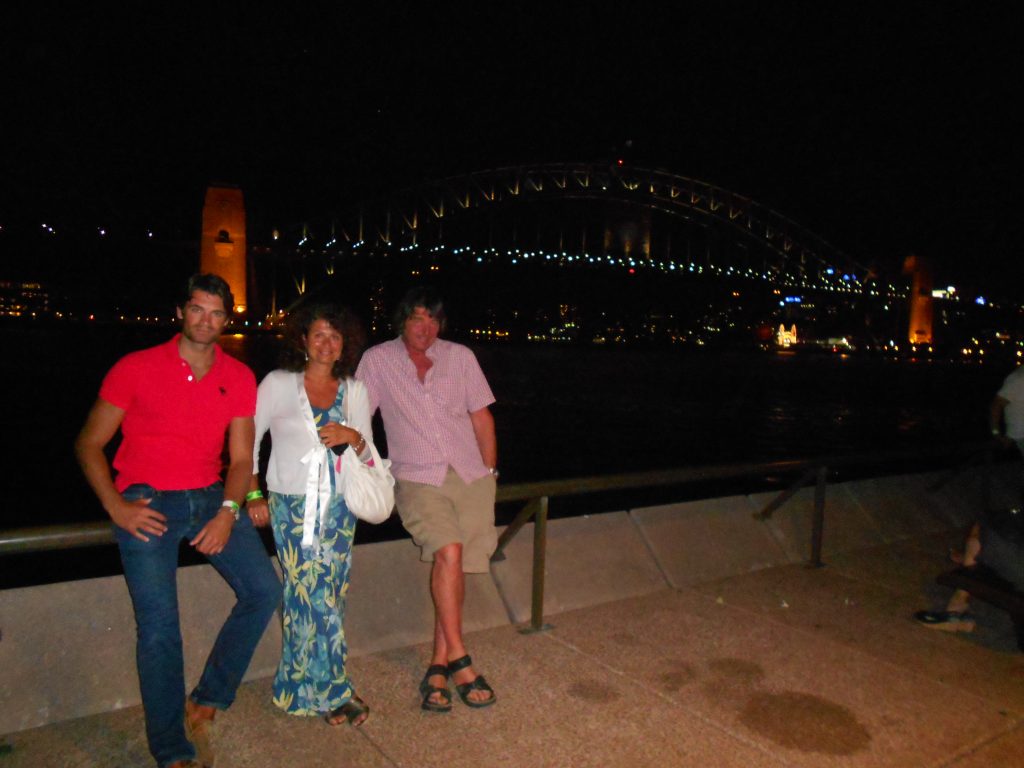
Steve, Christina and David, Sydney Harbour, Australia – March 2013
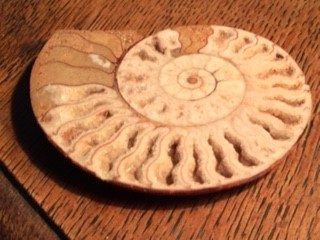
Reports and Updates
This website opened in June 2016. Its aim is to report personal and group Stories about Imaginative Action.
So here’s the first Update giving hot news which illustrates some of the Action swirling around : swirling around Indra’s Net.
– FESTIVAL of the DARK
– SUPPORT for the charity CALM
– NEWS from a local HOMELESS project
– ENVIRONMENT group on AFFORDABLE HOUSING
– LOCAL demo : NHS funding crisis
PIX GALLERIES to anticipate :- Trees in The Great Park ; Our Animal Friends ; Painting from Meditation ; The Light House Project ; Chairs and Resting Places ; Handmade stuff, around the Home
We're delighted to give you updates on these ACTIONS ... READ MORE +
Let There Be Dark! FESTIVAL of the DARK Launch – Jennifer Leach reports :-
The day before the launch of our Festival of the Dark, on winter solstice (21 December 2016), we received the good news that we had been successful in our Arts Council funding bid; our act of faith in launching an unfunded festival had paid off.
The launch, Let There Be Dark! was a magical evening, and an act of courage on the part of all those who attended. Volunteers and helpers spent most of the day preparing the space, clearing the energy, investing the Olympia Ballroom with incense, greenery, beautiful drapes to mark space, and good intentions. Supporters travelled from Cumbria, Cambridge, Bristol, Winchester, London and Southend, in order to hold space and focus spirit.
The night began with a meal in the dark, and interestingly, I think all there would have wished that the darkness of the room was more complete. Finding deep darkness is clearly going to be a challenge in the coming year.
The room was filled initially with a great deal of chatter, polite ‘wedding-reception’ conversations overriding the polyrhythmic wonders of Eddie Chilvers’ sublime piano playing. There was very much a sense that the challenge of the situation was being parried. Immediate intervention did not, however, seem appropriate – we need collectively to decide how we want to move forward on this journey.
At the end of the meal quiet was requested, people settled on cushions, or lay down on the carpet, and the piano brought, at last, a sense of presence to the room. This was maintained throughout Dancing in the Dark, my spoken word piece performed with Racquel Jory-Phelps – the Baba Yaga moment of the night, the tough exploration of fear in the dark woods. We all came through it intact, led gently back by the Bwiti harp, the sacred acoustic instrument of Gabon. The night ended with an immersion in the riches of Padimi Healing Sounds’ instrumental and vocal ‘sound bath’.
The pathway that has opened up for us following this event has been clear. There is no need, I believe, to disguise events as mainstream. They are not, people are keen that they are not; we can progress with the spiritual wraps off, as it were. Since my last blog, we have received the full support of Reading Buses and their farsighted CEO. Buses will be used as pop-up theatres and for a drive-in film screening, and our events will be publicised across their onboard network. There is also a resistance within certain institutions in Reading – the old patriarchal structures are struggling with our presence. A Festival of the Dark is bad enough, but run by two women to boot…!
Our next event marks the cross-quarter ceremony of Imbolc on the Celtic Wheel of the Year – a Dark Renga communal poetry workshop (11 February), to be held in a fire-warmed yurt in an area of ancient woodland. The Spring Equinox follows with The Night Draws Us In (25 March), a day of workshops, an evening procession through Reading, and a night of performance, sound, singing and community around a bonfire on a wild island in the Thames. Beyond that, endless suggestions and dreams shaping up into realities.
More support is needed to enable this all to happen in a fertile and stressfree fashion. If anyone reading this feels they could contribute in any way, please contact me on jennifer@outrideranthems.com. If you would like to be updated on events, please visit www.outrideranthems.com and subscribe to our newsletter.
It’s going to be a powerful festival, and a remarkable year!
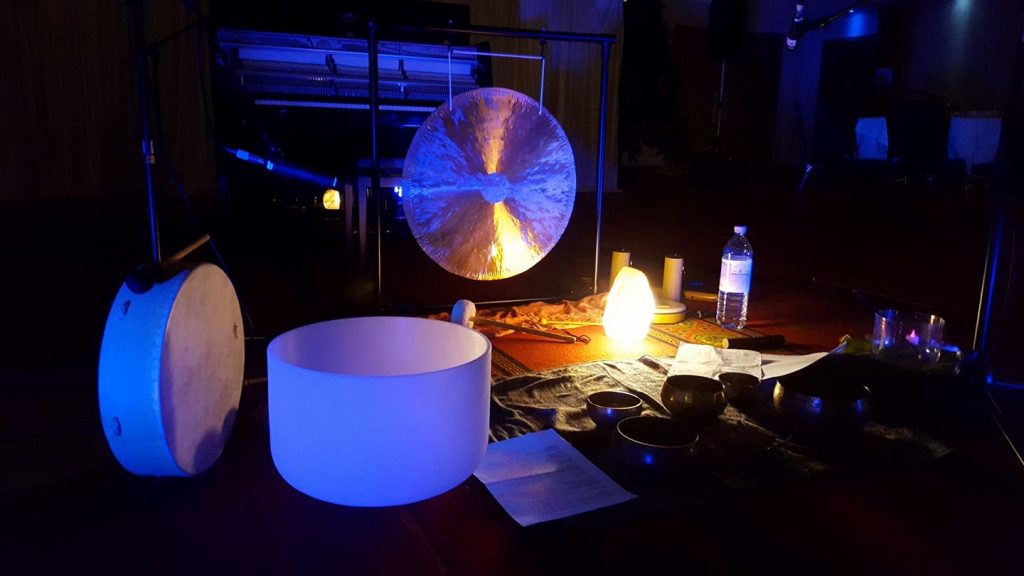
SUPPORT for the charity CALM – REACHING THEIR GOAL – Anne Yarwood reports :-
Three 11 year old boys, on their own initiative, raised £1000 for the national charity CALM: Action Against Living Miserably. This is Reading Bus Company’s charity of the year which raises awareness, whilst offering support to men who feel suicidal.
The boys got small audiences to join them, singing Christmas Carols.
NEWS from our local WINDSOR HOMELESS PROJECT – Sally Wright reports :-
14 guests housed.
8 guests off Heroin and onto Methadone Script and engaging with Smart (Drug and alcohol Team based in Slough.
I guest into full time work.
After much consultation by Murphy the manager with the Council at RBWM the Housing options team will stay in Windsor rather than relocate to Maidenhead.
Great recruitment drive for volunteers so we now have over 60 volunteers.
New Developments on the horizon :-
Setting up a buddy system so that our vulnerable, often lonely, adults who have just been housed can have on going support as they take small steps to regain their self esteem and help them on their next step to reintegrate into “society” ( What ever that mean!!!)
Setting up a prescribing centre in Windsor for our guests who at the moment have to go to Maidenhead to receive their script for Methadone.
Ongoing need to fund raise so we are Planning our 3rd Sleep Out on Friday March 10th At the Alma Rd Youth and Community Centre. Please see our web site for Further details www.windsorhomelessproject.org
ENVIRONMENT group on AFFORDABLE HOUSING – ASCENT’s Response to District Council’s Planning Consultation : –
Dear Colleagues,
The aim of ASCENT (Ascot and Sunnings Community Environment Network) is to help catalyse our local community for an historic push to make where we live more resilient, healthier and bursting with strong local livelihoods, while also reducing our collective ecological footprint.
ASCENT’s Core Group this evening discussed the issues raised in the Consultation. We wish to restrict our comments to a single issue, namely absence of commitment to low-cost sustainable housing.
RBWM’s proposals, for which we are being consulted on, seem to be catering almost exclusively for transforming our community further into the preserve of elite sectors of society, with a strong focus on high-value, low occupancy housing.
Many of us are aware of the considerable difficulties in recruiting staff from a lower income band, such as new school teachers and hospital staff. We are aware that requisite provision by Developers of this category of housing is primarily ” dealt with” by transferring such property development to areas outside our Parish boundaries, where land values are lower.
It is absolutely UNACCEPTABLE for Local Authority Planning Authorities to FAIL TO PROVIDE HOUSING for lower paid ESSENTIAL WORKERS. This not only exacerbates geographical inequalities, with our area increasingly becoming the preserve of the rich and powerful, but is also clearly socially, economically and environmentally unsustainable. Key workers will have to commute long distances in order to cater for the crucial services needed in our area, while large mansions with low-density occupation significantly contributes to increases in per capita resource consumption and carbon emissions.
Our children’s education, the health care of us all, and the sustainability of society and the wider environment, deserves the respect of us all, but especially, respect from the decision-makers that are supposed to forward the interests of the community as a whole rather than select interest groups, such as profit maximising developers.
This needs to be demonstrated by the RESOURCE ALLOCATION PRIORITIES FOR OUR WHOLE COMMUNITY. It is a question of EQUITY. It is one of the issues, nationwide which Brexit highlighted.
WHO GETS WHAT, HOW, WHEN and WHERE are fundamental political questions in the broad sense of the word.
We strongly urge RBWM to reconsider its development strategy in order to heal what is clearly an increasingly broken and unsustainable society.
Sincerely,
Anne Yarwood, Andrea Berardi on behalf of ASCENT
LOCAL Ascot March on 28 January 2017 – NHS funding crisis – Newspaper coverage :-
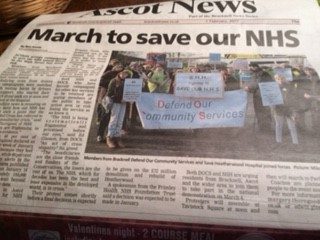
Protesters march in Ascot to oppose NHS cuts
Cheers from roadside cafes were heard as protesters marched through Ascot High Street on Saturday to oppose ongoing cuts to the NHS.
Starting off at Ascot Racecourse, about 30 marchers holding banners and chanting ‘save our NHS’ made their way to Heatherwood Hospital.
,kThey were met with applause by people sitting outside a roadside cafe and motorists hooting their horns in support.
The protest was carried out by members of the Save Heatherwood Hospital campaign group and Bracknell’s Defend Our Community Services.
Before they set off, demonstration organiser Margery Thorogood said: “The NHS is in crisis. If we don’t really rally together we are going to lose the NHS.” She accused the Prime Minister of ‘cosying up’ to US President Donald Trump and said she and the Government is pushing for ‘creeping privatisation’. The campaigner went on to say: “Other marches are taking place across the country, we are not in isolation.”
Margery has fought against NHS cuts for many years and has called for a return of maternity, rehab and minor injuries services to Heatherwood Hospital.
Reported by James Hockaday, 30 Janaury 2017, Slough and South Bucks Express
http://www.sloughexpress.co.uk/gallery/ascot/110574/protestors-march-in-ascot-to-oppose-nhs-cuts.html
Anne Yarwood
6 February 2017




